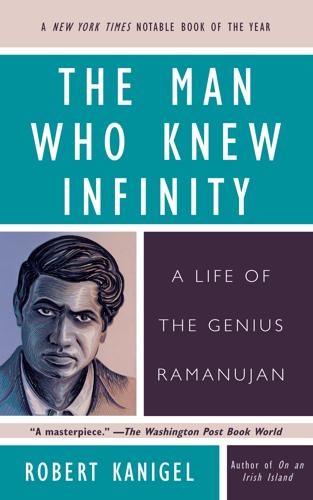
The Man Who Knew Infinity: A Life of the Genius Ramanujan
by
Robert Kanigel
Published 25 Apr 2016
Ramanujan was alive, though bloodied enough to leave his shins deeply scarred. He was arrested and hauled off to Scotland Yard. Called to the scene, Hardy, marshaling all his charm and academic stature, made a show of how there, before the police, stood the great Mr. Srinivasa Ramanujan, a Fellow of the Royal Society, and how a Fellow of the Royal Society simply could not be arrested. In fact, Ramanujan was not an F.R.S. He would hardly have been immune from arrest in any case, and the police were not fooled for a minute. But they investigated, learned Ramanujan was indeed reputed to be an eminent mathematician, and decided to let him go.
…
Either through the kind of formulaic letter of polite discouragement that important men learn to write, or by returning his unsolicited material without comment, or by ignoring his letter altogether, Baker said no. Ramanujan wrote to E. W. Hobson, an equally distinguished mathematician, also a Fellow of the Royal Society, and holder of Cambridge’s Sadleirian chair in pure mathematics. Hobson, too, said no. On January 16, 1913, Ramanujan wrote to still another Cambridge mathematician, G. H. Hardy, who at thirty-five, a generation younger than the other men, was already setting the mathematical world of England on its ear.
…
But in the midst of his confusion, he went to his director of studies, who brought another influence to bear on his malleable young mind in the person of Augustus Edward Hough Love. A thirty-three-year-old man with a huge, bushy mustache, mutton-chop sideburns, and a vast bald oval of a head, Love had been named, a few years before, a Fellow of the Royal Society, Britain’s most distinguished scientific body. In 1893, he’d finished his two-volume Treatise on the Mathematical Theory of Elasticity, summarizing what was then known of how materials deform under impact, twisting, and heavy loads. But Love did not push Hardy into his own field. Though an applied mathematician, he had a bent for fundamentals, basic principles, abstract formulations.
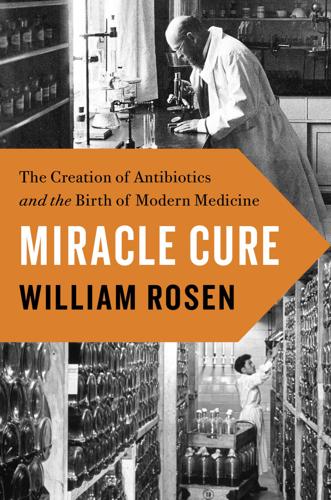
Miracle Cure
by
William Rosen
Published 14 Apr 2017
Journal of Health Economics 22, no. 2 (March 2003): 151–85. Dodson, G. “Dorothy Mary Crowfoot Hodgkin, O.M., 23 May 1910–29 July 1994.” Biographical Memoirs of the Fellows of the Royal Society 48 (December 1, 2002): 179–219. Doll, R. “Austin Bradford Hill, 8 July 1897–18 April 1991.” Biographical Memoirs of the Fellows of the Royal Society 40 (November 1994): 128–40. Douglas, S. “Georges Dreyer: 1873–1934.” Obituary Notices of Fellows of the Royal Society 1, no. 4 (December 1935): 568–76. Duggar, B. “Aureomycin: A Product of the Continuing Search for New Antibiotics.” Annals of the New York Academy of Sciences 51 (November 1948): 177–81.
…
Fischbach wrote a software program: (Zimmer, 2014) “the adaptability of the chemist”: (Bud, Penicillin, 2007) BIBLIOGRAPHY Abbott, K. “The 1904 Olympic Marathon May Have Been the Strangest Ever.” Smithsonian, August 7, 2012. Abraham, E. “Howard Walter Florey, Baron Florey of Adelaide and Marston, 1898–1968.” Biographical Memoirs of Fellows of the Royal Society 17 (November 1971): 255–302. Abraham, E. “Ernst Boris Chain: 19 June 1906–12 August 1979.” Biographical Memoirs of Fellows of the Royal Society 29 (November 1983): 42–91. Afflitto, E. Penicillin, Venereal Disease, and the Relationship Between Science and the State in America, 1930–1950. Ann Arbor, MI: University Microfilms/ProQuest, May 2012. Allan, N.
…
Princeton, NJ: Princeton University Press, 1949. Coghill, R., et al. Method for Increased Yields of Pencillin. U.S. Patent No. 2423873 A, June 17, 1944. Colebrook, L. “Almroth Edward Wright: 1861–1947.” Obituary Notices of Fellows of the Royal Society 6, no. 17 (November 1948): 297–314. Colebrook, L. “Gerhard Domagk.” Biographical Memoirs of Fellows of the Royal Society 10 (November 1964): 39. Comas, I., et al. “Out-of-Africa Migration and Neolithic Co-Expansion of Mycobacterium tuberculosis with Modern Humans. Nature: Genetics 45, no. 10 (October 2013): 1176–82. Committee on Statistics.
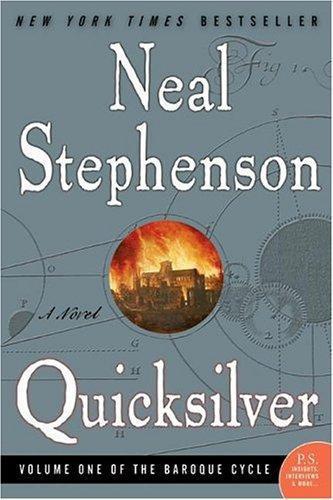
Quicksilver
by
Neal Stephenson
Published 9 Sep 2004
Kéroualle had relayed this to the King during some sort of Natural-Philosophic pillow talk, and his majesty had commissioned four Fellows of the Royal Society (the Duke of Gunfleet, Roger Comstock, Robert Hooke, and Christopher Wren) to find out if such a thing were really possible. They had asked one John Flamsteed. Flamsteed was the same age as Daniel. Too sickly to attend school, he had stayed home and taught himself astronomy. Later his health had improved to the point where he’d been able to attend Cambridge and learn what could be taught there, which was not much, at the time. When he had received this inquiry from the aforementioned four Fellows of the Royal Society, he had been just finishing up his studies, and looking for something to do.
…
“If your errand has aught to do with Philosophy, then is not Harvard College a more fitting destination?” “Mr. Root is a Natural Philosopher of note, sir!” blurts Ben, only as a way to prevent himself bursting into tears. The way he says it makes it clear he thinks the Harvard men are of the Unnatural type. “He is a Fellow of the Royal Society!” Oh, dear. The Don steps forward and hunches his shoulders like a conspirator. “I beg your pardon, sir, I did not know.” “It is quite all right, really.” “Dr. Waterhouse, you must be warned, has fallen quite under the spell of Herr Leibniz—” “—him that stole the calculus from Sir Isaac—” someone footnotes.
…
The crockery and other clues suggest that the ship’s a good three decades old, but unless you go down into the hold and view the keel and the ribs, you don’t see any pieces that are older than perhaps five years. None of the plates match, and so it’s always a bit of a game for Daniel to eat his way down through the meal (normally something stewlike with expensive spices) until he can see the pattern on the plate. It is kind of an idiotic game for a Fellow of the Royal Society to indulge in, but he doesn’t introspect about it until one evening when he’s staring into his plate, watching the gravy slosh with the ship’s heaving (a microcosm of the Atlantic?), and all of a sudden it’s— The Plague Year SUMMER 1665 Th’earths face is but thy Table; there are set Plants, cattell, men, dishes for Death to eate.
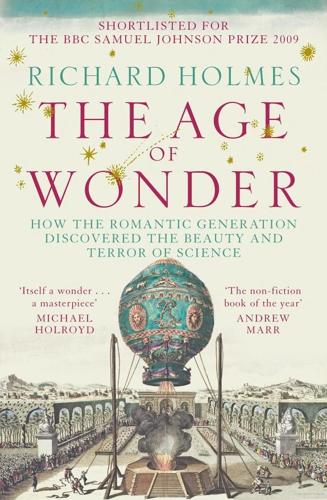
The Age of Wonder
by
Richard Holmes
Published 15 Jan 2008
He wrote witty, faintly scurrilous letters to his sister Sophia, and also kept the first of his great journals, most notable for their racy style, appalling spelling and non-existent punctuation. On his return in November 1766, with a vast quantity of plant specimens (and some caoutchouc from Portugal), Banks was elected a Fellow of the Royal Society, still aged only twenty-three. He began what was to become his famous herbarium, scientific library and collection of prints and drawings. His rapidly expanding circle of scientific friends included the rakish Lord Sandwich, future head of the Admiralty, and the quiet, portly and dedicated Daniel Solander, a young Swedish botanist, trained under Linnaeus at Uppsala, who managed the Natural History section of the British Museum.
…
The effect of this account was to present an engagingly romantic image of science at work: the solitary man of genius pursuing the mysterious moment of revelation. Joseph Banks’s presentation speech, when awarding the prestigious Copley Gold Medal for the best work in any scientific field during the year 1781, in front of the assembled Fellows of the Royal Society, was unreservedly complimentary to Herschel. The discovery of the new planet was the first great success of Banks’s new presidency. In his most expansive and jovial mood, he accordingly projected a visionary future for Herschel’s astronomy: ‘Your attention to the improvement of telescopes has already amply repaid the labour which you bestowed upon them; but the treasures of heaven are well known to be inexhaustible.
…
Eventually this passed. The great Edwin Hubble used to describe an almost trance-like, Buddhist state of mind after a full night’s stellar observation at Mount Wilson in California in the 1930s. See Gale Christianson, Edwin Hubble (1995). ♣ Dr James Lind (1736-1812) was no ordinary physician. A Fellow of the Royal Society, he had been invited to accompany Captain Cook on his second voyage round the world, but instead visited Iceland with Banks, and later voyaged to China. Deeply read in classical sciences-an expert on Pliny and Lucretius-he became a physician to the royal household, and taught modern sciences part-time at Eton.
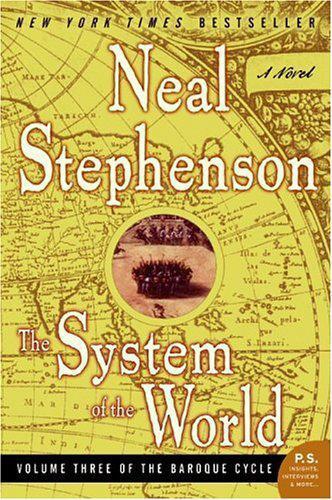
The system of the world
by
Neal Stephenson
Published 21 Sep 2004
“That the buyer is a Fellow of the Royal Society, or else has made a close study of the Society’s early years. He knows a great deal about Hooke and about the Real Character, and…” Daniel paused. “And?” “And about poison,” Daniel said. “An attempt was recently made on the life of Princess Caroline. The weapon was a poniard smeared with nicotine, excellently prepared.” “Bloody peculiar,” reflected Peter Hoxton, “when this benighted world doth so abound in simpler means of killing.” “During the ’sixties—Hooke’s heyday, and the aera of the Real Character—several Fellows of the Royal Society took an interest in nicotine.”
…
During the Plague Year he succoured them as well, by offering them refuge on his estate at Epsom, where discoveries too many to list were made by John Wilkins, by the late Robert Hooke, and by him who stands at my right hand: Dr. Daniel Waterhouse, Fellow of Trinity College, Cambridge, Fellow of the Royal Society, and Chancellor of the Massachusetts Bay Colony Institute of Technologickal Arts. Dr. Waterhouse has very recently re-crossed the Atlantic and is even now on his way to London to confer with Sir Isaac Newton…” The mention of Daniel’s name caused a sparse ripple of curiosity to propagate through the company of cold, irritable Gentlemen.
…
Boyle, and perfected by Mr. Hooke; the lesson was not lost on young Charles; two score years later he passed it on to young Will at their farm in Connecticut, and it was my very great pleasure to visit them there, from time to time, and to witness those lessons being taught so perfectly that no Fellow of the Royal Society could have added what was wanting, nor subtracted what was false. Will took up those lessons well. Fate returned him to England. Providence supplied him with a lovely Devonshire wife. The Queen gave him an Earldom. But it was Fortune, I believe, that brought him together with the Engineer, Mr.
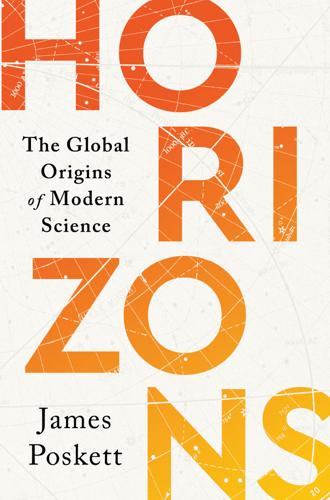
Horizons: The Global Origins of Modern Science
by
James Poskett
Published 22 Mar 2022
There was considerable overlap between the memberships of both institutions. One third of the founding members of the Royal African Company became Fellows of the Royal Society. Not only that, but the Royal Society invested over £1,000 of its own funds in the Royal African Company. Individual fellows of the Royal Society also developed close links to similar commercial and colonial institutions. Newton was in fact pretty typical in his financial dealings. John Locke, elected a Fellow of the Royal Society in 1668, owned shares in the Royal African Company, whilst Robert Boyle, famous for his experiments with the air pump, worked as a director for the East India Company.5 These links weren’t just institutional and financial.
…
Following his lecture at the Royal Institution, he was invited to speak across the world, including at the Prussian Academy of Sciences in Germany and Harvard University in the United States. As we saw at the start of this chapter, Bose also attended the First International Congress of Physics in Paris in 1900. He published in leading scientific journals, received a number of patents for his radio designs, and in 1920 was made a Fellow of the Royal Society. Yet despite all these achievements, Bose has today largely been forgotten outside of India. This in part is a consequence of the legacies of colonialism and racism, something Bose spent much of his own life fighting against. But it is also a consequence of the failure to consider the history of science in India as part of a broader global story.
…
Series B, Physical and Biological Sciences 93 (2017). 59Ito, ‘Making Sense of Ryôshiron’, 110–16 and 260, Low, Science and the Building of a New Japan, 22, and Kim, Yoshio Nishina, 55. 60Ito, ‘Making Sense of Ryôshiron’, 261, Low, Science and the Building of a New Japan, 22, and Kim, Yoshio Nishina, 64. 61Ito, ‘Making Sense of Ryôshiron’, 1, Low, Science and the Building of a New Japan, 106–7, Nicholas Kemmer, ‘Hideki Yukawa, 23 January 1907–8 September 1981’, Biographical Memoirs of Fellows of the Royal Society 29 (1983), L. M. Brown et al., ‘Yukawa’s Prediction of the Mesons’, Progress of Theoretical Physics Supplement 105 (1991): 10, and Hideki Yukawa, Tabibito (The Traveler), trans. L. Brown and R. Yoshida (Singapore: World Scientific, 1982), 10–11 and 36–7. 62Ito, ‘Making Sense of Ryôshiron’, 280, Kim, ‘Emergence of Theoretical Physics’, 395, Low, Science and the Building of a New Japan, 106–7 and 119–21, Yukawa, Tabibito, 12, and Hideki Yukawa, Creativity and Intuition: A Physicist Looks at East and West, trans.
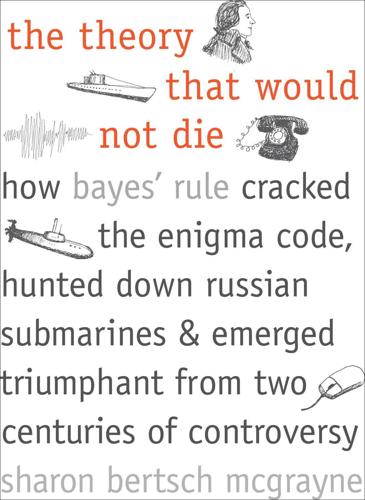
The Theory That Would Not Die: How Bayes' Rule Cracked the Enigma Code, Hunted Down Russian Submarines, and Emerged Triumphant From Two Centuries of Controversy
by
Sharon Bertsch McGrayne
Published 16 May 2011
He fought to get Bayesians appointed, professorship by professorship, until the United Kingdom had a core of ten Bayesian departments. Eventually, Britain became more sympathetic to the method than the United States, where Neyman maintained Berkeley as an anti-Bayesian bunker. Still, the process left scars: despite Lindley’s landmark contributions he was never named a Fellow of the Royal Society. In 1977, at the age of 54, Lindley forsook the administrative chores he hated and retired early. He celebrated his freedom by growing a beard and becoming what he called “an itinerant scholar” for Bayes’ rule.33 Thanks to Lindley in Britain and Savage in the United States, Bayesian theory came of age in the 1960s.
…
Encyclopaedia Britannica (16) 200–203. Cochran WM. (1976) Early development of techniques in comparative experimentation. In On the History of Statistics and Probability, ed., DB Owen. Marcel Dekker. 1–26. Cook, Alan. (1990) Sir Harold Jeffreys, 2 April 1891–18 March 1989. Biographical Memoirs of Fellows of the Royal Society (36) 302–33. Crépel, Pierre. (1993) Henri et la droite de Henry. MATAPLI (36) 19–22. Dale, Andrew I. (1999) A History of Inverse Probability from Thomas Bayes to Karl Pearson. 2d ed. Springer. One of the foundational works in the history of probability. Daston, Lorraine J. (1987) The domestication of risk: mathematical probability and insurance 1650–1830.
…
Hosgood, Steven. http://tallyho.bc.nu/~steve/banburismus.html. Kahn, David. (1967) The Codebreakers: The Story of Secret Writing. Macmillan. A classic. Kendall, David G. (1991a) Kolmogorov as I remember him. Statistical Science (6:3) 303–12. ———. (1991b) Andrei Nikolaevich Kolmogorov. 25 April 1903–20 October 1987. Biographical Memoirs of Fellows of the Royal Society. (37) 300–319. Kolmogorov, Andrei N. (1942) Determination of the center of scattering and the measure of accuracy by a limited number of observations. Izvestiia Akademii nauk SSSR. Series Mathematics (6) 3–32. In Russian. Kolmogorov AN, Hewitt E. (1948) Collection of Articles on the Theory of Firing.
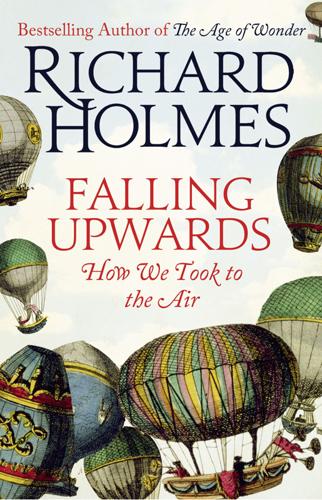
Falling Upwards: How We Took to the Air
by
Richard Holmes
Published 24 Apr 2013
He suggested reducing the requisite manpower by 75 per cent, simply by harnessing the chair to a small hydrogen balloon, ‘sufficiently large to raise me from the ground’. This would make his malady less vexatious for all concerned, by providing a ‘most easy carriage’, lightweight and highly manoeuvrable, ‘being led by a string held by one man walking on the ground’.21 fn6 8 In 1785 Tiberius Cavallo, a Fellow of the Royal Society, put together the first British study of ballooning. His A Treatise on the History and Practice of Aerostation studiously adopted the French scientific term for ‘lighter-than-air’ flight, but moved far beyond national rivalries. He wanted to consider the phenomenon of flight from both a scientific and a philosophical point of view.
…
Among the committee’s fourteen signatories were many leading names in British science, notably the Astronomer Royal, Professor Sir George Airy; Sir David Brewster, who had written Isaac Newton’s biography; Sir John Herschel, the best-known public scientist in Britain; and John Tyndall, who had inherited Humphry Davy’s position at the Royal Institution.9 The man they chose to prosecute these researches, and put the science back into ballooning, was a fifty-three-year-old meteorologist named James Glaisher (1809–1903). Glaisher did not exactly fit the profile of an aerial adventurer. A large, taciturn family man, solidly built and heavily bewhiskered, he was a Fellow of the Royal Society, an expert on the theory of magnetism, and for the last ten years had been Secretary to the Royal Meteorological Society. He lived comfortably with his extended household in a pleasant mansion at 22 Dartmouth Road on Blackheath, South London (now marked by a blue plaque). He strode daily over the Heath on his way to work at the nearby Royal Observatory at Greenwich.
…
His dedicated team of weathermen were mostly doctors and clergymen, men tied to their particular parishes, who could be relied upon to take regular readings of temperature, barometric pressure, wind speed and atmospheric conditions (cloud, rain, sunshine) at precisely nine o’clock every morning. The results were telegraphed to Glaisher at the Royal Observatory before noon. He could now command a daily picture of the evolution of weather systems right across the country. In August 1848 he began to contribute a national weather report to the Daily News. He was elected a Fellow of the Royal Society in June 1849, and became the Secretary of the Meteorological Society in 1850. His weather charts were shown at the Great Exhibition in 1851. He could track the weather, but still he did not attempt to forecast it.16 In the autumn of 1852, Glaisher followed four of Charles Green’s ‘last’ ascents from Vauxhall, using a telescope, from the roof of the Greenwich observatory.
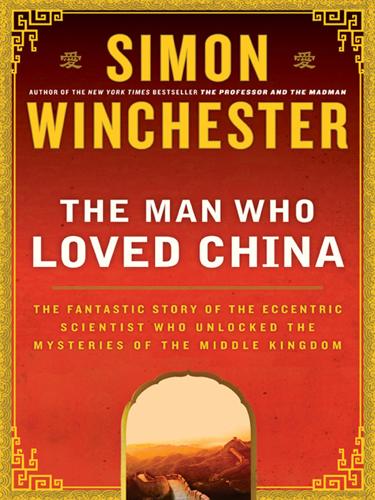
The Man Who Loved China: The Fantastic Story of the Eccentric Scientist Who Unlocked the Mysteries of the Middle Kingdom
by
Simon Winchester
Published 1 Jan 2008
Once this activity became too humdrum for him, she said, he further occupied himself by translating the selfsame pages from English into French, also in his head, and then correcting any errors that he fancied he could also see in this new translated text. And there was more than merely the pride of achievement. The publication of the three volumes made virtually certain the honor that would be bestowed on Needham a decade later: in 1941 he was elected a fellow of the Royal Society, arguably the greatest scientific distinction short of a Nobel prize.4 His writing of a scientific classic while he was still so young a man and so untutored a researcher was something that the graybeards of the Royal Society found wholly commendable, and impossible to overlook—but that some also envied, mightily.
…
At the time, Sansom was the senior civilian representative on a little-known body, the Far East War Council, which was based in Singapore and essentially decided how Britain should best prosecute its side of the conflict in the world east of Suez. It was probably Sansom’s suggestion that Needham, a Chinese-speaking fellow of the Royal Society, and a senior figure who was intimately connected with British scientific research, should be the one to go; further, it was likely that this decision would have been approved at a higher level still—quite possibly in Downing Street, by Winston Churchill. It had been agreed, said Crowther over a lunch in London a few days later, that by living in and visiting learned institutions all across “free China,” Needham could find out exactly what was wanted by the Chinese—textbooks, laboratory equipment, reagents, visiting experts—find out where it was wanted, and have whatever could be sent, sent.
…
At the monastery they were introduced to and then had lunch with a group that included a “living buddha,” three itinerant Tibetan monks dressed in russet red robes, some rather sobersided Chinese monks kitted out in black, and the Australian ambassador to China, Sir Frederick Eggleston, who happened to be nearby, and hungry. Needham said he found it rather amusing that so austere a community was suddenly invaded by an antipodean diplomat and a fellow of the Royal Society, but imagined later that the monks had been less impressed than he, and had taken it all with properly spiritual equanimity. Later that day he and Eggleston went to a teahouse and sat outside in the sun chatting idly about the beauty of their situation. It was perfectly safe for them to do so.
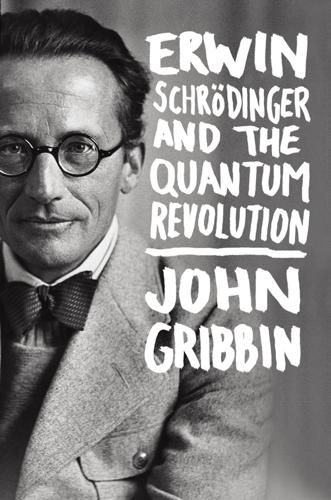
Erwin Schrodinger and the Quantum Revolution
by
John Gribbin
Published 1 Mar 2012
Newton mostly preferred to keep his ideas to himself, rather than be bothered with the attention and time-consuming correspondence that would result if they became widely known. One idea he did announce, however, was his invention of a new kind of telescope, which resulted in his being elected a Fellow of the Royal Society (founded in 1660, with the epithet “Royal” bestowed the following year) in 1672. This led to Newton presenting his ideas about light and colours to the Society, and in turn to a virulent argument with Robert Hooke (1635–1703), the man who as Curator of Experiments and later Secretary did more than anyone to make the Society a success.
…
There he continued thinking deeply about the nature of the physical world, but stopped telling anyone about his thoughts. That changed in 1684, when Edmond Halley (1656–1742) visited Newton in Cambridge. The purpose of his visit was to ask if Newton could help with a problem that had been puzzling Halley, Hooke, and another Fellow of the Royal Society, Christopher Wren (1632–1723). The three scientists had realized that the orbits of the planets around the Sun could be explained by a force which falls off in proportion to the square of the distance of a planet from the Sun (an inverse-square law), but they could not prove that all of the laws of planetary motion, described by Johannes Kepler (1571–1630), must result from such a law.
…
Between 1938 and 1948 no German or Austrian citizens were elected to the Royal. In addition, before 1948 only foreign nationals who were not resident in one of the British Dominions were eligible for election. Technically, Ireland was still a British Dominion until 1948, when the new Irish government formally severed this last link with the past. Although the new Fellow of the Royal Society did not publish any scientific papers in 1949 (his first “fallow” year since 1923), he did issue a slim volume of poetry, which would surely not have appeared were it not for his fame as a physicist. Schrödinger’s poetry, in fact, reads almost like a pastiche of the kind of poetry you would expect a physicist to write—it is technically correct, in terms of metre, rhyme, and so on, but lacks the emotional impact of the work of a true poet.
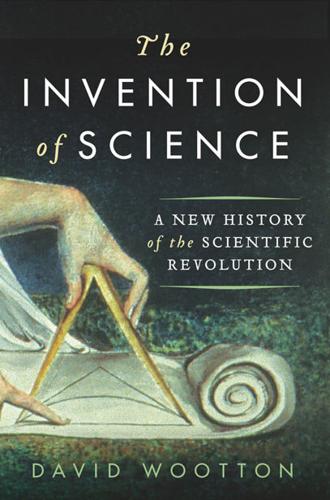
The Invention of Science: A New History of the Scientific Revolution
by
David Wootton
Published 7 Dec 2015
From these he produced the first calculations of life expectancy for different age groups, and so the first reliable figures which could provide a basis for pricing life insurance. He lived in a new world of statistical accuracy. It was from the scientists, from men like William Petty, a first-generation fellow of the Royal Society, who surveyed Ireland, that Gregory King, a government administrator, effectively an accountant, acquired the conceptual tools that enabled him to calculate (very approximately) what we would call the Gross National Product of Britain and France in 1696 in order to work out which had the greater resources for winning the war they were fighting.
…
At the same time a Bedstaff was thrown at the Minister, which hit him on the Leg, but so favourably that a Lock of Wool could not have fallen more softly, and it was observed, that it stopt just where it lighted, without rolling or moving from the place.3 There have always been plenty of stories of the weird and the wonderful. This story comes from Saduscismus triumphatus, written by a clergyman, Joseph Glanvill, one of the chief propagandists for the new science, and a fellow of the Royal Society from 1664. Glanvill began publishing in defence of the reality of witchcraft in 1666, and his first version of the Mompesson story appeared the next year, in A Blow at Modern Sadducism, Sadducism being understood to be the denial of the reality of spirits. (The version just quoted comes from the posthumous work Saducismus triumphatus, or The Saducee Triumphed Over (1681), seen through the press by Glanvill’s friend the Platonist philosopher Henry More, which went through a further five editions.)
…
Temple touched on it only tangentially in his essay; it recedes into the background again in Swift’s Battle of the Books.11 But it was a central topic when Fontenelle took up the defence of the moderns against the ancients in France (1686),12 and it again played a central role in the major reply to Temple, Reflections upon Ancient and Modern Learning (1694; with an expanded second edition in 1698), by a young clergyman, William Wotton, who had managed to get himself elected a Fellow of the Royal Society, though science was far from being his primary interest. (Wotton was commissioned to write the first life of Robert Boyle; he began work but never finished as he fell, for a time, into a life of drunkenness and debauchery.)13 Temple knew very little about science, much less than Wotton, and lacked any inclination to make good this deficiency.

Genius Makers: The Mavericks Who Brought A. I. To Google, Facebook, and the World
by
Cade Metz
Published 15 Mar 2021
the entomologist Howard Everest Hinton: George Salt, “Howard Everest Hinton. 24 August 1912–2 August 1977,” Biographical Memoirs of Fellows of the Royal Society (London: Royal Society Publishing, 1978), pp. 150–182, https://royalsocietypublishing.org/doi/10.1098/rsbm.1978.0006. Sir George Everest, the surveyor general of India: Kennedy, The Booles and the Hintons. aimed to explain the basic biological process: Peter M. Milner and Brenda Atkinson Milner, “Donald Olding Hebb. 22 July 1904–20 August 1985,” Biographical Memoirs of Fellows of the Royal Society (London: Royal Society Publishing, 1996), 42: 192–204, https://royalsocietypublishing.org/doi/10.1098/rsbm.1996.0012.
…
And his cousin, the nuclear physicist Joan Hinton, was one of the few women to work on the Manhattan Project. In London and later in Bristol, he grew up alongside three siblings, a mongoose, a dozen Chinese turtles, and two viper snakes that lived in a pit at the back of the garage. His father was the entomologist Howard Everest Hinton, a Fellow of the Royal Society, whose interest in wildlife extended beyond insects. Like his father, he was named for another relative, Sir George Everest, the surveyor general of India whose name was also given to the world’s highest peak. It was expected that he would one day follow his father into academia. It was less clear what he would study.
…
Then he dropped philosophy for experimental psychology. In the end, despite pressure to continue his studies—or perhaps because of that pressure, brought down by his father—Hinton left academia entirely. When he was a boy, he had seen his father as both an uncompromising intellectual and a man of enormous strength—a Fellow of the Royal Society who could do a pull-up with one arm. “Work really hard and maybe when you’re twice as old as me, you’ll be half as good,” his father had often told him, without irony. After graduating from Cambridge, with thoughts of his father hanging over him, Hinton moved to London and became a carpenter.

The Most Powerful Idea in the World: A Story of Steam, Industry, and Invention
by
William Rosen
Published 31 May 2010
It proved an attractive destination for refugees of another disaster, the Jacobite Rebellions of the early eighteenth century (the fruitless attempts to return the Stuart kings to the throne following the Glorious Revolution of 1688), which resulted in, among other things, the emigration of thousands of Scots to the island.* In 1747, one of them1 (a Scot, not a Jacobite), Alexander Macfarlane, a merchant, a judge, a mathematician, and yet another of those “gentlemen, free and unconfin’d” who could style themselves Fellows of the Royal Society, acquired several dozen state-of-the-art astronomical instruments from another Scot named Colin Campbell. Campbell was not merely a countryman, but a fellow alumnus of Glasgow University, so it was scarcely surprising that when Macfarlane died in 1755, his collection was bequeathed to their alma mater.
…
Luckily for the history of engineering, young John found the law less interesting than tinkering, and by 1748 he had moved to London and set up shop as a maker of scientific instruments; five years later, when James Watt arrived in the city seeking to be trained in exactly the same trade, Smeaton was a Fellow of the Royal Society, and had already built his first water mill. In 1756, he was hired to rebuild the Eddystone Lighthouse, which had burned down the year before; the specification for the sixty-foot-tall structure* required that it be constructed on the Eddystone rocks off the Devonshire coast between high and low tide, and so demanded the invention of a cement—hydraulic lime—that would set even if submerged in water.
…
This didn’t mean that no one was thinking outside the caloric box. There was, for example, the thoroughly remarkable Benjamin Thompson of Massachusetts, a loyalist American who, after backing the losing side in the Revolutionary War, moved, first to England (where in 1779 he was made a Fellow of the Royal Society), and four years later, apparently on a whim, to Bavaria. There he found himself, on behalf of the Prince-Elector2 Karl-Theodor, running an espionage network that stole design sketches from the Soho Manufactory and spirited them out of England. For this and other services (including the invention of Rumford Soup, a concoction of peas, barley, potato, and old beer intended to meet the nutritional needs of Europe’s poor) he was made a Count of the Holy Roman Empire in 1791.
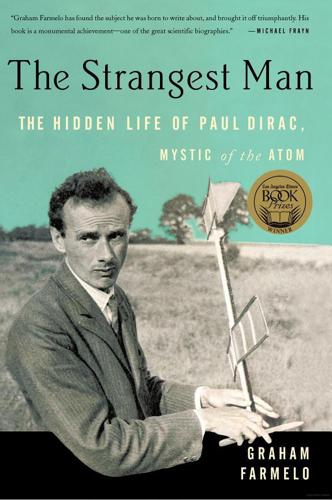
The Strangest Man: The Hidden Life of Paul Dirac, Mystic of the Atom
by
Graham Farmelo
Published 24 Aug 2009
They spent hundreds of hours playing the game with ever-higher numbers – until Dirac found a simple and general formula enabling any number to be expressed using four 2s, entirely within the rules.6 He had rendered the game pointless. On 20 February 1930, Dirac sent his parents the usual newsless weekly postcard, consisting of a ten-word summary of the Cambridge weather.7 The day after his mother received it, she visited the library and was astonished to read in a newspaper that her son had been elected a Fellow of the Royal Society, one of the highest honours in British science. Excited and flushed with pride, she dashed out to the post office and sent him a congratulatory telegram, keeping in check her annoyance that he had not mentioned the news on the card.8 Dirac was a ‘naughty boy’, she told him two days later in a letter, enquiring whether the society was organising a ceremony of induction.
…
Teller noted, however, that the experimental uncertainties in the calculations were so large that it was not possible definitely to rule out the hypothesis. 13 Barrow (2002: 107). 14 Letter from Dirac to Gamow, 10 January 1961, Gamow archive LC. 15 Quoted in Barrow (2002: 108). 16 Private papers of Mary Dirac. Dirac wrote the notes on 17 January 1933. 17 Letter to Dirac from Gamow, 26 October 1957, Dirac Papers, 2/5/4 (FSU). 18 John Douglas Cockcroft, Biographical Memoirs of Fellows of the Royal Society (1968): 139–88; see p. 185. 19 Mitton (2005: 127–9). 20 Overbye (1991: 39). 21 Letter from Gamow to Dirac, June 1965 (undated), Dirac Papers, 2/5/13 (FSU). 22 Letter from Heisenberg to Dirac, 2 March 1967, Dirac Papers, 2/14/1 (FSU). Letter from Dirac to Heisenberg, 6 March 1967, quoted in Brown and Rechenberg (1987: 148). 23 Letter from Geoffrey Harrison, HM Ambassador in Moscow, to Sir John Cockcroft, 19 April 1966, Cockcroft archive, CKFT 20/17 (CHURCHILL). 24 Kapitza gave the lecture at 5 p.m. on Monday, 16 May.
…
Teller noted, however, that the experimental uncertainties in the calculations were so large that it was not possible definitely to rule out the hypothesis. 13 Barrow (2002: 107). 14 Letter from Dirac to Gamow, 10 January 1961, Gamow archive LC. 15 Quoted in Barrow (2002: 108). 16 Private papers of Mary Dirac. Dirac wrote the notes on 17 January 1933. 17 Letter to Dirac from Gamow, 26 October 1957, Dirac Papers, 2/5/4 (FSU). 18 John Douglas Cockcroft, Biographical Memoirs of Fellows of the Royal Society (1968): 139–88; see p. 185. 19 Mitton (2005: 127–9). 20 Overbye (1991: 39). 21 Letter from Gamow to Dirac, June 1965 (undated), Dirac Papers, 2/5/13 (FSU). 22 Letter from Heisenberg to Dirac, 2 March 1967, Dirac Papers, 2/14/1 (FSU). Letter from Dirac to Heisenberg, 6 March 1967, quoted in Brown and Rechenberg (1987: 148). 23 Letter from Geoffrey Harrison, HM Ambassador in Moscow, to Sir John Cockcroft, 19 April 1966, Cockcroft archive, CKFT 20/17 (CHURCHILL). 24 Kapitza gave the lecture at 5 p.m. on Monday, 16 May.

The Battery: How Portable Power Sparked a Technological Revolution
by
Henry Schlesinger
Published 16 Mar 2010
As with nearly everything he did, Franklin threw himself into electrical experimentation with gusto. From 1746 until 1752 these efforts consumed him. A glass tube along with a sampling of the latest scientific literature was soon sent to him by his friend Peter Collinson. A London cloth merchant, agent for Franklin’s Library Company of Philadelphia, and a fellow of the Royal Society, Collinson was an ideal conduit into European scientific circles. Although his own field of interest was botany rather than electricity, Collinson was nevertheless an enthusiastic and often effective supporter of Franklin’s work. Within a year, Franklin was writing letters back to Collinson detailing his discoveries.
…
Water, thought to be an element, was now definitively shown—with the help of Volta’s device—to be a compound composed of hydrogen and oxygen. In many reports the apparatus—the battery—that accomplished the decomposition rated only secondary mention. On June 26, Banks read Volta’s letter to the Fellows of the Royal Society, and by September of that year, the letter was translated into English and published in Philosophical Transactions under the title “On the Electricity Excited by the Mere Contact of Conducting Substances of Different Kinds.” From there, news of the miraculous invention spread quickly and by the autumn of 1800 experimenters throughout Europe were building and using their own voltaic batteries.
…
AFTER SOME FOURTEEN YEARS, HENRY moved from Princeton to the not yet fully formed Smithsonian Institution, where he became secretary and played a pivotal role in one of the more interesting chapters in American science. Founded on roughly the same principles as the Royal Institution by James Smithson, a British subject, the Smithsonian was to be the legacy of a man who would never see the final result. Although an early member of the Royal Institution, Fellow of the Royal Society, and enthusiastic experimenter, Smithson felt he was never accorded the full respect due a gentleman of science. The illegitimate son of Hugh Smithson, first Duke of Northumberland, and Elizabeth Macie, a lineal descendant of King Henry VII, he was accepted for his lineage but never entirely welcomed into British society because of his out-of-wedlock birth.

Sextant: A Young Man's Daring Sea Voyage and the Men Who ...
by
David Barrie
Published 12 May 2014
Unlike the astrolabe or quadrant it can be used for measuring angles in any plane—for example, between two heavenly bodies, or between two objects on the surface of the earth. The sextant was the offspring of an earlier invention, the so-called reflecting quadrant. Sir Isaac Newton can take credit for designing the first device of this kind, plans for which were shown to the Royal Society in 1699.12 Another Fellow of the Royal Society, John Hadley (1682–1744), came up with two designs, similar to Newton’s though apparently not derived from them, which he presented to that institution in May 1731.13 One of these was widely adopted following successful sea trials conducted the following year by the Oxford professor of astronomy John Bradley, who was later to become Astronomer Royal.14 By one of those strange coincidences that seem common in the history of science, an American—Thomas Godfrey—independently came up with a similar design almost simultaneously.15 Confusingly, the reflecting quadrant is actually an octant—its arc is one-eighth of a circle (45 degrees) rather than one-quarter.
…
I had new sheets laid & the bed rubbed up & dried as well as could be done, & in this damp bed I turned in . . . but the continual rolling of the Ship hindered me from Sleeping. . . . The Ocean & the winds raged all night.15 Cook reached home in July 1775 and was greeted as a hero—rather like Neil Armstrong returning from the moon, though he had been away for much longer. He was promoted to the rank of post-captain and, early the following year, elected a Fellow of the Royal Society. He could now have enjoyed a comfortable retirement with his wife and children, but the challenge of further exploration could not be resisted. In July 1776 Cook set sail on his final voyage with two ships—the Resolution (again) and the Discovery—this time heading into the far north of the Pacific in search of the fabled northern route to the Atlantic.
…
He had started his career on the staff of the French ambassador in London (where he met Anson) and later distinguished himself in the army as aide-de-camp to General Montcalm.1 A highly educated and cultivated man, he had, while still in his twenties, published a two-volume treatise on integral calculus and was already a Fellow of the Royal Society in London. With feigned modesty, Bougainville warned readers of his Voyage autour du monde that his style was “all too plainly” marked by the wild, nomadic life he had for so long been leading. “It is neither in the forests of Canada nor on the breast of the sea that one develops the art of writing,”2 he proclaimed.
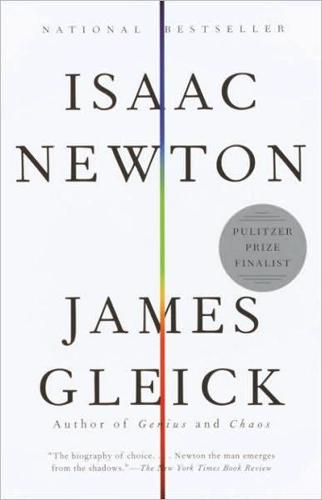
Isaac Newton
by
James Gleick
Published 1 Jan 2003
I am purposing them, to be considered of & examined, an accompt of a Philosophicall discovery which induced me to the making of the said Telescope, & which I doubt not but will prove much more gratefull then the communication of that instrument, being in my Judgment the oddest if not the most considerable detection which hath hitherto been made in the operations of Nature.33 And by the way, what would his duties be, as Fellow of the Royal Society? 7 Reluctancy and Reaction THE GREAT COURT of Trinity College was mostly complete, with a library and stables, central fountain, and fenced-in plots of grass. An avenue of newly planted linden trees lay to the southwest.1 Newton occupied a chamber upstairs between the Great Gate and the chapel.
…
A more dramatic spectacle appeared in the nights of December. Newton saw it with naked eye on December 12: a comet whose great tail, broader than the moon, stretched over the full length of King’s College Chapel. He tracked it almost nightly through the first months of 1681.1 A young astronomer traveling to France, Edmond Halley, a new Fellow of the Royal Society, was amazed at its brilliance.2 Robert Hooke observed it several times in London. Across the Atlantic Ocean, where a handful of colonists were struggling to survive on a newfound continent, Increase Mather delivered a sermon, “Heaven’s Alarm to the World,” to warn Puritans of God’s displeasure.3 Halley served as a sometime assistant to a new officeholder, the Astronomer Royal.
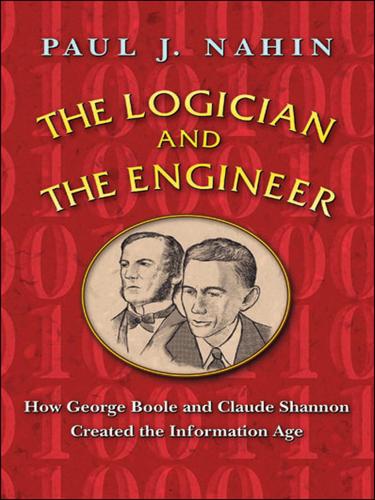
The Logician and the Engineer: How George Boole and Claude Shannon Created the Information Age
by
Paul J. Nahin
Published 27 Oct 2012
George must have been impressed with what he saw of the heavens through that instrument, and perhaps that was one of the influences that propelled him toward his career as a profoundly creative mathematician. A camera obscura was another of their joint projects. John may, in fact, have spent too much time on optics and not enough on repairing shoes. In 1956 Sir Geoffrey Taylor (1886–1975), a mathematical physicist of some renown, a Fellow of the Royal Society, and a grandson of George (his mother was the second of Boole’s five daughters), wrote the following: “I have inherited from my grandmother [Boole’s eventual wife, Mary Everest (1832–1916)], a box made by John Boole to hold a microscope he had made. Inside the lid is pasted a note in her handwriting [declaring], ‘He seems to have been able to do anything well except his own business of managing the shop.”’
…
Boole was hard for Kane to ignore, however, as Boole was clearly one of the college’s stars. Almost from the start, Boole’s academic life in Cork was one of moving from one honor and achievement to the next. In 1852 he received an honorary doctorate from the University of Dublin, in 1854 An Investigation of the Laws of Thought was published, in 1857 he was elected a Fellow of the Royal Society of London, and there was the Keith Prize in 1858. In 1859 his A Treatise on Differential Equations was published, and he received another honorary doctorate, this time from Oxford. In 1860 another textbook was published, A Treatise on the Calculus of Finite Differences. Boole had found heaven in Cork.
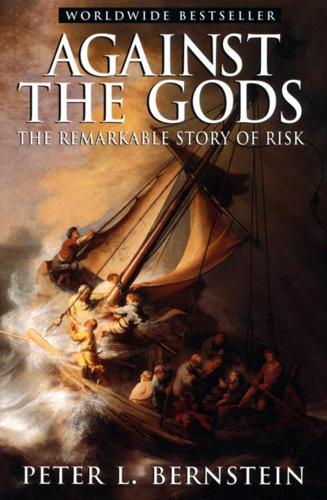
Against the Gods: The Remarkable Story of Risk
by
Peter L. Bernstein
Published 23 Aug 1996
Jacob was an exceptionally dour Bernoulli, especially toward the end of his life, though he lived during the bawdy and jolly age that followed the restoration of Charles II in 1660.* One of Jacob's more distinguished contemporaries, for example, was John Arbuthnot, Queen Anne's doctor, a Fellow of the Royal Society, and an amateur mathematician with an interest in probability that he pepped up with a generous supply of off-color examples to illustrate his points. In one of Arbuthnot's papers, he considered the odds on whether "a woman of twenty has her maidenhead" or whether "a town-spark of that age `has not been clap'd."'2 Jacob Bernoulli had first put the question of how to develop probabilities from sample data in 1703.
…
One of the most effective treatments of such questions was proposed by a minister named Thomas Bayes, who was born in 1701 and lived in Kent." Bayes was a Nonconformist; he rejected most of the ceremonial rituals that the Church of England had retained from the Catholic Church after their separation in the time of Henry VIII. Not much is known about Bayes, even though he was a Fellow of the Royal Society. One otherwise dry and impersonal textbook in statistics went so far as to characterize him as "enigmatic."16 He published nothing in mathematics while he was alive and left only two works that were published after his death but received little attention when they appeared. Yet one of those papers, Essay Towards Solving A Problem In The Doctrine Of Chances, was a strikingly original piece of work that immortalized Bayes among statisticians, economists, and other social scientists.
…
After his return to England, he idled away four years and then made a second trip to Africa. He wrote a book about Africa in 1853 that gained him membership in the Royal Geographic Society, which awarded him a gold medal, and won him acceptance by the scientific community. In 1856, he was made a fellow of the Royal Society. His second trip to Africa when he was 27 left Galton "rather used up in health," the result of a combination of physical exhaustion and bouts of depression that were to recur often though briefly throughout his life. He referred to himself on those occasions as someone with a "sprained brain."9 Galton was an amateur scientist with a keen interest in heredity but with no interest in business or economics.
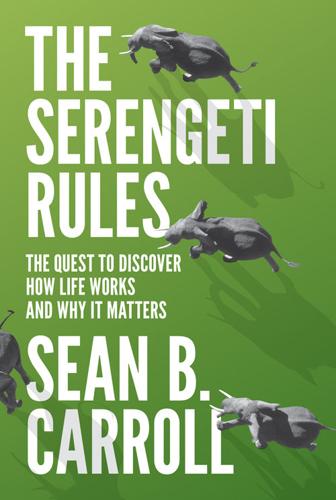
The Serengeti Rules: The Quest to Discover How Life Works and Why It Matters
by
Sean B. Carroll
Published 16 Feb 2016
Ecology 86: 391–403. Bianconi, E., A. Piovesan, F. Facchin, A. Beraudi, et al. (2013) “An Estimation of the Number of Cells in the Human Body.” Annals of Human Biology Early Online 40: 1–11. Biggs, P. M. (2010) “Walter Plowright. 20 July 1923–20 February 2010.” Biographical Memoirs of Fellows of the Royal Society 56: 341–358. Bilheimer, D. W., S. M. Grundy, M. S. Brown, and J. L. Goldstein. (1983) “Mevinolin and Colestipol Stimulate Receptor-Mediated Clearance of Low Density Lipoprotein from Plasma in Familial Hypercholesterolemia Heterozygotes.” Proceedings of the National Academy of Sciences USA 80(13): 4124–4128.
…
Sogawa, K. (2015) “Planthopper Outbreaks in Different Paddy Ecosystems in Asia: Man-Made Hopper Plagues that Threatened the Green Revolution in Rice.” In K. L. Heong, J. Cheng, and M. M. Escalada (eds.), Rice Planthoppers: Ecology, Management, Socio Economics and Policy. Dordrecht: Springer: 33–63. Southwood, R., and J. R. Clarke (1999) “Charles Sutherland Elton, 29 March 1900–1 May 1991.” Biographical Memoirs of Fellows of the Royal Society 45: 130–146. Spector, D. H., H. E. Varmus, and J. M. Bishop (1978) “Nucleotide Sequences Related to the Transforming Gene of Avian Sarcoma Virus Are Present in DNA of Uninfected Vertebrates.” Proceedings of the National Academy of Sciences USA 75(9): 4102–4106. Spinage, C. A. (2003) Cattle Plague: A History.
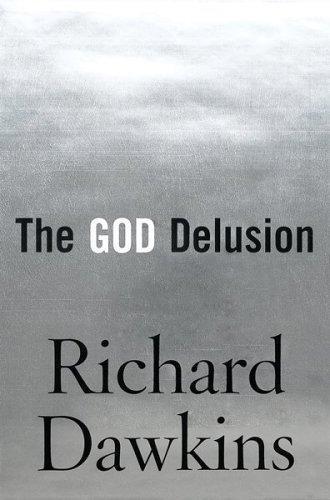
The God Delusion
by
Richard Dawkins
Published 12 Sep 2006
As this book goes to press, my colleagues R. Elisabeth Cornwell and Michael Stirrat are writing up their comparable, but more thorough, research on the religious opinions of the Fellows of the Royal Society (FRS). The authors’ conclusions will be published in full later, but they have kindly allowed me to quote preliminary results here. They used a standard technique for scaling opinion, the Likert-type seven-point scale. All 1,074 Fellows of the Royal Society who possess an email address (the great majority) were polled, and about 23 per cent responded (a good figure for this kind of study). They were offered various propositions, for example: ‘I believe in a personal God, that is one who takes an interest in individuals, hears and answers prayers, is concerned with sin and transgressions, and passes judgement.’
…
A more systematic study by Benjamin Beit-Hallahmi ‘found that among Nobel Prize laureates in the sciences, as well as those in literature, there was a remarkable degree of irreligiosity, as compared to the populations they came from’.52 A study in the leading journal Nature by Larson and Witham in 1998 showed that of those American scientists considered eminent enough by their peers to have been elected to the National Academy of Sciences (equivalent to being a Fellow of the Royal Society in Britain) only about 7 per cent believe in a personal God.53 This overwhelming preponderance of atheists is almost the exact opposite of the profile of the American population at large, of whom more than 90 per cent are believers in some sort of supernatural being. The figure for less eminent scientists, not elected to the National Academy, is intermediate.
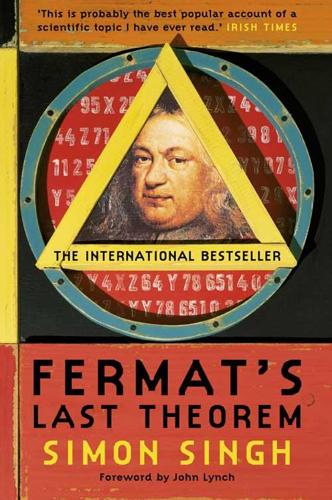
Fermat’s Last Theorem
by
Simon Singh
Published 1 Jan 1997
Hardy in his book A Mathematician’s Apology. ‘No mathematician should ever forget that mathematics, more than any other art or science, is a young man’s game. To take a simple illustration, the average age of election to the Royal Society is lowest in mathematics.’ His own most brilliant student Srinivasa Ramanujan was elected a Fellow of the Royal Society at the age of just thirty-one, having made a series of outstanding breakthroughs during his youth. Despite having received very little formal education in his home village of Kumbakonam in South India, Ramanujan was able to create theorems and solutions which had evaded mathematicians in the West.
…
A popular and detailed overview of modern mathematics, including a discussion on the axioms of mathematics. The Concepts of Modem Mathematics, by Ian Stewart, 1995, Penguin. Principia Mathematica, by Betrand Russell and Alfred North Whitehead, 3 vols, 1910, 1912, 1913, Cambridge University Press. Kurt Gödel, by G. Kreisel, Biographical Memoirs of the Fellows of the Royal Society, 1980. A Mathematician’s Apology, by G.H. Hardy, 1940, Cambridge University Press. One of the great figures of twentieth-century mathematics gives a personal account of what motivates him and other mathematicians. Alan Turing: The Enigma of Intelligence, by Andrew Hodges, 1983, Unwin Paperbacks.
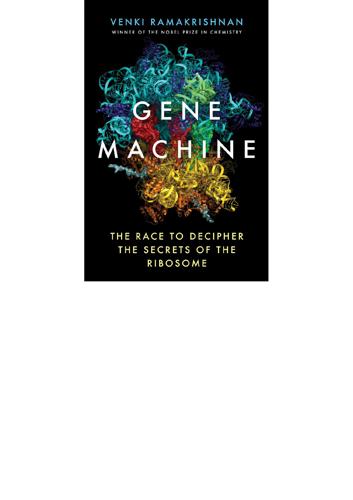
The Gene Machine
by
Venki Ramakrishnan
The latter contained several hundred atoms, and the determination of its structure was considered a tour de force. At one point, Bernal told her she would win a Nobel Prize. She asked whether she might one day be elected a fellow of the Royal Society, and he is reported to have said, ‘That would be much more difficult!’ For men, it would have been the other way around, but at the time, the Royal Society had not elected any women in its nearly three hundred years of existence. But Hodgkin’s work was simply far too important to ignore. She was made a fellow of the Royal Society in 1947, just two years after the Society welcomed its first female fellows, the crystallographer Kathleen Lonsdale and the biochemist Marjorie Stephenson.

E=mc2: A Biography of the World's Most Famous Equation
by
David Bodanis
Published 25 May 2009
If he were right, then a loosely dangling wire could be tugged along, caught in those mystical circles like a small boat getting caught up in a whirlpool. He connected the battery. 15 a n c e s t o r s o f e = m c2 And immediately he had the discovery of the century. Later, the apocryphal story goes—after all the announcements, after Faraday was made a Fellow of the Royal Society—the prime minister of the day asked what good this invention could be, and Faraday answered: “Why, Prime Minister, someday you can tax it.” What Faraday had invented, in his basement laboratory, was the basis of the electric engine. A single dangled wire, whirling around and around, doesn’t seem like much.
…
The test was over twenty years later, probably around 1660, by the Accademia del Cimento in Florence. Their results are on page 158 of a book with the sort of vivid identifying location publishers no longer have: Essayes of Natural Experiments, made in the Academie del Cimento; Englished by Richard Waller, Fellow of the Royal Society, London. Printed for Benjamin Alsop at the Angel and Bible in the Poultrey, over-against the Church, 1634. 5. c Is for celeritas 40 The effort might be exhausting . . . embarrassing public exposure: Clearly I’m being slightly tongue in cheek about Cassini. From the available evidence, he might have been an insecure man, but as a newcomer to France he had a great deal to be insecure about: At first his appointment was only temporary, and he’d been warned not to try speaking French, but then he’d been told he had to learn French, for the Academy of Sciences couldn’t be sullied by being exposed to Latin, let alone his native Italian.
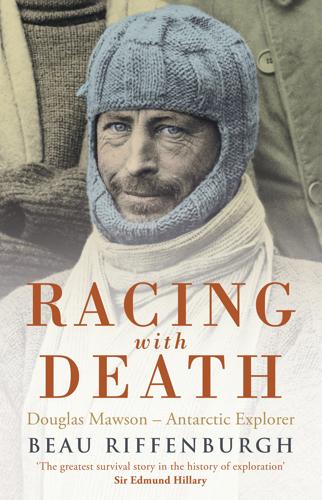
Racing With Death
by
Beau Riffenburgh
Published 25 Jul 2008
He also studied Precambrian glaciation, algal remains in Precambrian rocks, and the geochemistry of igneous and metamorphic rocks. He was appointed an executive member of the Australian National Research Council, was a key figure in the Australasian Association for the Advancement of Science, and, in 1923, received one of the highest honours possible for a scientist by being elected a Fellow of the Royal Society. None of this seemed to help, however, in his efforts to succeed Professor David as the chair of the Geology Department at the University of Sydney – the most prestigious geological position in Australia. The most surprising aspect of the complex and devious behind-the-scenes struggle surrounding the appointment to the post was that the man giving the strongest support for Mawson’s main opponent was Professor David!
…
The Home of the Blizzard. 2 vols. London: William Heinemann: vol. 2, 195–236 Ainsworth, George. 1915. Through Another Year. In: Mawson, Douglas. The Home of the Blizzard. 2 vols. London: William Heinemann: vol. 2, 237–54 Alderman, A.R., and C.E. Tilley. 1960. Douglas Mawson 1882–1958. Biographical memoirs of Fellows of the Royal Society 5 Carrington-Smith, Denise. 2005. Mawson and Mertz: a re-evaluation of their ill-fated mapping journey during the 1911–14 Australasian Antarctic Expedition. The Medical Journal of Australia 183 (11–12): 638–41 Cleland, Sir John, and R.V. Southcott. 1969. Hypervitaminosis A in the Antarctic in the Australasian Antarctic Expedition of 1911–1914: a Possible Explanation of the Illnesses of Mertz and Mawson.

The Rationalist's Guide to the Galaxy: Superintelligent AI and the Geeks Who Are Trying to Save Humanity's Future
by
Tom Chivers
Published 12 Jun 2019
Bayes, a somewhat obscure eighteenth-century Presbyterian minister with a sideline in mathematics, wrote a couple of well-received books in his lifetime, one on theology, the other defending an aspect of Newton’s calculus from criticism by George Berkeley. The latter, according to Wikipedia at least,1 appears to have been enough to have got him elected a Fellow of the Royal Society. Neither of these books are what he is remembered for. In later life he became interested in probability, and after he died his friend Richard Price edited his notes on the subject into an essay for the journal Philosophical Transactions.2 It was called ‘An Essay towards solving a Problem in the Doctrine of Chances’, and contained within it a simple equation which underlies the whole of modern probability theory.
…
Eliezer Yudkowsky, ‘Motivated stopping and motivated continuation’, LessWrong sequences, 2007 https://www.lesswrong.com/posts/L32LHWzy9FzSDazEg/motivated-stopping-and-motivated-continuation 3. R.A. Fisher, ‘Lung cancer and cigarettes’, Nature, vol. 182, 12 July 1958, p. 108 https://www.york.ac.uk/depts/maths/histstat/fisher275.pdf 4. F. Yates and K. Mather, ‘Ronald Aylmer Fisher 1890–1962’, Biographical Memoirs of Fellows of the Royal Society, vol. 9, 1963, pp. 91–129 doi:10.1098/rsbm.1963.0006. 27: A few others, and the most important one 1. Eliezer Yudkowsky, ‘Illusion of transparency: Why no one understands you’, LessWrong sequences, 2007 https://www.readthesequences.com/Illusion-Of-Transparency-Why-No-One-Understands-You 2.
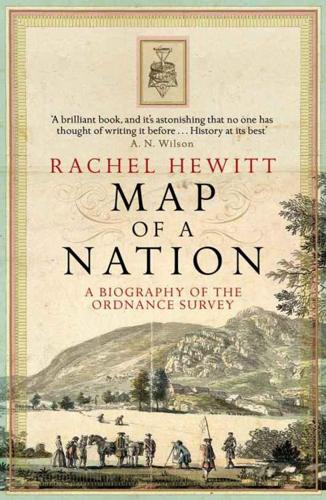
Map of a Nation: A Biography of the Ordnance Survey
by
Rachel Hewitt
Published 6 Jul 2011
It has been suggested that this balding gentleman is a rare representation of the late-middle-aged Roy. But fond as he was of the Society of Antiquaries, it was Roy’s immersion in the activities of another prominent London organisation that was to introduce him to those in the vanguard of research into the earth sciences. William Roy was admitted as a Fellow of the Royal Society, England’s chief crusader in the ‘Improv[ement of] Natural Knowledge’, on 9 April 1767. He was recommended by the telescope-maker James Short, the astronomer John Bevis and the horologist William Harrison as ‘highly worthy of that Honour’ of fellowship and ‘likely to become a very useful Member’.
…
But he was immediately interrupted by Wellington, who thanked him, saying, ‘that is all I want to know; my time is valuable, and yours, I know, is not less so’. Colby’s achievements in the fields of map-making and other scientific endeavours also spoke for themselves. As ‘a Gentleman well versed in Mathematics and Natural Philosophy, and employed on the General Survey of Great Britain’, Colby had recently been elected a Fellow of the Royal Society. He had also found time to help establish the Astronomical Society and was an associate of the Institution of Civil Engineers, demonstrating ‘unceasing attention and liberality, in procuring for and presenting to the [Institution’s] Library, the Ordnance Maps, and many other valuable documents, as soon as they were published’.
…
See Roy, 1777, p. 716. 55 both General Wade and Paul Sandby I am indebted to Yolande Hodson for pointing this out to me. 56 Sixteen years later, in 1779 Gardiner, p. 444. 57 Today, a blue plaque I am very grateful to the house’s current owner, Jim Jordan, for showing me around William Roy’s former residence. 58 In 1767, his brother James Addison, p. 29 (no. 991), cited in MacDonald, p. 163. 59 the Society of Antiquaries For a history of the Society of Antiquaries, see Pearce. 60 William Roy was admitted as a Fellow of the Royal Society Certificates of Election and Candidatures, Royal Society, EC/1767/02. 61 the Royal Philosophers’ Club See Allibone, pp. 1–40. 62 Bute was Scottish For contemporary accounts of the popular outrage at Bute’s election, see Churchill, p. 27, and Wilkes. For a modern interpretation, see Brewer. 63–5 Scotophobic cartoons flooded For example, see The S– Puppit Shew, or the Whole Play of King Solomon the Wise, 1762, and William Augustus, Duke of Cumberland.
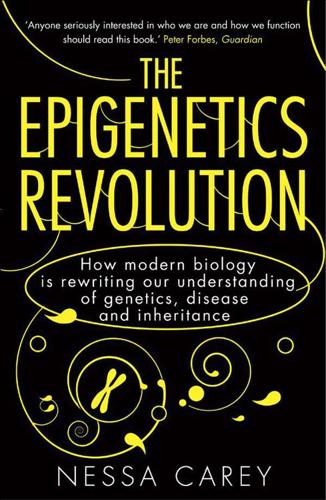
Epigenetics Revolution: How Modern Biology Is Rewriting Our Understanding of Genetics, Disease and Inheritance
by
Nessa Carey
Published 31 Aug 2011
However, it wasn’t clear how significant this was for the genes normally found in the nuclei of cells, rather than ones that were injected into cells. The key work in establishing the importance of methylation in mammalian cells came out of the laboratory of Adrian Bird, who has spent most of his scientific career in Edinburgh, Conrad Waddington’s old stomping ground. Professor Bird is a Fellow of the Royal Society and a former Governor of the Wellcome Trust, the enormously influential independent funding agency in UK science. He is one of those traditional British scientific types – understated, soft-spoken, non-flashy and drily funny. His lack of self-promotion is in contrast to his stellar international reputation, where he is widely acknowledged as the godfather of DNA methylation and its role in controlling gene expression.
…
The major force in this field is Professor Azim Surani, from Cambridge University, who started his scientific career by obtaining his PhD under the supervision of Robert Edwards. Since Professor Edwards received his early research training in Conrad Waddington’s lab, we can think of Azim Surani as Conrad Waddington’s intellectual grandson. Azim Surani is another of those UK academics who carries his prestige very lightly, despite his status. He is a Fellow of the Royal Society and a Commander of the British Empire, and has been awarded the prestigious Gabor Medal and Royal Society Royal Medal. Like John Gurdon and Adrian Bird, he continues to break new ground in a research area that he pioneered over a quarter of a century ago. Starting in the mid 1980s, Azim Surani carried out a programme of experiments which showed unequivocally that mammalian reproduction is much more than a matter of a delivery system.
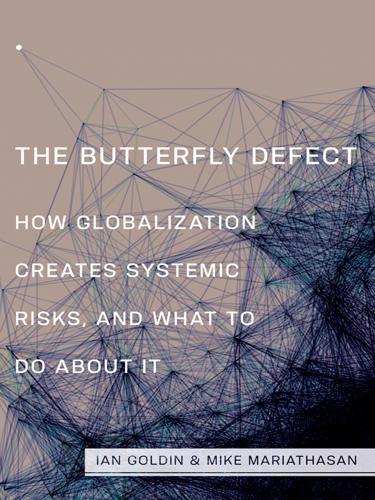
The Butterfly Defect: How Globalization Creates Systemic Risks, and What to Do About It
by
Ian Goldin
and
Mike Mariathasan
Published 15 Mar 2014
Lorenz, 1963, “Deterministic Nonperiodic Flow,” Journal of the Atmospheric Sciences 20 (2): 130–141. The original metaphor referred to the flapping of a seagull’s wings. The term “butterfly effect” was coined later by a colleague, Phil Merilees, as the title for one of Lorenz’s talks. See Tim Palmer, 2009, “Edward Norton Lorenz, 23 May 1916–16 April 2008,” Biographical Memoirs of Fellows of the Royal Society 55: 139–155, esp. 145 ff. ACKNOWLEDGMENTS 1. Ian Goldin and Tiffany Vogel, 2010, “Global Governance and Systemic Risk in the 21st Century: Lessons from the Financial Crisis,” Global Policy 1 (1): 4–15. INTRODUCTION 1. We are most grateful to an anonymous referee for suggesting this introduction for the book. 2.
…
Accessed 24 August. http://www.medicalnewstoday.com/articles/246964.php. Paillard, Christophe-Alexandre. 2010. “Russia and Europe’s Mutual Energy Dependence.” Journal of International Affairs 63 (2): 65–84. Palmer, Tim. 2009. “Edward Norton Lorenz, 23 May 1916–16 April 2008.” Biographical Memoirs of Fellows of the Royal Society 55: 139–155. ———. 2011. “A CERN for Climate Change.” Physics World, March, 14–15. Accessed 24 July 2013. http://www.oxfordmartin.ox.ac.uk/downloads/press/climate-Palmer.pdf. Pappaioanou, Marguerite. 2009. “Highly Pathogenic H5N1 Avian Influenza Virus: Cause of the Next Pandemic?” Comparative Immunology, Microbiology, and Infectious Diseases 32 (4): 287–300.
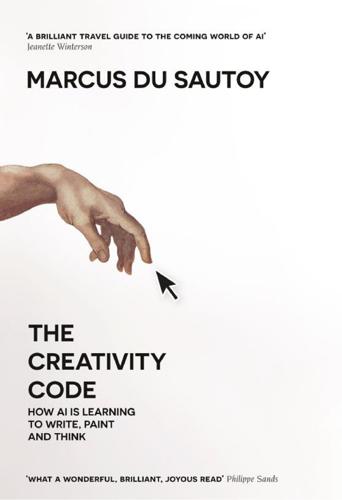
The Creativity Code: How AI Is Learning to Write, Paint and Think
by
Marcus Du Sautoy
Published 7 Mar 2019
It was Hassabis’s algorithm AlphaGo that had started my whole existential crisis about whether the job of being a mathematician would continue to be a human one. Hassabis and I had both recently been made Fellows of the Royal Society, one of the highest accolades for a scientist. So if Hassabis could get an algorithm to 9 dan status in Go, could he get an algorithm to prove a mathematical theorem that might lead to it being elected as a Fellow of the Royal Society? But when I turned to Hassabis and threw down the gauntlet, I got something of a surprise. ‘We’re already on the case,’ he whispered to me. It seems as if nothing has escaped their radar.
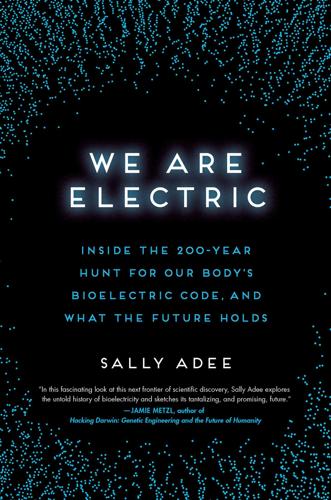
We Are Electric: Inside the 200-Year Hunt for Our Body's Bioelectric Code, and What the Future Holds
by
Sally Adee
Published 27 Feb 2023
They were a wild success. In 1798, the Royal Hospital in Copenhagen officially adopted the tractors for treatment. In London, the Royal Society “accepted” the tractors and the accompanying book (there’s always a book), and by 1804, a Perkinean Institution had been established. Members included fellows of the Royal Society. Soon a hospital was built whose sole treatment was “tractoration.” Testimonials abounded: not least from bishops and clergymen, whom Perkins had slyly provided with that most ancient grift: free review samples. “I have used the tractors with success in several cases in my own family,” wrote one recipient, channeling the logic of a multilevel marketing scheme.
…
“Meet the Roomba’s Ancestor: The Cybernetic Tortoise,” IEEE Spectrum, 28 February 2020 <https://spectrum.ieee.org/meet-roombas-ancestor-cybernetic-tortoise> 26 Cobb, The Idea of the Brain, p. 190 27 Hodgkin, Alan. “Edgar Douglas Adrian, Baron Adrian of Cambridge. 30 November 1889–4 August 1977.” Biographical Memoirs of Fellows of the Royal Society 25 (1979), pp. 1–73 (p. 19) 28 Tatu, Laurent. “Edgar Adrian (1889–1977) and Shell Shock Electrotherapy: A Forgotten History?.” European Neurology, vol. 79, nos. 1–2 (2018), pp. 106–7 29 Underwood, Emil. “A Sense of Self.” Science, vol. 372, no. 6547 (2021), pp. 1142–5 (pp. 1142–3) 30 Olds, James.
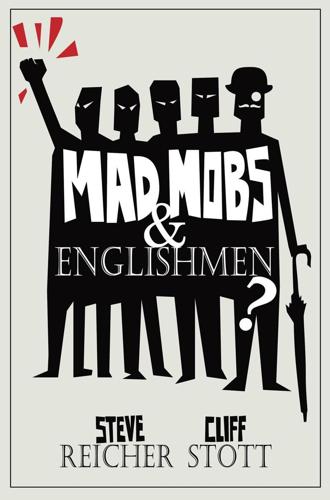
Mad Mobs and Englishmen? Myths and Realities of the 2011 Riots
by
Steve Reicher
and
Cliff Stott
Published 18 Nov 2011
222 Biographies Stephen Reicher is the world’s leading expert on crowd psychology, having studied the area for over thirty years and advised the Government, the Police and the Fire Service on how people behave in crowds. He is currently Professor of Psychology at the University of St Andrews and is an Academician of the Social Sciences, a Fellow of the Royal Society of Edinburgh, Past Editor of the British Journal of Social Psychology and a Scientific Consultant to Scientific American Mind. His work on other group phenomena includes mass social influence and political rhetoric, nationalism, delinquency, leadership and tyranny, and his work on tyranny was featured in four one-hour documentaries on BBC2 (www.bbcprisonstudy.org).
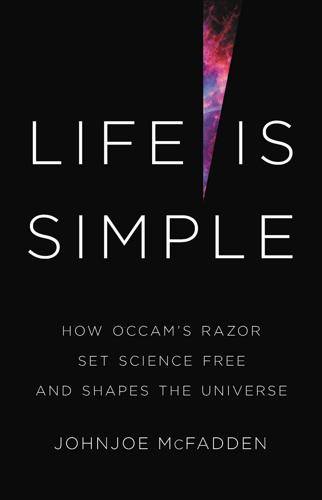
Life Is Simple: How Occam's Razor Set Science Free and Shapes the Universe
by
Johnjoe McFadden
Published 27 Sep 2021
With the fall of Boston, he sailed for London where he managed to set himself up as a consultant responsible for recruiting and equipping the British army fighting the Revolutionary War. While working for the crown, Thompson developed an interest in military engineering, designing his own experiments that earned him election as a fellow of the Royal Society in 1779. His work was interrupted when he was accused of spying for the French, prompting him to flee to the Continent. There he obtained a post in Munich as adviser to the Elector of Bavaria, and invented the field kitchen, portable boilers and the pressure cooker. The Elector was so pleased that he made Rumford a Count of the Holy Roman Empire.
…
He remained a socialist all his life and was a staunch advocate of both land nationalisation and women’s rights. Unlike many of his naturalist colleagues, he strongly opposed eugenics. Darwin died in 1882 and was buried at Westminster Abbey. Wallace was one of the pall-bearers. Aged seventy, Wallace was finally elected a fellow of the Royal Society, forty years older than the age Darwin had been when awarded the same honour. Alfred stated that he would have enjoyed the society’s membership more if he had received it while he still possessed the strength to attend its meetings. In 1908, on the fiftieth anniversary celebration of the reading of the Wallace–Darwin papers held at the Linnean Society, Wallace described how natural selection had come to him ‘in a sudden flash of inspiration’.
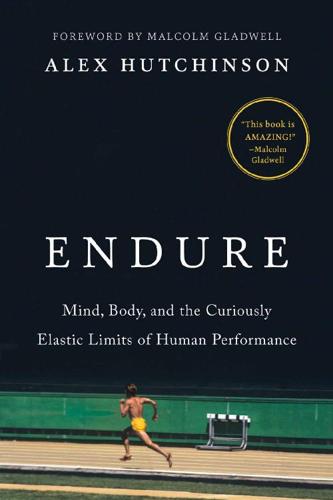
Endure: Mind, Body, and the Curiously Elastic Limits of Human Performance
by
Alex Hutchinson
Published 6 Feb 2018
Hugh Long, a coauthor and experimental subject in Hill’s Manchester studies, recalls “running up and down stairs, or round the professor’s garden while at intervals healthy samples of blood were withdrawn from my arms”; quoted in “Archibald Vivian Hill. 26 September 1886–3 June 1977,” Biographical Memoirs of Fellows of the Royal Society 24 (1978): 71–149. 20. “reaches a maximum beyond which no effort can drive it”: Hill, Muscular Activity, p. 98. 21. an analysis of world records: A. V. Hill, “The Physiological Basis of Athletic Records,” Nature, October 10, 1925. For Hill’s ideas on muscle viscosity, see Muscular Movement in Man (New York: McGraw-Hill, 1927).
…
Merton, “Voluntary Strength and Fatigue,” Journal of Physiology 123, no. 3 (1954); Alan J. McComas, “The Neuromuscular System,” in Exercise Physiology: People and Ideas, ed. Charles Tipton (Oxford and New York: Oxford University Press, 2003); John Rothwell and Ian Glynn, “Patrick Anthony Merton. 8 October 1920–13 June 2: Elected FRS 1979,” Biographical Memoirs of Fellows of the Royal Society 52 (2006): 189–201. 12. By the time Stéphane Couleaud: Couleaud’s misadventures at the Tor des Géants are recounted on his blog, stephanecouleaud.blogspot.com: “Tor de Geants 2001–Edizione 2–11/14 sept,” October 4, 2011. Some of Couleaud’s data is presented in Guillaume Millet’s presentation, “Fatigue and Ultra-Endurance Performance,” at the Endurance Research Conference at the University of Kent in September 2015, along with Millet’s own Tor des Géants experience.
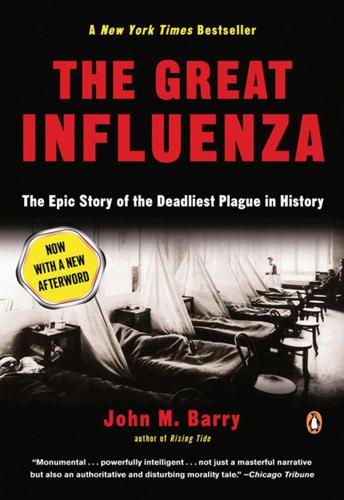
The Great Influenza: The Story of the Deadliest Pandemic in History
by
John M. Barry
Published 9 Feb 2004
“To bleed at the very onset”: 00. “Pneumonia is a self-limited disease”: Ibid. “true inwardness of research”: Quoted in McLeod, “Oswald Theodore Avery, 1877–1955,” Journal of General Microbiology (1957), 540. “An acute need for privacy”: René Dubos, “Oswald Theodore Avery, 1877–1955,” Biographical Memoirs of Fellows of the Royal Society, 35. “as if a mask dropped”: Ibid. “a natural born comedian”: Donald Van Slyke, oral history, NLM. about Landsteiner’s personal life: René Dubos, The Professor, the Institute, and DNA (1976), 47. notified he’d won the Nobel: Saul Benison, Tom Rivers: Reflections on Life in Medicine and Science, an Oral History Memoir (1967), 91–93.
…
“the best claim to serious consideration”: Thomson and Thomson, Influenza, v. 9, 512. “scientific problems were almost forced on him”: René Dubos, The Professor, the Institute and DNA (1976), 174. “not as broad”: Ibid., 74. “narrow range of techniques”: Dubos, “Oswald Theodore Avery, 1877–1955,” Biographical Memoirs of Fellows of the Royal Society (1956), 40. “‘the whole secret…in this little vial’”: Michael Heidelberger, oral history, 70, NLM. “extreme precision and elegance”: Dubos, Professor, Institute and DNA, 173. “never published a joint paper”: Ibid., 82. “digging a deep hole”: Ibid., 175. “fundamental to biology”: Heidelberger, oral history, 129.
…
“Swine Influenza Virus Infections in Humans.” Journal of Infectious Disease 136, supp. S (Dec. 1977): 386–89. Draggoti, G. “Nervous Manifestations of Influenza.” Policlinico 26, no. 6 (Feb. 8, 1919) 161, quoted in JAMA 72, no. 15 (April 12, 1919): 1105. Dubos, René. “Oswald Theodore Avery, 1877–1955.” Biographical Memoirs of Fellows of the Royal Society 2 (1956): 35–48. Durand, M. L. et al. “Acute Bacterial Meningitis in Adults: A Review of 493 Episodes.” New England Journal of Medicine 328, no. 1 (Jan. 1993) 21–28. Eaton, Ernest. “A Tribute to Royal Copeland.” Journal of the Institute of Homeopathy 31, no. 9: 555–58. Ebert, R. G. “Comments on the Army Venereal Problem.”
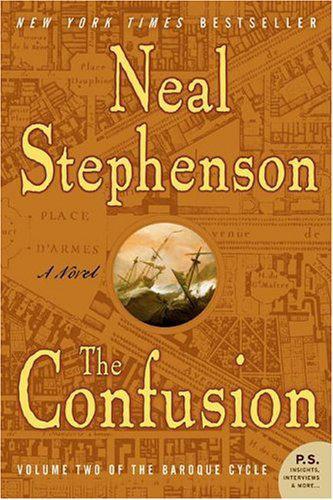
The confusion
by
Neal Stephenson
Published 13 Apr 2004
What our countries cannot pay for with bullion, they will have to get in trade.” “C’est juste, monsieur, but do not forget that there is trade not only in tangible stuff like Monsieur Wachsmann’s wax, but also in money itself: the stock in trade of Lothar von Hacklheber. Which is a murky and abstruse business, and a fit topic of study for Fellows of the Royal Society.” “I thought they only studied butterflies.” “Some of them, monsieur, study banks and money as well; and I fear they have got a head start on our French lepidopterists.” Cap Gris-Nez, France 15 DECEMBER 1689 A DUTCHMAN PAINTING THIS SCAPE would have had little recourse to pigments; a spate of gull-shit on a bench could have served as his palette.
…
The sorts of men who, having no other outlet for their ideas, would have devoted their lives to it, had they come of age when I did, may now make careers in the City, the Colonies, or in foreign adventures. We of the Royal Society are generally identified as Whigs. Our President is the Marquis of Ravenscar, a very powerful Whig, and he has been assiduous in finding ways to harness the ingenuity of the Fellows of the Royal Society for practical ends. Some of these, I gad, have to do with money, revenue, banks, stocks, and other subjects that fascinate you. But I must confess I have fallen quite out of touch with such matters. Isaac Newton was elected to Parliament a year ago, in the wake of our Revolution. He had made a name for himself in Cambridge opposing the former King’s efforts to salt the University with Jesuits.
…
Daniel was staring fixedly into Roger’s eyes, but in the background he could see the Tory turning away. The Tory planted himself with his back toward Roger, set his coffee-cup down on a sideboard, rested a hand idly on the hilt of his small-sword, and seemed to survey the crowd of merry Whigs filling the house. “It follows that any Fellow of the Royal Society would be excellent—but merely excellent is not quite good enough, Daniel. Normally it takes me hours to explain why this is true. You, thank God, have perceived it instantly. The fate of Britain and of Christendom hinge upon the power of the new good Pound Sterling to drive out the bad—to sweep all opposition from the field and bring gold and silver to our shores from every corner of the earth.
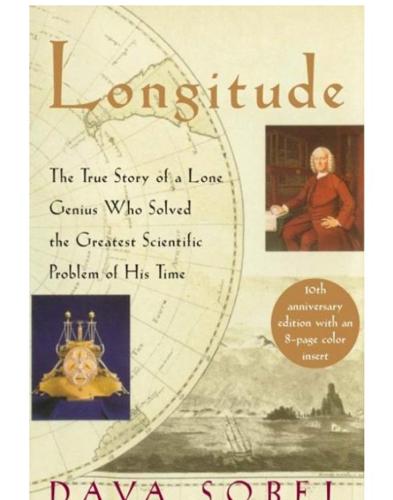
Longitude
by
Dava Sobel
Published 1 Jan 1995
As Harrison described their first meeting in his inimitable prose, “Mr Graham began as I thought very roughly with me, and the which had like to have occasioned me to become rough too; but however we got the ice broke . . . and indeed he became as at last vastly surprised at the thoughts or methods I had taken.” Harrison went to see Graham at ten o’clock in the morning, and by eight that evening they were still talking shop. Graham, the premier scientific instrument maker and a Fellow of the Royal Society, invited Harrison, the village carpenter, to stay to dinner. When Graham finally said good night, he waved Harrison back to Barrow with every encouragement, including a generous loan, to be repaid with no great haste and at no interest. Harrison spent the next five years piecing together the first sea clock, which has come to be called Harrison’s No. 1, for it marked the first in a series of attempts—H-1 for short.
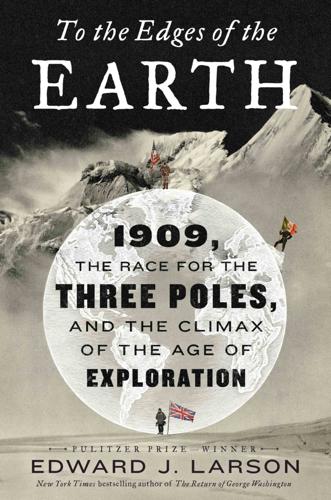
To the Edges of the Earth: 1909, the Race for the Three Poles, and the Climax of the Age of Exploration
by
Edward J. Larson
Published 13 Mar 2018
Such was the allure of polar exploration that nearly five hundred persons had applied to go, despite the prospect of small wages, a hazardous journey, bitter cold, and long months of complete darkness.12 In picking the fifty-year-old David, Shackleton noted, “I understand he is a man well capable of ‘roughing it.’”13 In recommending the twenty-five-year-old Mawson, David described him as “a most indefatigable person.”14 Drawn to adventure, both David and Mawson had joined multiple trips to the Australian bush and one expedition each to the South Pacific. And each jumped at Shackleton’s offer, which David, an elected Fellow of the Royal Society of London and holder of many other honors, called “one of the greatest compliments” of his life.15 For his part, while in Australia, Shackleton gave as his own motive, “The fact of having been in the Antarctic Circle once always makes one want to go again.”16 Australians should appreciate this attitude, he noted.
…
Even though it was dark outside for twenty-four hours each day, the party followed the clock in keeping a set pattern of sleeping from around midnight to about 8:30 A.M. Everyone took turns both as “messman,” cleaning up after meals, and in standing the night watch. This included the fifty-year-old David—a Fellow of the Royal Society, or F.R.S.—who never sought or received special treatment. “It was a sight for the gods,” Priestley noted, “to see a well-known F.R.S., drying a wet plate with a wetter cloth, and looking ruefully at the islands of grease remaining, after he has spent five minutes hard at work on it.”48 By his willing attitude, David set an example for others.
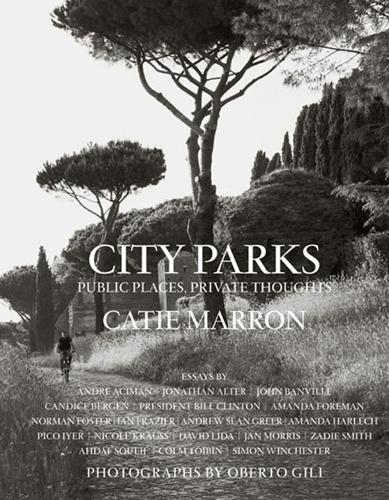
City Parks
by
Catie Marron
She has frequented Trieste since the end of the Second World War and is the author of Trieste and the Meaning of Nowhere. ZADIE SMITH is the author of the novels White Teeth, The Autograph Man, On Beauty, and NW, and the essay collection Changing My Mind. She is a professor of creative writing at New York University and a fellow of the Royal Society of Literature. AHDAF SOUEIF’S The Map of Love was short-listed for the Booker Prize and translated into thirty languages. Her most recent books are her memoir Cairo: My City, Our Revolution and, as editor, Reflections on Islamic Art. She is founder and chair of the Palestine Festival of Literature (PalFest).
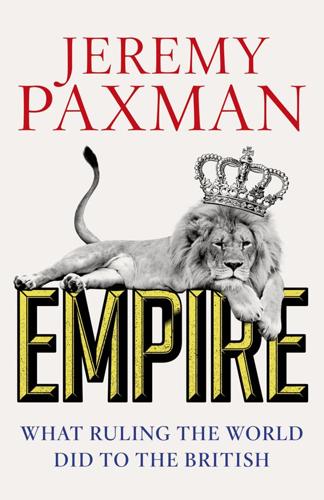
Empire: What Ruling the World Did to the British
by
Jeremy Paxman
Published 6 Oct 2011
By eighteen he was working on a North Sea coal-ship, and on joining the Royal Navy his exceptional navigation and charting skills earned him rapid promotion to the rank of master. The voyages of exploration carried out under James Cook’s command expressed the combination of motives which drove the new expansion of empire. Inevitably, competition with the historical enemy was part of it. When, in the 1760s, the Fellows of the Royal Society heard that Paris was planning to dispatch expeditions to watch the transit of Venus across the sun (a predictable astronomical event vital for calculating the distance between the earth and the sun), they were troubled, demanding that Britain should do the same. The vessel which would carry British ambition was a one-time coal-ship, renamed the Endeavour.
…
(As it turned out, it was not true – he was nowhere near the source of the White Nile, and the place he was celebrating – which was not even the place where the Blue Nile began – had anyway been ‘discovered’ by a Portuguese priest many years previously.) Bruce was fêted in London and elected a fellow of the Royal Society, even though the Society’s president considered him a ‘brute’. But not everyone quite believed him. Dr Johnson, who had appointed himself an expert on Abyssinia, thought Bruce ‘not a distinct relater’ and soon came to doubt whether he had been to that country at all. Many of the public agreed.
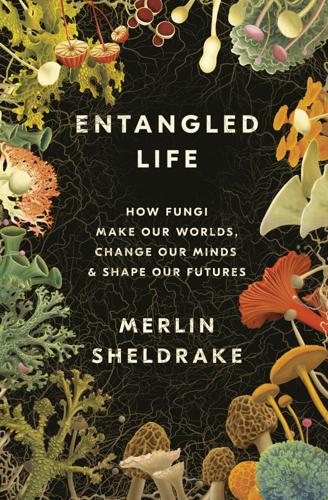
Entangled Life: How Fungi Make Our Worlds, Change Our Minds & Shape Our Futures
by
Merlin Sheldrake
Published 11 May 2020
Monotropa uniflora One of the next people to pick up the Monotropa question and run with it was the English researcher David Read, who is among the most distinguished researchers in the history of mycorrhizal biology and a co-author of the definitive textbook on the subject. For his work on mycorrhizal associations he received a knighthood and was made a Fellow of the Royal Society. Known by his colleagues in the United States as “Sir Dude,” Read is well-known for his charm and fierce wit, and is most often described by fellow researchers as a “character.” In 1984, Read and his colleagues were the first to show conclusively that carbon could pass between normal green plants through fungal connections.
…
Out of this ambiguity grew actual trees, with actual apples, that fell to the ground and rotted into a pungent alcoholic mess. The story of Newton’s apple is apocryphal because Newton himself left no written account of it. However, there are several versions of the story recorded by Newton’s contemporaries. The most detailed account was written by William Stukeley, a young fellow of the Royal Society and antiquarian best-known today for his works on Britain’s stone circles. In 1726, Stukeley recalled, he and Newton ate together in London: After dinner, the weather being warm, we went into the garden & drank thea under the shade of some apple tree; only he & myself…Amid other discourse, he told me, he was just in the same situation, as when formerly the notion of gravitation came into his mind.

Empire of the Scalpel: The History of Surgery
by
Ira Rutkow
Published 8 Mar 2022
He was an articulate and effective public speaker, who was a member of numerous learned societies and enjoyed the admiration and friendship of eminent men, especially those in the artistic and literary worlds. Over the years, William was appointed Physician Extraordinary to Queen Charlotte of Mecklenburg-Strelitz, wife of George III, elected a Fellow of the Royal Society (the oldest national scientific institution in the world), opened a renowned school of anatomy and medical museum in Great Windmill Street, and authored a book that revolutionized the study of the pregnant female with its realistic depictions of a fetus in utero. John was William’s polar opposite.
…
Neither the surviving daughter nor son had children of their own (whether they had congenital syphilis, passed from John to Anne to them, that left them sterile is an open question). It was around the time of his marriage that honors and recognition began to come John’s way. He was elected a Fellow of the Royal Society, named to the full-time surgical staff at St. George’s Hospital, and received membership in the London Company of Surgeons. In 1776, George III designated Hunter his Surgeon Extraordinary, followed by appointments as surgeon-general of the army and inspector general of regimental hospitals.
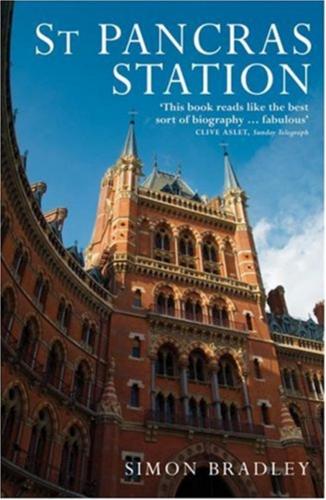
St Pancras Station
by
Simon Bradley
Published 14 Apr 2007
Indeed, Barlow’s curriculum vitae is one of achievement, prosperity and acclaim throughout. In his early twenties he oversaw the modernisation of the ordnance and lighthouses at Constantinople, for which the Sultan appointed him to the Nichan Iftikhar, or Order of Glory; in his thirty-eighth year he became an exceptionally youthful Fellow of the Royal Society; and so on. But in human terms Barlow now seems remote: he left no memoir and has found no biographer, and even the date of his marriage has not been discovered. Can his inner life have been as troubled and self-reproachful as Scott’s? We are unlikely ever to know. The French and American locations mentioned are reminders that late nineteenth-century Britain was industrial top dog no longer.
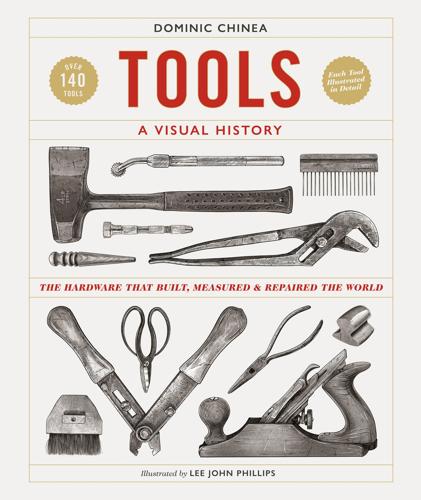
Tools a Visual History: The Hardware That Built, Measured and Repaired the World
by
Dominic Chinea
Published 5 Oct 2022
He was the first person to write a DIY book (in the English language) and it may come as a surprise to find out that he wrote it in the 1670s. It was called Mechanick Exercises: or, The Doctrine of Handy-Works and in the year after the first part of the book was published, he became the first tradesman to be elected as a Fellow of the Royal Society. He broke down some serious class barriers. The reason I’m bringing him up here is because he’s got a lot of time for the humble mortice chisel and goes into great detail about cutting out a mortice. It may seem quite amazing to read an instructional guide dating from the 1600s that you can follow, but the techniques haven’t really changed.
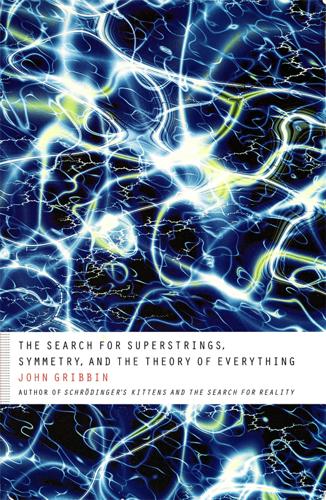
The Search for Superstrings, Symmetry, and the Theory of Everything
by
John Gribbin
Published 29 Nov 2009
Faraday spent the rest of his career at the Royal Institution, becoming Director of the Laboratory in 1825 and Professor of Chemistry there in 1833. He was a great experimenter and explainer rather than a mathematician, and was a very successful and genuinely popular lecturer, who founded the Royal Institution Christmas lectures for children, which continue to this day. By the time he died, in 1867, he had become a Fellow of the Royal Society and was widely recognized as one of the scientific giants of his day. But he was also modest, and along the way turned down the offer of a knighthood and twice refused the offer of the Presidency of the Royal Society. And, in his attempts to find a way to describe what happened when electric and magnetic forces act upon one another, he came up with the idea—what we would now call a model—of a ‘line of force’, which Maxwell then elaborated into the first field theory.

Where We Are: The State of Britain Now
by
Roger Scruton
Published 16 Nov 2017
He is the author of 50 books, including works of philosophy, history, fiction and criticism. Bloomsbury publishes his classic England: An Elegy, the more recent Fools, Frauds and Firebrands and How to be a Conservative, as well as the The Disappeared, a chilling tale of kidnap, rape and trafficking. Sir Roger is a Fellow of the Royal Society of Literature, a Fellow of the British Academy and an Honorary Bencher of the Inner Temple. He currently teaches an MA course in philosophy for the University of Buckingham. Also by Roger Scruton and available from Bloomsbury: England: An Elegy Fools, Frauds and Firebrands How to be a Conservative A Political Philosophy News from Somewhere Conversations with Roger Scruton (with Mark Dooley) The West and the Rest The Face of God I Drink Therefore I Am Gentle Regrets Animal Rights and Wrongs Sexual Desire Understanding Music Bloomsbury Continuum An imprint of Bloomsbury Publishing Plc 50 Bedford Square 1385 Broadway London New York WC1B 3DP NY 10018 UK USA www.bloomsbury.com BLOOMSBURY, CONTINUUM and the Diana logo are trademarks of Bloomsbury Publishing Plc First published 2017 © Roger Scruton, 2017 Roger Scruton has asserted his right under the Copyright, Designs and Patents Act, 1988, to be identified as Author of this work.
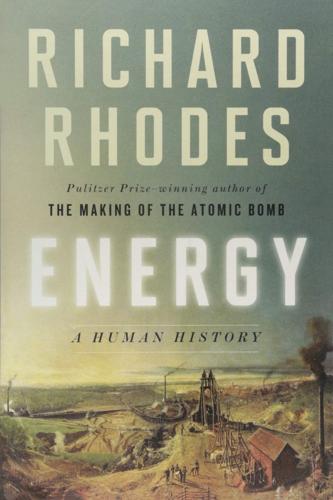
Energy: A Human History
by
Richard Rhodes
Published 28 May 2018
“Arie Jan Haagen-Smit, 1900–1977.” Journal of the Air Pollution Control Association 28, no. 5 (1978): 516–17. Podobnik, Bruce. Global Energy Shifts: Fostering Sustainability in a Turbulent Age. Philadelphia: Temple University Press, 2006. Pontecorvo, Guido. “Hermann Joseph Muller, 1890–1967.” Biographical Memoirs of Fellows of the Royal Society 14 (November 1968): 348–89. Poore, Ben Perley. “Biographical Notice of John S. Skinner.” The Plough, the Loom, and the Anvil 7, no. 1 (1854): 1–20. Prentiss, Mara. Energy Revolution: The Physics and the Promise of Efficient Technology. Cambridge, MA: Harvard University Press, 2015. Priestley, Joseph.
…
Sturtevant, “Social Implications of the Genetics of Man,” Science 120, no. 3115 (September 10, 1954): 407. 32. Muller in Spanish Civil War: Elof Axel Carlson, Genes, Radiation, and Society: The Life and Work of H. J. Muller. (Ithaca, NY: Cornell University Press, 1981), 237–40. 33. Quoted in Guido Pontecorvo, “Hermann Joseph Muller, 1890–1967,” Biographical Memoirs of Fellows of the Royal Society 14 (November 1968): 356. 34. Quoted in Carlson, Genes, Radiation, and Society, 399. 35. Hermann J. Muller, “The Production of Mutations,” Nobel Lecture (1946). Nobelprize.org online. 36. Ibid. 37. Ernest Caspari and Curt Stern, “The Influence of Chronic Irradiation with Gamma-Rays at Low Dosages on the Mutation Rate in Drosophila Melanogaster,” Genetics 33, no. 1 (1948): 81. 38.

Lifespan: Why We Age—and Why We Don't Have To
by
David A. Sinclair
and
Matthew D. Laplante
Published 9 Sep 2019
Meanwhile, Gordon Brown announced that he would be stepping down as prime minister in response to a disastrous parliamentary result for his Labour Party, which had lost more than ninety seats in the previous week’s general election. With the eyes of the English sports world on one part of London and the attention of the British political universe on another, the goings-on at Carlton House Terrace were missed by all but the most attentive observers of the president, council, and fellows of the Royal Society of London for Improving Natural Knowledge. More simply known as the Royal Society, the world’s oldest national scientific organization was established in 1660 to promote and disseminate “new science” by big thinkers of the day such as Sir Francis Bacon, the Enlightenment’s promulgator of “the prolongation of life.”1 Befitting its rich scientific history, the society has held annual scientific events ever since.
…
RAFAEL DE CABO (January 20, 1968–): Spanish-born scientist at the National Institutes of Health, an expert in the study of the effects of diet on health and lifespan in rodents and primates. BENJAMIN GOMPERTZ (March 5, 1779–July 14, 1865): British self-educated mathematician who is best known for the Gompertz-Makeham Law of Human Mortality, a demographic model (1825). He became a Fellow of the Royal Society and then an actuary at Alliance Assurance company, founded by his brother-in-law Sir Moses Montefiore with his relative Nathan Mayer Rothschild. LEONARD P. GUARENTE (June 6, 1952–): American molecular biologist and professor at MIT, best known for codiscovering the role of the sirtuins in aging and the necessity of NAD+ for sirtuin activity, linking energy metabolism to longevity.
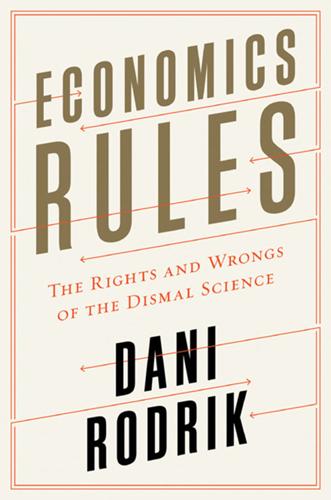
Economics Rules: The Rights and Wrongs of the Dismal Science
by
Dani Rodrik
Published 12 Oct 2015
Thomas Herndon, Michael Ash, and Robert Pollin, “Does High Public Debt Consistently Stifle Economic Growth? A Critique of Reinhart and Rogoff” (Amherst: University of Massachusetts at Amherst, Political Economy Research Institute, April 15, 2013). 20. R. E. Peierls, “Wolfgang Ernst Pauli, 1900–1958,” Biographical Memoirs of Fellows of the Royal Society 5 (February 1960): 186. 21. Albert Einstein, “Physics and Reality,” in Ideas and Opinions of Albert Einstein, trans. Sonja Bargmann (New York: Crown, 1954), 290, cited in Susan Haack, “Science, Economics, ‘Vision,’ ” Social Research 71, no. 2 (Summer 2004): 225. CHAPTER 3: Navigating among Models 1.
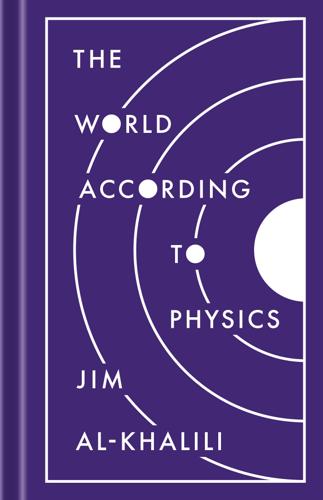
The World According to Physics
by
Jim Al-Khalili
Published 10 Mar 2020
He is one of Britain’s best-known science communicators and has written numerous books, including Quantum: A Guide for the Perplexed; The House of Wisdom: How Arabic Science Saved Ancient Knowledge and Gave Us the Renaissance; and Life on the Edge: The Coming of Age of Quantum Biology. He is a fellow of the Royal Society and lives in Southsea, England. TWITTER | @jimalkhalili
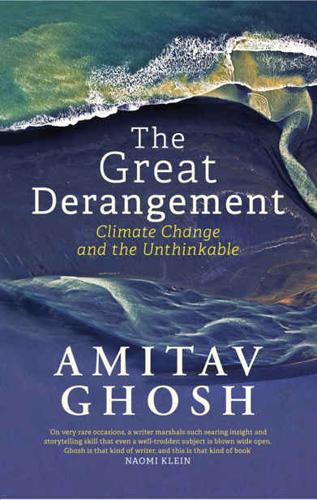
The Great Derangement: Climate Change and the Unthinkable
by
Amitav Ghosh
Published 16 Jan 2018
In 1830, master builder Naurojee Jamsetjee Wadia launched a steamer, the Hugh Lindsay, that was fitted with two engines sent out from England. But he was outdone by his relative, the engineer Ardeseer Cursetjee Wadia, who entered into apprenticeship in the Bombay Dockyard in 1822 at the age of fourteen and was eventually elected a Fellow of the Royal Society. Ardeseer wrote in his memoirs: ‘My enthusiastic love of science now led me to construct, unassisted, a small steam engine of about 1 HP. I likewise endeavored to explain to my countrymen the nature and properties of steam; and to effect this point I had constructed at a great expense in England, a marine steam-engine, which, being sent out to Bombay, I succeeded with the assistance of a native blacksmith in fixing in a boat of my own building.’
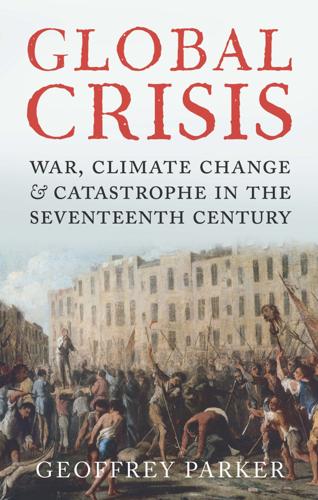
Global Crisis: War, Climate Change and Catastrophe in the Seventeenth Century
by
Geoffrey Parker
Published 29 Apr 2013
In 1648 the peace of Westphalia forbade ‘any person to impugn in any place, in publick or in private, by preaching, teaching, disputing, writing or consulting, the Transaction of Passau [of 1552], the Peace of Religion [of 1555], and, above all, the present declaration or transaction; or to render them doubtful’. Already in London, the group of scholars who would later become the first Fellows of the Royal Society had resolved upon a similar accommodation: from its ‘first ground and foundation’ in 1645, at their weekly meetings, members ‘barred all discourses of divinity, state-affairs, and of news … confining ourselves to philosophical inquiries’.63 Fifteen years later, on his return to England, Charles II followed their wise example and signed legislation that forbade the law courts to hear any suit arising from things ‘counselled, commanded, acted or done’ during ‘the late distractions’.
…
In a provocative article on the spread of ‘political arithmetic’ in seventeenth-century Europe, Jacob Soll has observed that ‘European states shared not only complex economic, military, political, social and spiritual crises but also comparable responses to them’ – and examples are not hard to find, from the ‘Cameralism’ of many German states, to later Stuart England, where Sir John Plumb underlined the envy of many of Charles II's ministers for what they perceived as the ‘systematic efficiency’ of their French counterparts. Many royal officials became Fellows of the Royal Society, because they ‘believed that the practical problems of life were best approached through knowledge’; and although their tunnel-vision often led them (like Vauban) ‘into absurdities’, by 1700 ‘Britain probably enjoyed the most efficient government machine in Europe’. There was more to political arithmetic in the seventeenth century than counting the reproductive potential of hogs.46 The Containment of Disease James Scott drew attention to another consequence of ‘seeing like a state’.
…
Everyone, they found, was ‘well acquainted with writings of all the learned and ingenious men’ of Europe, whether dead (such as Bacon, Harvey, Galileo and Descartes) or alive (they named Robert Boyle, Thomas Hobbes and Robert Hooke).61 The ‘Republic of Letters’ also included practitioners who lived east of the Elbe and south of the Pyrenees. The Danzig brewer and astronomer Johannes Hevelius, who in 1647 published the lavishly illustrated Selenographia, the first lunar atlas (see Plate 1), had studied at Leiden and met scholars in England and France; became a Fellow of the Royal Society; and welcomed Edmond Halley and other prominent scientists to his impressive observatory in Danzig. In Spain, Miguel Marcelino Boix y Moliner asserted in a book entitled Hippocrates illuminated (1716) that ‘the foreign doctors and philosophers of the last century’ had only managed to ‘make great advances’ thanks to plagiarizing their Spanish precursors.
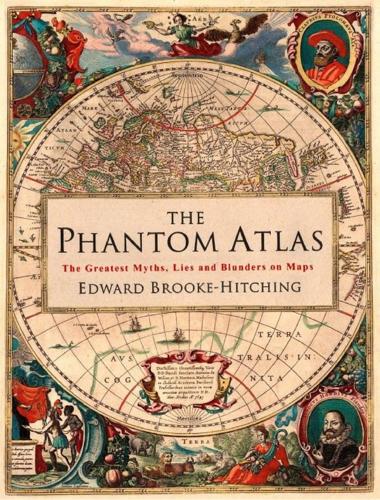
The Phantom Atlas: The Greatest Myths, Lies and Blunders on Maps
by
Edward Brooke-Hitching
Published 3 Nov 2016
Had they travelled further, though, they would have encountered Mount Paektu, Korea’s highest peak and the source of both rivers, and in the shadow of this giant mountain range the mistake would no doubt have been hastily rubbed out. LOST CONTINENTS OF LEMURIA AND MU Philip Sclater, secretary of the Zoological Society of London for forty-two years, was a foremost expert in the field of ornithology in the nineteenth century. Oxford-educated and a fellow of the Royal Society, he wrote more than one thousand papers, books and articles. In his 1858 paper published by the Proceedings of the Linnean Society Sclater divided the world into six zoological regions, which remain in use today: Aethiopian, Australasian, Indian, Nearctic, Neotropical and Palaearctic. Seven animals have been named in his honour, including the Mexican chickadee (Poecile sclateri), the erect-crested penguin (Eudyptes sclateri) and Madagascar’s blue-eyed black lemur (Eulemur flavifrons), which is known as Sclater’s lemur.
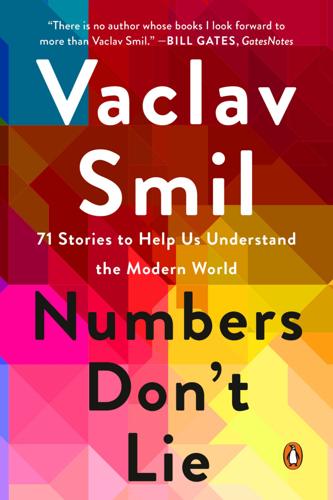
Numbers Don't Lie: 71 Stories to Help Us Understand the Modern World
by
Vaclav Smil
Published 4 May 2021
PENGUIN BOOKS NUMBERS DON’T LIE Vaclav Smil is distinguished professor emeritus at the University of Manitoba. He is the author of over forty books on topics including energy, environmental and population change, food production and nutrition, technical innovation, risk assessment, and public policy. He is a Fellow of the Royal Society of Canada and a Member of the Order of Canada. PENGUIN BOOKS An imprint of Penguin Random House LLC penguinrandomhouse.com First published in Great Britain by Viking, an imprint of Penguin Random General, Penguin General is part of the Penguin Random House group of companies, 2020 Published in Penguin Books 2021 Copyright © 2020 by Vaclav Smil Penguin supports copyright.

Turing's Cathedral
by
George Dyson
Published 6 Mar 2012
Philip Duncan Thompson, “A History of Numerical Weather Prediction in the United States,” Bulletin of the American Meteorological Society 64, no. 7 (July 1983): 757. 3. Philip Duncan Thompson, in John. M. Lewis, “Philip Thompson: Pages from a Scientist’s Life,” Bulletin of the American Meteorological Society 77, no. 1 (January 1966): 107–8. 4. Lewis Richardson, as quoted by Ernest Gold, “Lewis Fry Richardson, 1881–1953,” Obituary Notices of Fellows of the Royal Society 9 (November 1954): 230. 5. Ibid., p. 222. 6. Meaburn Tatham and James E. Miles, eds., The Friends’ Ambulance Unit 1914–1919: A Record (London: Swarthmore Press, 1920), p. 212. 7. Olaf Stapledon to Agnes Miller, December 8, 1916, in Robert Crossley, ed., Talking Across the World: The Love Letters of Olaf Stapledon and Agnes Miller, 1913–1919 (Hanover and London: University Press of New England, 1987), pp. 192–93. 8.
…
Kurt Gödel, “Remarks Before the Princeton Bicentennial Conference on Problems in Mathematics,” December 17–19, 1946, in Solomon Feferman, ed., Collected Works, vol. 2 (Oxford: Oxford University Press, 1986), p. 150. 20. M. H. A. Newman, “Alan Mathison Turing, 1912–1954,” Biographical Memoirs of Fellows of the Royal Society, vol. 1 (1955), p. 256; M. H. A. Newman, “Dr. A. M. Turing,” London Times, June 16, 1954, p. 10. 21. Herman Goldstine, interview with Nancy Stern; Julian Bigelow, interview with Nancy Stern. 22. Julian Bigelow, interview with Nancy Stern. 23. Malcolm MacPhail to Andrew Hodges, December 17, 1977, in Hodges, Alan Turing, p. 138. 24.
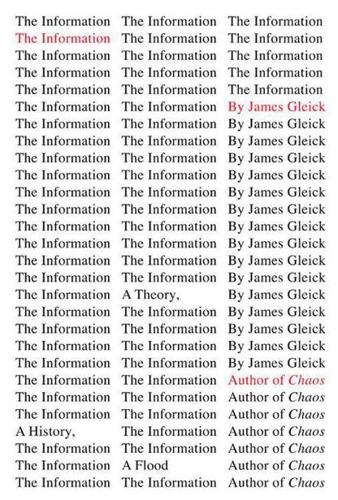
The Information: A History, a Theory, a Flood
by
James Gleick
Published 1 Mar 2011
He briefly became an actuary for a new Protector Life Assurance Company and computed statistical tables rationalizing life expectancies. He tried to get a university professorship, so far unsuccessfully, but he had an increasingly lively social life, and in scholarly circles people were beginning to know his name. With Herschel’s help he was elected a fellow of the Royal Society. Even his misfires kindled his reputation. On behalf of The Edinburgh Journal of Science Sir David Brewster sent him a classic in the annals of rejection letters: “It is with no inconsiderable degree of reluctance that I decline the offer of any Paper from you. I think, however, you will upon reconsideration of the subject be of opinion that I have no other alternative.
…
Who Wrote the Book of Life: A History of the Genetic Code. Stanford, Calif.: Stanford University Press, 2000. Kelly, Kevin. Out of Control: The Rise of Neo-Biological Civilization. Reading, Mass.: Addison-Wesley, 1994. Kendall, David G. “Andrei Nikolaevich Kolmogorov. 25 April 1903–20 October 1987.” Biographical Memoirs of Fellows of the Royal Society 37 (1991): 301–19. Keynes, John Maynard. A Treatise on Probability. London: Macmillan, 1921. Kneale, William. “Boole and the Revival of Logic.” Mind 57, no. 226 (1948): 149–75. Knuth, Donald E. “Ancient Babylonian Algorithms.” Communications of the Association for Computing Machinery 15, no. 7 (1972): 671–77.

Mr Five Per Cent: The Many Lives of Calouste Gulbenkian, the World's Richest Man
by
Jonathan Conlin
Published 3 Jan 2019
Ralph Hewins, Mr Five Per Cent: The Biography of Calouste Gulbenkian (London: Hutchinson, 1957), p. 14. As Ekserdjian noted, ‘He is proud – and rightly – of having studied under Kelvin and Rutherford and having been made an AKC of King’s, London “with distinction”.’ ED, 10 June 1950. 26. ‘John Millar Thomson’, Obituary Notices of Fellows of the Royal Society, 1:2 (1933), 91–4. 27. ‘Herbert Tomlinson’, Obituary Notices of Fellows of the Royal Society, 1:2 (1933), 89. 28. Herbert Tomlinson, ‘The Scientific Papers of Herbert Tomlinson’, KCL Archives, C/PP4. 29. The claim that Gulbenkian made the journey in 1889 is incorrect, as he describes himself rushing to Tbilisi in order to be there for the visit of Tsar Alexander III, who arrived on 29 September 1888, and did not return in 1889 or 1890. 30.
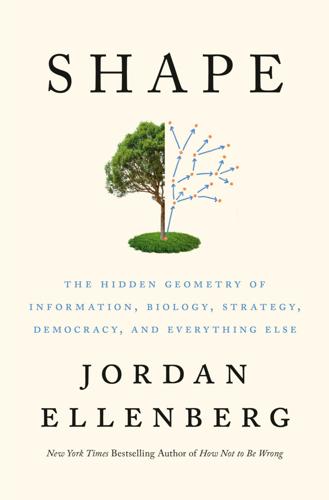
Shape: The Hidden Geometry of Information, Biology, Strategy, Democracy, and Everything Else
by
Jordan Ellenberg
Published 14 May 2021
Why the Country’s Coronavirus Death Rate Is Low,” New York Times, Apr. 5, 2020. a state lab: Ellenberg, “Five People. One Test. This Is How You Get There.” Wuhan, the city: BBC repor-t, June 8, 2000, at www.bbc.com/news/world-asia-china-52651651. “he also had the habit”: James Norman Davidson, “William Ogilvy Kermack, 1898–1970,” Biographical Memoirs of Fellows of the Royal Society 17 (1971), 413–14. the SIR model did: M. Takayasu et al., “Rumor Diffusion and Convergence During the 3.11 Earthquake: A Twitter Case Study,” PLoS ONE 10, no. 4 (2015): 1–18. M. Cinelli et al., in a 2020 preprint, “The COVID-19 Social Media Infodemic,” argue that the spread of information around the outset of the COVID-19 pandemic should be analyzed similarly, and that rumors on Instagram have a measurably higher R0 than those on Twitter.
…
Also present at the dinner: Poincaré’s remarks at the November 30, 1901, dinner of the Royal Society, and Ross’s presence there, are from The Times, Dec. 2, 1901, p. 13, a reference I obtained from G. Cantor, “Creating the Royal Society’s Sylvester Medal,” British Journal for the History of Science 37, no. 1 (Mar. 2004): 75–92. The Times refers only to “Major Ross” as being present, but Ronald Ross had been elected a Fellow of the Royal Society that year, would later be its vice president, and is referred to as “Major Ross” in other contemporary documents, so I’m pretty confident it’s our mosquito man. He got so good: All biographical info on Jordan and the mind-reading trick is from Persi Diaconis and Ron Graham, Magical Mathematics (Princeton: Princeton University Press, 2015), 190–91.

The Survival of the City: Human Flourishing in an Age of Isolation
by
Edward Glaeser
and
David Cutler
Published 14 Sep 2021
The petitioners then turned: Our understanding of these events is due entirely to a remarkably fine unpublished PhD dissertation by Carla Sue Patterson on the path to better health in British factories. “wide river of medical learning”: Guthrie, “The Influence of the Leyden School upon Scottish Medicine.” Percival followed that flood: Waterston, Shearer, and Royal Society of Edinburgh, Former Fellows of the Royal Society of Edinburgh, 1783–2002, 728. friends with Benjamin Franklin: “Benjamin Franklin and the Manchester Lit & Phil,” Manchester Literary and Philosophical Society. coined the term: Waddington, “The Development of Medical Ethics—a Sociological Analysis,” 36. He wrote scientific papers: Waddington, 39.
…
Pandora’s Lunchbox: How Processed Food Took Over the American Meal. New York: Scribner, 2014. “Washington ‘Three Strikes,’ Initiative 593 (1993).” Ballotpedia. Accessed January 7, 2021. https://ballotpedia.org/Washington_%22Three_Strikes%22,_Initiative_593_(1993). Waterston, C. D., A. Macmillan Shearer, and Royal Society of Edinburgh. Former Fellows of the Royal Society of Edinburgh, 1783–2002: Biographical Index. Edinburgh: The Royal Society of Edinburgh, 2006. Wayman, Erin. “Chile’s Quake Larger but Less Destructive than Haiti’s.” Earth, March 1, 2010. www.earthmagazine.org/article/chiles-quake-larger-less-destructive-haitis. “Ways and Means Committee Releases Report on International Drug Pricing.”
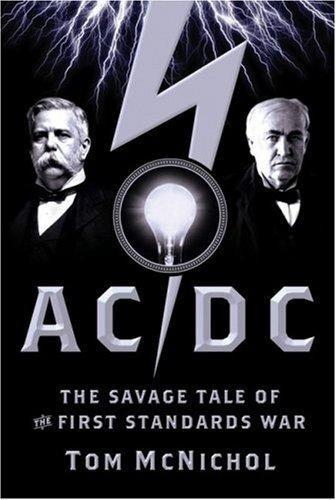
AC/DC: The Savage Tale of the First Standards War
by
Tom McNichol
Published 31 Aug 2006
He was in the process of selling his printing shop in Philadelphia and retiring from business in order to devote his time to what Franklin called “philosophical studies and amusements.” After seeing Spencer’s show, Franklin went out and purchased all the electrical equipment he could find, including a Leyden jar. Franklin also obtained a long glass tube for generating static charges, a gift from Peter Collinson, a botanist and fellow of the Royal Society of London. Collinson would quickly become Franklin’s most trusted correspondent in matters relating to electricity, a sounding board for emerging theories. The two men exchanged dozens of letters, and Franklin’s folksy, clear-headed descriptions of his experiments, which were later published, would demystify electricity for thousands.
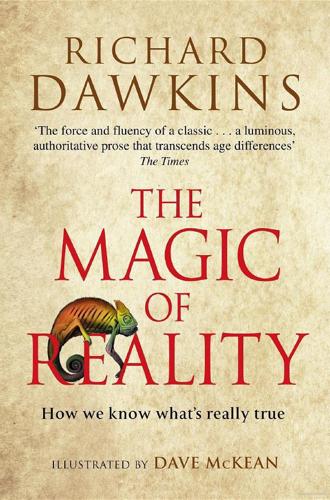
The Magic of Reality: How We Know What's Really True
by
Richard Dawkins
Published 3 Oct 2011
J., 87 time: beginning of, 164–5; measuring, 44–6, 100 time machine, 14, 46–9, 256 Tiv tribe, 124 Tlaloc, 125 tossing a coin, 222, 224–6 tradition, 241 tsunami, 200–1, 223 universe: alien life forms, 180–1; big bang, 164–5, 177; distances, 166–7; expanding, 177; laws of, 252–3; observable, 164–5; origin myths, 162–4 uranium, 92, 134 uranium-238, 44–5, 46 Utnapashtim, 146–8 vaccination, 232 Venus, 116, 132 Vesuvius, eruption, 214 viruses, 227, 230, 234 Vishnu, 163 vision, 194–7 volcanoes, 43, 67, 69–70, 212, 214 watches, 243–4 water on other planets, 190–2 water wheels, 141–2, 143 Watson, James, 17–18 Wegener, Alfred, 208–9, 210 weightlessness, 111–12 West African legends, 124, 149, 204–5, 217 whales, 18, 58, 72, 157, 197 white dwarf, 133 Wilde, Oscar, 216 Wilkins, Maurice, 18 wind, 90, 173, 213, 229 winter, 100, 102–3, 107–9, 118–21 Wittgenstein, Ludwig, 105 Wright, Elsie, 245–6 X-rays, 18, 157, 158, 167, 196–7 Zulu creation myth, 163 About the Author and Illustrator Richard Dawkins was first catapulted to fame with his iconic book The Selfish Gene, which he followed with a string of bestselling books, including the phenomenal The God Delusion. The Magic of Reality is his first book written for a younger, more general readership and it also became an immediate bestseller in its original, colour illustrated hardback edition. Dawkins is a fellow of the Royal Society and the Royal Society of Literature, and has won numerous awards. He was a professor at Oxford University until 2008 and he remains a fellow of New College. He has also written and presented several television documentaries, including The Genius of Charles Darwin in 2008 and Faith School Menace in 2010.

Fred Dibnah's Age of Steam
by
David Hall
and
Fred Dibnah
Published 1 Jan 2003
As for electricity, as early as 1840 he had learned about an engineer who received an electrical discharge from an emission of high-pressure steam and it was from this that the principle of hydroelectric energy was derived. He wrote papers and gave lectures on the subject and then, while he was still practising as a solicitor, he was made a fellow of the Royal Society. Armstrong was perhaps the greatest innovator of the Victorian age and nothing he attempted was a failure. But he didn’t seem to have quite the same bravado as Brunel. That was to be found in a man who served his engineering apprenticeship with Armstrong. Charles Parsons was one of the greatest engineers that this country has produced.
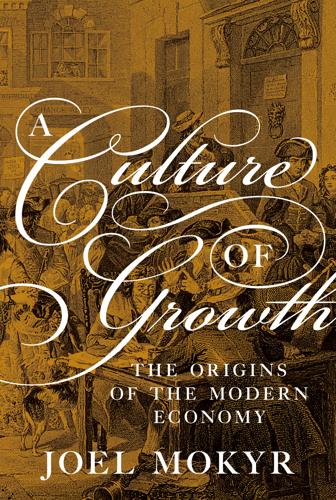
A Culture of Growth: The Origins of the Modern Economy
by
Joel Mokyr
Published 8 Jan 2016
“The business and design of the Royal Society is to improve the knowledge of naturall things, and all useful Arts, Manufactures, Mechanick practises, Engines, and Inventions by Experiments” (Lyons, 1944, p. 41).34 Robert Hooke added in his preface to the second edition of his Micrographia that the Fellows of the Royal Society “have one advantage peculiar to themselves, that very many of their number are men of converse and traffick, which is a good omen that their attempts will bring philosophy from words to action, seeing men of business have had so great a share in their first foundation” (Hooke, 1667, unpaginated preface).
…
By 1700 there were already 2,000 coffeehouses in London, many of which were sites of literary activity, discussions about natural philosophy, and political debates (Cowan, 2005). Coffeehouses remained important centers for the dissemination of knowledge and beliefs throughout the eighteenth century. Perhaps the most famous of these coffeehouse societies was the London Chapter Coffee House, the favorite of the fellows of the Royal Society, whose membership resembled (and overlapped with) the Birmingham Lunar Society.55 Masonic lodges, too, proved a locus for the exchange of scientific and technological information, even if that was not their primary mission.56 Public lectures on scientific and engineering subjects attracted a surprising number of attendants.

Architects of Intelligence
by
Martin Ford
Published 16 Nov 2018
His research into the neural mechanisms underlying imagination and planning was listed in the top ten scientific breakthroughs of 2007 by the journal Science. Demis is a five-time World Games Champion, and a Fellow of the Royal Society of Arts and the Royal Academy of Engineering, winning the Academy’s Silver Medal. In 2017 he was named in the Time 100 list of the world’s most influential people, and in 2018 was awarded a CBE for services to science and technology. He was elected as a Fellow of the Royal Society, has been a recipient of the Society’s Mullard Award, and was also awarded an Honorary Doctorate by Imperial College London. Demis co-founded DeepMind along with Shane Legg and Mustafa Suleyman in 2010.
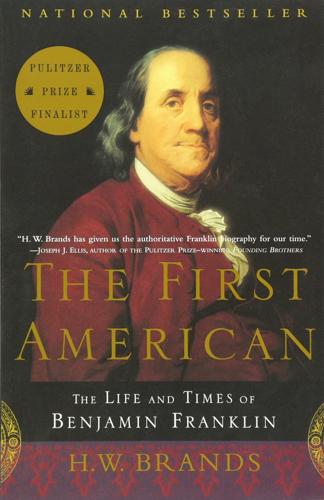
The First American: The Life and Times of Benjamin Franklin
by
H. W. Brands
Published 1 Jan 2000
But plenty of history’s commonplace ideas—from the flatness of the earth to the faster falling of heavy objects—had proven, on closer examination, to be wrong; what remained in the puzzle of the lightning was for the electrical conjecture to be tested. This was precisely what Franklin proposed to do. In April 1749 Franklin wrote a long letter to John Mitchell, a colleague of Peter Collinson and likewise a fellow of the Royal Society. In this letter he put forward a complex theory of lightning with a fairly simple essence: that particles of water in thunderclouds became electrically charged by their wind-borne jostling, and that lightning was nothing more than the discharge of the pent-up electrical force. This theory supported certain recommendations, which in turn comported with observation.
…
One hot summer day in 1750, when the thermometer in the shade stood at 100 (of the degrees devised earlier in Franklin’s life by the German instrument-maker Fahrenheit), he had observed how as long as he wore a shirt wetted with his sweat, and sat in the breeze of an open window, he remained relatively cool; but when he changed his wet shirt for a dry one, he grew noticeably warmer. In the spring of 1758 he traveled from London to Cambridge, where he collaborated with another physician-scientist and fellow of the Royal Society, John Hadley. Franklin and Hadley took turns wetting the ball of a thermometer with ether, which they then evaporated off the ball by means of a bellows. With each round of wetting and evaporating, the mercury dropped. Though the air in the room remained at 65 degrees, the thermometer fell below the freezing point.
…
At the time of Franklin’s arrival in London, a transplanted Irishman named Pockrich gave concerts playing glasses tuned to different notes by the different amounts of water in them. But his career was cut short by a fire in his room, which killed him and destroyed his apparatus. A friend of Franklin’s and a fellow of the Royal Society, Edward Delaval, extended the experiments of Pockrich, contriving a set of glasses better tuned and easier to play. “Being charmed with the sweetness of its tones, and the music he produced from it,” Franklin explained, “I wished only to see the glasses disposed in a more convenient form.”
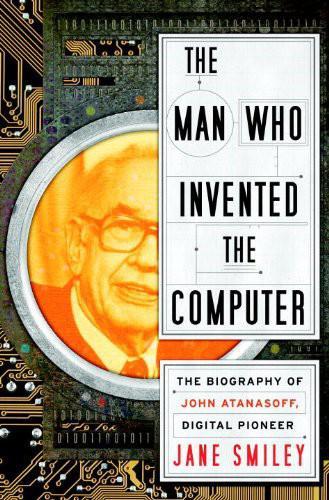
The Man Who Invented the Computer
by
Jane Smiley
Published 18 Oct 2010
(Iowa State University Library/Special Collections Department) One of the ABC’s two electrostatic memory drums, the only surviving part of the original machine. (Courtesy of U.S. Department of Energy’s Ames Laboratory) Konrad Zuse’s Z1 computer, built in his parents’ Berlin apartment c. 1936. (Courtesy of Horst Zuse) Konrad Zuse, 1910–1995. (Courtesy of Horst Zuse) Alan Turing, 1912–1954, upon his election as a Fellow of the Royal Society in 1951. (© National Portrait Gallery, London) Bletchley Park staff at work on deciphering codes, Hut 6. (Bletchley Park Trust Archive) A Lorenz SZ42 Schlüsselzusatz cipher machine on display at Bletchley Park. (Bletchley Park Trust Archive) Thomas Flowers, 1905–1998. (Bletchley Park Trust Archive) Colossus at work in 1943; note paper tape.
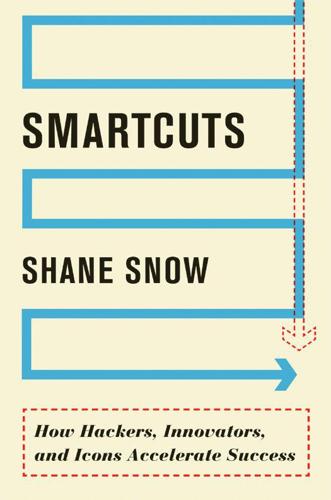
Smartcuts: How Hackers, Innovators, and Icons Accelerate Success
by
Shane Snow
Published 8 Sep 2014
In 2010 he cofounded Contently Inc., with the mission of building a better media world. He writes about technology for Wired magazine and Fast Company, and is known nationwide for speaking about the future of media. His writing has appeared in The New Yorker, the Washington Post, and Time. A fellow of the Royal Society of the Arts, Snow has been named one of Forbes magazine’s “30 Under 30 Media Innovators,” Details magazine’s “Digital Mavericks,” and Inc. magazine’s “Coolest Entrepreneurs.” Smartcuts is his first book. Visit www.AuthorTracker.com for exclusive information on your favorite HarperCollins authors.
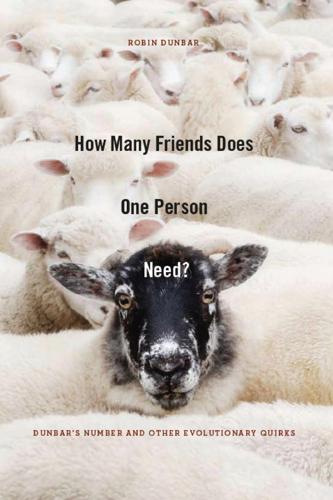
How Many Friends Does One Person Need? Dunbar’s Number and Other Evolutionary Quirks
by
Robin Dunbar
and
Robin Ian MacDonald Dunbar
Published 2 Nov 2010
The twenty thousand or so fine hairs that attach it to the fluid-filled compartment of the cochlea register the sound waves transmitted from the ear and turn them into nerve signals to the hearing centres in the brain. We’ve even had the same kind of disputes in mathematics. In 1764, the Reverend Thomas Bayes, an English Presbyterian minister and Fellow of the Royal Society, published a posthumous paper in which he sketched out a theory of probability based on confidence. It was an elegantly simple theory based on a single mathematical theorem that could be applied under any circumstances. But later mathematicians baulked at his ideas, preferring something that was more firmly rooted in observable facts: they argued that probability is better defined as something about the frequencies with which events (such as tosses of a coin) happen.
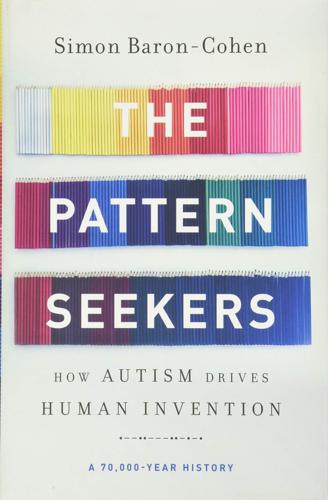
The Pattern Seekers: How Autism Drives Human Invention
by
Simon Baron-Cohen
Published 14 Aug 2020
,” Public Skateboard Development Guide, publicskateparkguide.org/vision/who-are-skateboarders/. 42. Fleming quoted in K. Haven (1994), Marvels of science: 50 fascinating 5-minute reads (Littleton, CO: Libraries Unlimited); see also L. Colebrook (1956), “Alexander Fleming 1881–1955,” Biographical Memoirs of Fellows of the Royal Society 2, 117–126; and R. Cruickshank (1955), “Sir Alexander Fleming, FRS,” Nature 175(4459), 663. 43. On the intraparietal sulcus, see G. A. Orban et al. (2006), “Mapping the parietal cortex of human and non-human primates,” Neuropsychologia 44(13), 2647–2667; D. Stout and T. Chaminade (2007), “The evolutionary neuroscience of tool making,” Neuropsychologia 45(5), 1091–1100; D.
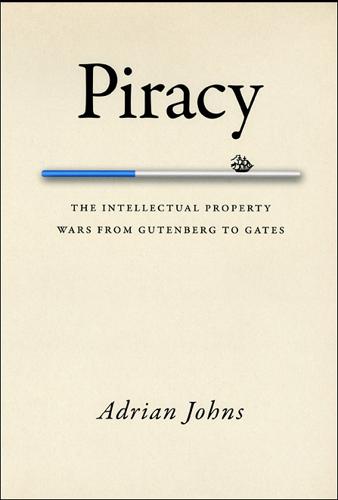
Piracy : The Intellectual Property Wars from Gutenberg to Gates
by
Adrian Johns
Published 5 Jan 2010
Grew too was affirming an ideal of custodianship, deploying silence to mark the bounds. As with print, so with medicines: London did not lack for apothecaries prepared to issue their own proclaimed versions of a successful product. Two brothers named Francis and George Moult came forward to compete with Grew. They were by no means unknowns. George Moult was a fellow of the Royal Society, having first been proposed as its operator back in 1685. And in the background to their venture lay a tangled story of ambition and rivalry. At first, apparently, George had agreed to buy Grew’s salt legitimately. But Francis had sought to steal a march on George by securing a cheaper price for himself.
…
Such a court too was not in fact instituted, but the idea that it could be returned time and time again. But any such plan immediately posed the problem of who should sit on such a body. Judges and advisors would need to be at once impartial, objective, technically expert, and practical. Watt suggested a panel of three Fellows of the Royal Society and two artisans. Others advanced different combinations, and the question recurred incessantly. It gave rise to a sustained and very widely publicized set of exchanges on the qualifications, social role, and credibility required of anyone who could authoritatively decide such matters.
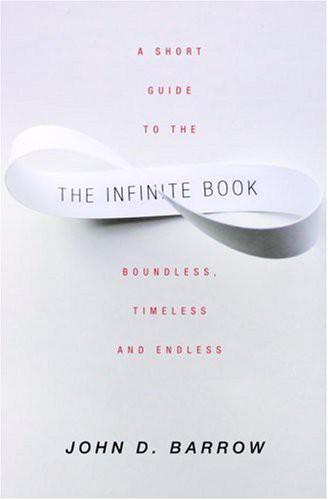
The Infinite Book: A Short Guide to the Boundless, Timeless and Endless
by
John D. Barrow
Published 1 Aug 2005
Rights assigned to EMI U Catalog Inc. and Warner Bros. Publications U.S. Inc. All rights reserved. Reprinted by permission of Warner Bros. Publications U.S. Inc., Miami, Florida 33014. John D. Barrow THE INFINITE BOOK John D. Barrow is professor of mathematical sciences at the University of Cambridge and a Fellow of the Royal Society. He is also the author of The Book of Nothing, The Constants of Nature, Theories of Everything, and Impossibility. He lives in England. BY THE SAME AUTHOR Theories of Everything The Left Hand of Creation (with Joseph Silk) L’Homme et le Cosmos (with Frank J. Tipler) The Anthropic Cosmological Principle (with Frank J.
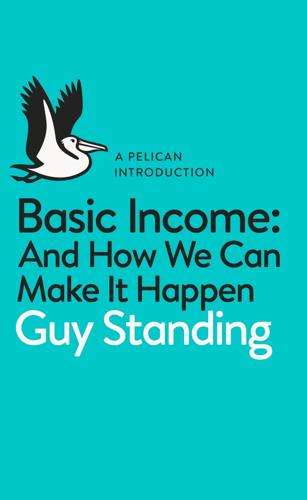
A Pelican Introduction: Basic Income
by
Guy Standing
Published 3 May 2017
Hugh Kennedy is Professor of Arabic in the Faculty of Languages and Cultures at School of Oriental and African Studies, London. He studied Arabic at the Middle East Centre for Arabic Studies before reading Arabic, Persian and History at Cambridge. He was formerly a professor of history at University of St. Andrews, a position he had held since 1972. He was elected Fellow of the Royal Society of Edinburgh in 2000. ISLAM Tariq Ramadan What is Islam? What are its principles, rituals, history, evolution and challenges? What do words such as Allah, Sharia, Jihad and Infidel really mean? Tariq Ramadan is Professor of Contemporary Islamic Studies at St Antony’s College and at the Faculty of Theology, University of Oxford.

The Wisdom of Psychopaths: What Saints, Spies, and Serial Killers Can Teach Us About Success
by
Kevin Dutton
Published 15 Oct 2012
Special thanks also go to my editors at William Heinemann, Tom Avery and Jason Arthur, and to the equally fastidious Amanda Moon and Karen Maine at Farrar, Straus and Giroux. A NOTE ABOUT THE AUTHOR Dr. Kevin Dutton is a research psychologist at the Calleva Research Centre for Evolution and Human Science, Magdalen College, University of Oxford. He is a fellow of the Royal Society of Medicine and the Society for the Scientific Study of Psychopathy. Dutton is the author of Split-Second Persuasion. His writing and research have been featured in Scientific American Mind, New Scientist, The Guardian, Psychology Today, and USA Today. He lives in Oxford, England.
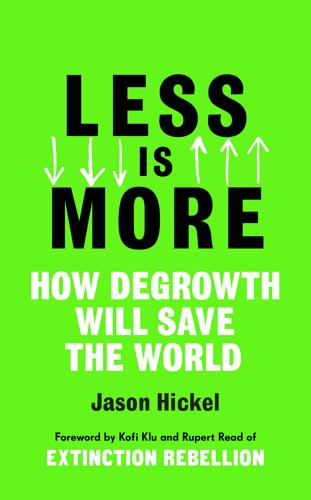
Less Is More: How Degrowth Will Save the World
by
Jason Hickel
Published 12 Aug 2020
Jason Hickel * * * LESS IS MORE How Degrowth Will Save the World Table of Contents PREFACEBy Kofi Mawuli Klu and Rupert Read of XR INTRODUCTIONWelcome to the Anthropocene Part OneMore is Less ONECapitalism – A Creation Story TWORise of the Juggernaut THREEWill Technology Save Us? Part TwoLess is More FOURSecrets of the Good Life FIVEPathways to a Post-Capitalist World SIXEverything is Connected Acknowledgements Endnotes About the Author Jason Hickel is an economic anthropologist, Fulbright Scholar and Fellow of the Royal Society of Arts. He is originally from Eswatini (Swaziland) and spent a number of years with migrant workers in South Africa, writing about exploitation and political resistance in the wake of apartheid. He has authored three books, including most recently The Divide: A Brief Guide to Global Inequality and its Solutions.
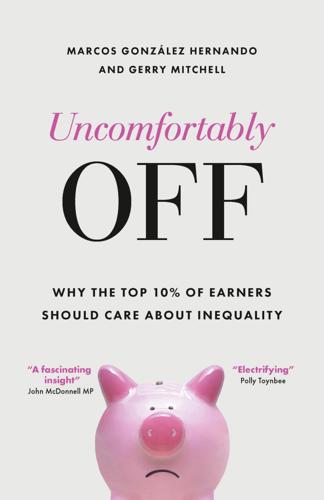
Uncomfortably Off: Why the Top 10% of Earners Should Care About Inequality
by
Marcos González Hernando
and
Gerry Mitchell
Published 23 May 2023
by Peter Schrank vi 7 25 43 93 99 131 About the authors Marcos González Hernando is Honorary Research Fellow at UCL Social Research Institute, Postdoctoral Researcher at Universidad Diego Portales and Adjunct Researcher at the Centre for the Study of Conflict and Social Cohesion. He is also a Fellow of the Royal Society of Arts and has a PhD in sociology from the University of Cambridge. Marcos has experience working in universities and think tanks, both in Latin America and Europe. His research interests include think tanks and policy experts, intellectual change, attitudes towards inequality, and economic and political elites.
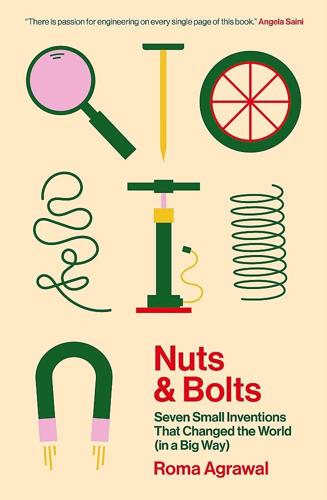
Nuts and Bolts: Seven Small Inventions That Changed the World (In a Big Way)
by
Roma Agrawal
Published 2 Mar 2023
‘Frederick Douglass’s Camera Obscura: Representing the Antislave “Clothed and in Their Own Form” ’. Critical Enquiry, vol. 42, Autumn 2015. Gauweiler, Lena, Dr Eckhardt, and Dr Behler. ‘Optische Pinzette (optical tweezer)’. Presented at the Laseranwendungstechnik WS 19/20 17 December 2019. Gest, H. ‘The Discovery of Microorganisms by Robert Hooke and Antoni van Leeuwenhoek, Fellows of The Royal Society’. Notes and Records of the Royal Society of London, vol. 58, no. 2, 22 May 2004. https://doi.org/10.1098/rsnr.2004.0055. Gregory, Andrew. ‘Bionic Eye Implant Enables Blind UK Woman to Detect Visual Signals’. Guardian, 21 January 2022. https://www.theguardian.com/society/2022/jan/21/bionic-eye-implant-blind-uk-woman-detect-visual-signals.
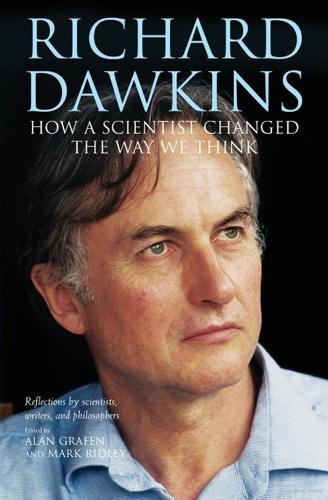
Richard Dawkins: How a Scientist Changed the Way We Think
by
Alan Grafen; Mark Ridley
Published 1 Jan 2006
Edwards, ‘The fundamental theorem of natural selection’, Biological Reviews, 69 (1994): 443-474. 13 A. Grafen, ‘Fisher the evolutionary biologist’, Journal of the Royal Statistical Society: Series D (The Statistican), 52 (2003): 319-329. 14 Hamilton, ‘The genetical evolution of social behaviour’ (1964). 15 A. Grafen, ‘William Donald Hamilton’, Biographical Memoirs of Fellows of the Royal Society, 50 (2004): 109-132. 16 See Edwards, ‘The fundamental theorem of natural selection’ (1994) and Grafen, ‘Fisher the evolutionary biologist’ (2003). 17 A. Grafen, ‘The optimisation of inclusive fitness’, Journal of Theoretical Biology (2005). 18 R. L. Trivers and H. Hare, ‘Haplodiploidy and the evolution of the social insects’, Science, 191 (1976): 249-263. 19 R.

Wonderland: How Play Made the Modern World
by
Steven Johnson
Published 15 Nov 2016
Humans had navigated oceans, built canals, crossed deserts, but always because some reward (real or imagined) lay at the end of the journey. Climbing fifteen thousand feet of ice, snow, and rock with nothing to reward you but a sense of achievement made no sense—particularly when the mountains were rumored to be the habitat of monstrous creatures. As late as 1723 a Swiss fellow of the Royal Society published a detailed description of the dragons that lived in the Alps. De Saussure recognized that he didn’t have the skills and fortitude to discover a route to the top of Mont Blanc on his own, and so he offered a reward to the first climber to make the ascent. On August 8, 1786, the French climbers Jacques Balmat and Michel Paccard reached the summit for the first time, and claimed de Saussure’s reward shortly thereafter.

Capitalism Without Capital: The Rise of the Intangible Economy
by
Jonathan Haskel
and
Stian Westlake
Published 7 Nov 2017
For the first time, it allowed doctors to make accurate, 3D representations of patients’ soft tissues. This was a real medical breakthrough, transforming everything from brain surgery to cancer treatment. Hounsfield was piled with honors: he received a Nobel prize and a knighthood and was made a Fellow of the Royal Society. But from a commercial point of view, it was something of a failure for EMI. EMI took out patents on the underlying technologies and invested to build the business, creating partnerships with hospitals to work out how CT could help doctors and building a sales force to sell the scanners to American hospitals.
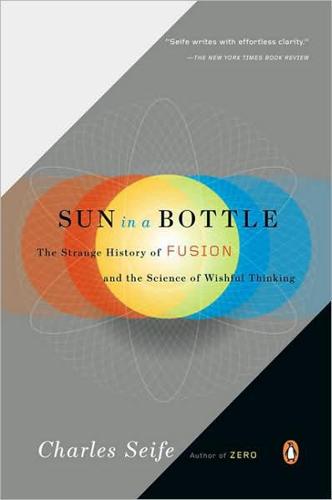
Sun in a Bottle: The Strange History of Fusion and the Science of Wishful Thinking
by
Charles Seife
Published 27 Oct 2009
He had unwittingly discovered an effect that would be called surface-enhanced Raman scattering, a phenomenon that is now used in a variety of sensitive chemical detectors. Conventional wisdom was wrong and Fleischmann was right. The scientific community soon rewarded Fleischmann for his discovery. In the mid-1980s, he was made a Fellow of the Royal Society, the highest honor that Britain bestows upon its scientists. By the late 1980s, his reputation made him welcome at scientific institutions around the world. He spent most of his time hopping between laboratories at his home university in Southampton, the Harwell laboratory (of ZETA fame), and a lab at the University of Utah.
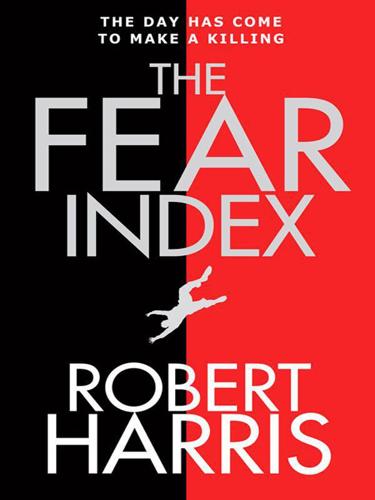
The Fear Index
by
Robert Harris
Published 14 Aug 2011
For his collaboration with Roman Polanski on the film version of The Ghost, he won both the French César and the European Film Award for best adapted screenplay. A graduate of Cambridge University, where he studied English, he joined the BBC and later wrote for the Observer, the Sunday Times and the Daily Telegraph. He is a Fellow of the Royal Society of Literature. He is married to Gill Hornby. They have four children and live in a village near Hungerford in West Berkshire. Also by Robert Harris FICTION Fatherland Enigma Archangel Pompeii Imperium The Ghost Lustrum NON-FICTION A Higher Form of Killing (with Jeremy Paxman) Gotcha!
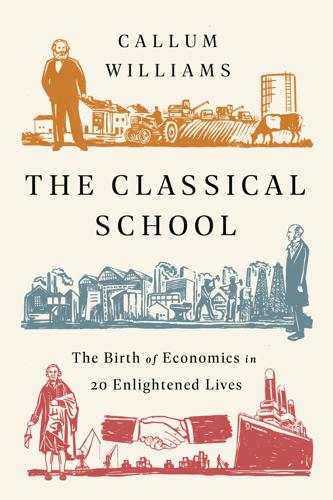
The Classical School
by
Callum Williams
Published 19 May 2020
When Adam Smith (1723–90) visited France with his tutee, the Duke of Buccleuch, and the duke fell ill, Quesnay was sent for. He was one of four physicians to Louis XV (1710–74), as well as the doctor of Madame de Pompadour (1721–64), Louis’s official mistress (in the words of one biographer, he was “discreet” in his medical service). Despite living in France, Quesnay was a fellow of the Royal Society in London, and was responsible for some important medical advances. He wrote an important book on the subject of bloodletting, a common medical practice at the time. When the Académie royale de chirurgie was founded in 1731, Quesnay was selected as its secretary. The lay of the land In his sixties Quesnay turned his attention to economic problems.
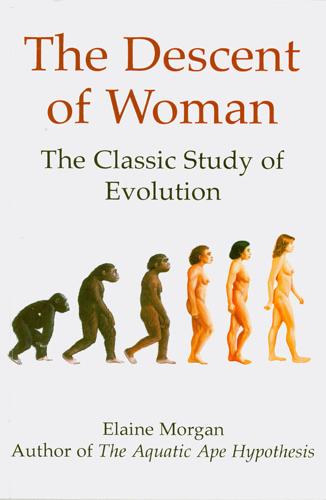
The Descent of Woman
by
Elaine Morgan
Published 1 Feb 2001
Why should reputable scientists be resorting to such convoluted arguments and still refusing even to give serious consideration to the Hardy alternative? There is no mystery about that. Hardy himself first conceived the aquatic idea nearly sixty years ago. Like Darwin, he waited for decades before publishing anything. ‘I wanted,’ he says, ‘to get a good professorship. I wanted to become a Fellow of the Royal Society, and I couldn’t do that holding the aquatic theory. And so, quite candidly, I kept it smothered up.’ His friends entreated him: ‘Alister, Alister, think of your reputation I’ And when he finally spoke out he recalls thinking after the initial reception, ‘Lord, I daren’t go back to Oxford now.’
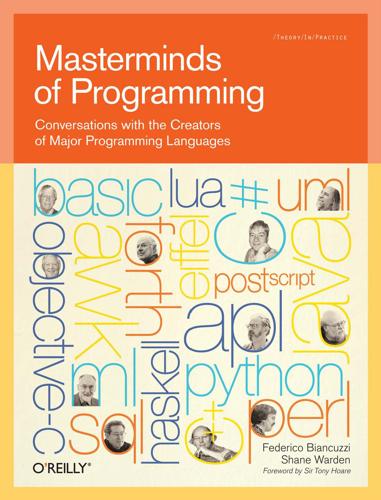
Masterminds of Programming: Conversations With the Creators of Major Programming Languages
by
Federico Biancuzzi
and
Shane Warden
Published 21 Mar 2009
He is the recipient of the ACM Software System Award (2006) and the first Dahl-Nygaard prize for object technology (2005), a fellow of the ACM, and a member of the French Academy of Technologies. Robin Milner graduated from the University of Cambridge in 1958. After short posts, he joined the University of Edinburgh in 1973, where he cofounded the Laboratory for Foundation of Computer Science in 1986. He was elected Fellow of the Royal Society in 1988, and in 1991 won the ACM’s AM Turing Award. He rejoined Cambridge University in 1995, headed the Computer Laboratory there for four years, and retired in 2001. His research achievements (often joint) include: the system LCF, a model that underlies many later systems for interactive reasoning; Standard ML, an industry-scale but rigorously based programming language; the Calculus of Communicating Systems (CCS); and the pi calculus.
…
An example of practice into theory: Featherweight Java specifies the core of Java in less than one page of rules. He is a principal designer of the Haskell programming language, contributing to its two main innovations: type classes and monads. Wadler is professor of theoretical computer science at the University of Edinburgh. He holds a Royal Society-Wolfson Research Merit Fellowship, is a Fellow of the Royal Society of Edinburgh, and is an ACM Fellow. Previously, he worked or studied at Avaya Labs, Bell Labs, Glasgow, Chalmers, Oxford, CMU, Xerox Parc, and Stanford, and lectured as a guest professor in Paris, Sydney, and Copenhagen. He appears at position 70 on Citeseers list of most-cited authors in computer science, is a winner of the POPL Most Influential Paper Award, served as editor-in-chief of the Journal of Functional Programming, and served on the Executive Committee of the ACM Special Interest Group on Programming Languages.
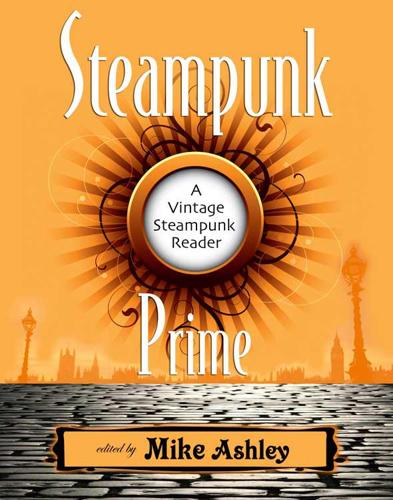
Steampunk Prime: A Vintage Steampunk Reader
by
Mike Ashley
and
Paul Di Filippo
Published 1 Jul 2010
There are plenty more, but perhaps the most original is the following, from The London Magazine for October 1904. — M.A. THE official Blue Books just published, as the result of the Royal Commission on the Plague of Lights, contain the evidence of some two hundred scientists, and an exhaustive report by the two peers, three M.P.’s, and four Fellows of the Royal Society, who formed the Commission, upon the terrible calamity that recently devastated the earth. It may seem presumptuous for me to add to the testimony of such authorities; but I notice that all the learned gentlemen who gave evidence either obtained their facts at second-hand (having themselves escaped the plague by flight or going into hiding), or confessed that during the actual attack their faculties were obscured.
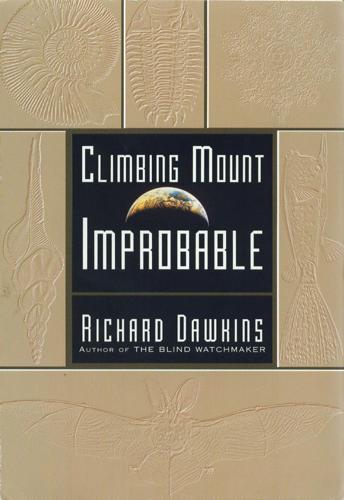
Climbing Mount Improbable
by
Richard Dawkins
and
Lalla Ward
Published 1 Jan 1996
We shall explore its meaning in this and the next chapters. The following is from a letter that The Times of London published a few years ago. The author, whose name I have withheld to spare embarrassment, is a physicist, regarded sufficiently highly by his peers to have been elected a Fellow of the Royal Society, Britain’s most distinguished learned institution. Sir, I am one of the physical scientists…who doubt Darwin’s theory of evolution. My doubts arise not from any religious motive or desire to add fuel to either side of any controversy but merely because I think that Darwinism is scientifically indefensible.
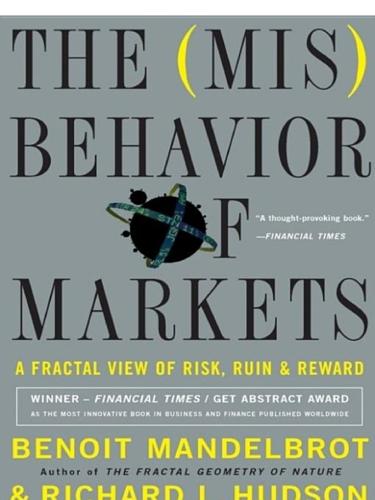
The Misbehavior of Markets: A Fractal View of Financial Turbulence
by
Benoit Mandelbrot
and
Richard L. Hudson
Published 7 Mar 2006
In effect, if the price of a security might increase after its purchase, a decrease is equally possible. 52 “In effect, prices follow…” An early reference to the random-walk concept appeared in 1905, in the letters pages of Nature, a British scientific journal. Under the headline, “The Problem of the Random Walk,” Karl Pearson, a professor and Fellow of the Royal Society, wrote to ask whether any readers could tell him “a solution of the following problem”:A man starts from a point O and walks l yards in a straight line; he then turns through any angle whatever and walks another l yards in a second straight line. He repeats this process n times. I require the probability that after n stretches he is at a distance between r and δr from his starting point, O.
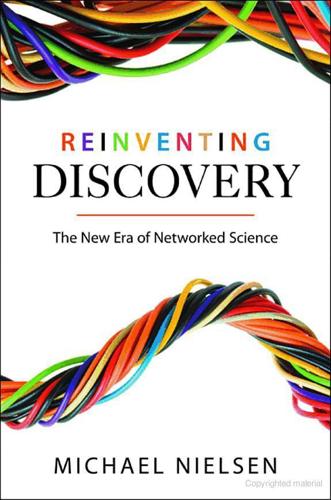
Reinventing Discovery: The New Era of Networked Science
by
Michael Nielsen
Published 2 Oct 2011
Here’s how the events were described in an article in The Lawyer written by Robert Dougans, a lawyer who acted for Singh in the case, and David Allen Green, a blogger who had been covering the case: In less than a day, the credibility of this evidence—and indeed that of the BCA for commending it—was destroyed. A dozen or so scientist-bloggers, including a Fellow of the Royal Society, were able to track down and assess each of the scientific papers cited by the BCA and were able to show beyond doubt that these papers did not support the BCA position at all. This was a stunning and devastating blogging exercise, and when it was formally repeated by the British Medical Journal a few weeks later it was almost an afterthought.
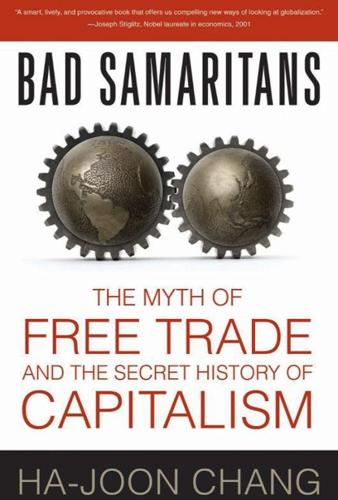
Bad Samaritans: The Myth of Free Trade and the Secret History of Capitalism
by
Ha-Joon Chang
Published 26 Dec 2007
The argument sounds reasonable enough, but it is only a half-truth. It is not as if we always have to ‘bribe’ clever people into inventing new things. Material incentives, while important, are not the only things that motivate people to invest in producing new ideas. At the height of the HIV/AIDS debate, 13 fellows of the Royal Society, the highest scientific society of the UK, put this point powerfully in an open letter to the Financial Times: ‘Patents are only one means for promoting discovery and invention. Scientific curiosity, coupled with the desire to benefit humanity, has been of far greater importance throughout history.’5 Countless researchers all over the world come up with new ideas all the time, even when they do not directly profit from them.
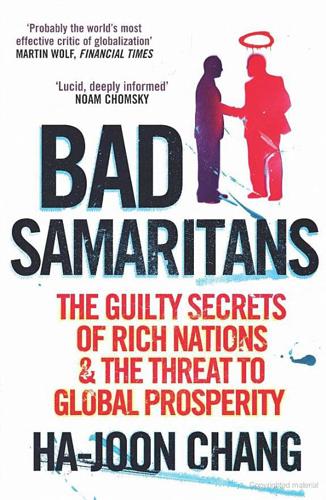
Bad Samaritans: The Guilty Secrets of Rich Nations and the Threat to Global Prosperity
by
Ha-Joon Chang
Published 4 Jul 2007
The argument sounds reasonable enough, but it is only a half-truth. It is not as if we always have to ‘bribe’ clever people into inventing new things. Material incentives, while important, are not the only things that motivate people to invest in producing new ideas. At the height of the HIV/AIDS debate, 13 fellows of the Royal Society, the highest scientific society of the UK, put this point powerfully in an open letter to the Financial Times: ‘Patents are only one means for promoting discovery and invention. Scientific curiosity, coupled with the desire to benefit humanity, has been of far greater importance throughout history.’5 Countless researchers all over the world come up with new ideas all the time, even when they do not directly profit from them.
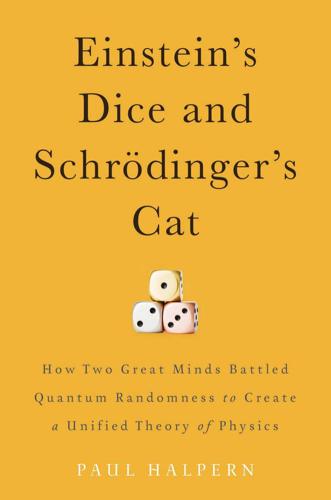
Einstein's Dice and Schrödinger's Cat: How Two Great Minds Battled Quantum Randomness to Create a Unified Theory of Physics
by
Paul Halpern
Published 13 Apr 2015
Erwin Schrödinger to Albert Einstein, February 3, 1947, Albert Einstein Duplicate Archive, 22-138. 21. “Science: Einstein Stopped Here,” Time, February 10, 1947. 22. John L. Synge, “Letter to the Editor,” Time, March 3, 1947. 23. Petros S. Florides, “John Lighton Synge,” Biographical Memoirs of Fellows of the Royal Society 54 (December 2008): 401. 24. Nichevo [R. M. Smyllie], “Higher Maths,” Irish Times, March 22, 1947, 7. 25. S. McC., “And Now Cosmic Physics,” Tuam Herald, April 12, 1947. 26. William L. Laurence to Albert Einstein, February 7, 1947, Albert Einstein Duplicate Archive, 22-141. 27. “Einstein Declines Comment,” New York Times, January 30, 1947. 28.
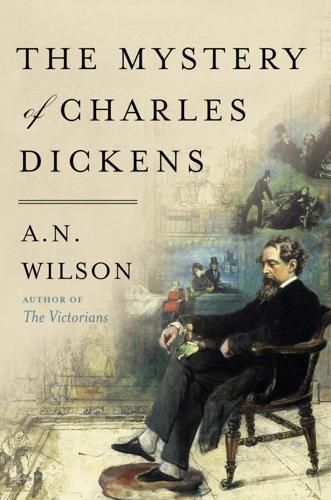
The Mystery of Charles Dickens
by
A. N. Wilson
Published 3 Jun 2020
Maria Beadnell and, 107 Nelly Ternan and, 248 prison in, 84–5, 174–5, 180–81 sex in, 257 Shorne in, 292 siblings and, 79 Swinburne on, 195 three-gabled house in, 273 Grimaldi, Joseph, 29, 35, 239, 319 Hager, Kelly, 137 Hall, William, 116, 120 Hall’s bookshop, Strand, 116 Hamblin, 221 Hamlet (Shakespeare), 23, 36, 237 Hanley, Staffordshire, 209 Hard Times (Dickens), 39, 146, 162, 171–2, 173, 175, 200, 201, 312 Hardwick, Philip, 227 Hardy, Thomas, 137, 307 Harley Street, London, 313 Harness, William, 234 Harrow School, Middlesex, 234, 303 Harte, Bret, 220 Hartley, Jenny, 150–51, 155, 156–7 Haunted House, The (Dickens), 81 Hawksley, Lucinda, 159 Hawthorne, Nathaniel, 124 Hayter, Alethea, 244 Headland, Thomas, 212 Henry VIII, King of England and Ireland, 136 Henty, George Alfred, 302 Hereford Times, 159 Heroin, 246 Hesse, Hermann, 308 Higham, Kent, 13 Hitchcock, Alfred, 233 Hitler, Adolf, 238 Hobbes, Thomas, 49 Hogarth, Catherine, see Dickens, Catherine Hogarth, George, 114, 205 Hogarth, Georgina, 105, 114, 122, 125, 133–4, 310 Birmingham Christmas reading (1853), 205 death of Charles (1870), 11, 13–14, 15, 73, 99, 255, 296–7 household management, 11, 105, 125, 134 Naples trip (1845), 128 Nelly, relationship with, 21–2, 134, 315 public reading tours and, 213, 215 Violated Letter (1858), 132, 133–4 Will of Charles Dickens (1870), 134 Hogarth, Helen, 132, 133 Hogarth, Mary, 114, 121, 122 Hogarth, Robert, 114 Holly Lodge, Highgate, 147 Holmes, Oliver Wendell, 220 Homer, 72 homosexuality, 265 Horsemonger Lane Gaol, Southwark, 176 Hotel Meloni, Rome, 269–70 Houghton Place, Ampthill Square, 12, 21 House, Humphry, 67, 146, 171 House, Madeline, 17 Household Words, 9, 25, 40, 105, 115, 124, 129, 146 Charley’s editing, 296 ‘Curious Dance Round a Curious Tree, A’ (1852), 28 ‘Great Baby, The’ (1855), 166, 167–70 ‘Lying Awake’ (1852), 176 Millais, criticism of (1850), 159 ‘Nightly Scene in London, A’ (1856), 189–90 ‘Pet Prisoners’ (1850), 179 ‘Red Tape’ (1851), 170 Urania Cottage article (1853), 147 ‘Violated Letter’ (1858), 133 Wellington Street offices, 215, 229, 296 Wills’ editing, 124, 129, 214 Huffam, Christopher, 177 Hughes, Thomas, 299 Hull, Yorkshire, 230 Human Physiology (Elliotson), 261 Hundred Days (1815), 61 Independent Labour Party, 188 Industrial Revolution, 64–5 Inns of Court, London, 23, 111, 113, 248, 273 Inquiries Concerning the Intellectual Powers (Abercrombie), 260–61 International Monetary Fund, 65 Invisible Woman, The (Tomalin), 297 Ireland, 23, 210, 310 Isle of Wight, 297 Italy, 21, 40, 128, 217, 219, 268–9, 293 ITMA (It’s That Man Again), 304 Jamaica, 182–3, 312 James, Henry, 47, 48 Jarman, Frances ‘Fanny’, 23 Jerrold, Douglas, 125, 176 Jobber Skald (Powys), 239 Johann Peter Eckermann, 121 Johns, William Earl, 302 Johnson, Andrew, 222–4 Johnson, Edgar, 133 Johnson, Samuel, 93, 121 Jonson, Ben, 37, 199 Joy, George William, 300 Kafka, Franz, 312 Kant, Immanuel, 22 Kapital, Das (Marx), 86, 87, 162, 163 Kaplan, Fred, 260 Katherine of Aragon, 136 Kean, Edmund, 9, 23, 35 Keats, John, 74, 267 Kelly, Frances, 37 Kemble, Charles, 23, 101 Kennedy, John Fitzgerald, 300 Keppel Street, Bloomsbury, 25, 40 King Lear (Shakespeare), 29, 218, 237 King’s Cross, London, 228, 229 Kingdom of Naples (1282–1816), 128 Kingsley Amis, 308 Kingsmill, Hugh, 94 Lamarck, Jean-Baptiste, 262 Lamb, William, 2nd Viscount Melbourne, 137–8 Lamert, George, 82 Lamert, James, 70, 82–3 Lamert, Matthew, 70 Lamplighter, The (Dickens), 36 Lancet, The, 263 Larkin, Philip, 306–10 Latter-Day Pamphlet (Carlyle), 178–9 laudanum, 4, 244, 247 Lavoisier, Antoine, 261 Lawrence, David Herbert, 43, 307 Leavis, Queenie Dorothy, 118, 162–3, 168 Lee, Robert Edward, 223 Leeds City Art Gallery, 300 Lemon, Mark, 8, 37, 133 Leno, Dan, 29 de Leon, Thomas Cooper, 173–4 Letters of Charles Dickens, The, 145 Lewes, George, 16, 37, 140 Liberal Party, 82, 187, 214, 246 Library Edition, 215 Library of Fiction, The, 116 Life of Charles Dickens, The (Forster), 20, 74, 121, 234 Life of Mr Richard Savage (Johnson), 93 Life of Our Lord (Dickens), 55, 160 Lillie, Benjamin, 131 Limehouse, London, 148, 244 Lincoln’s Inn Fields, London, 234 Literary and Mechanics’ Institutes, Birmingham, 209 Little Dorrit (Dickens), 8, 9, 39–41, 54–5, 146, 286 Civil Service in, 164, 171 Elizabeth Dickens and, 30–33, 54–5, 90 John Dickens and, 40, 54–5, 75–6, 89–90 Kate Dickens and, 140 lesbianism in, 44 Maria Beadnell and, 106, 109–10 Nelly Ternan and, 30, 32, 33, 140 prison in, 85–7 sex in, 258 Shaw on, 86, 162 Sunday in, 167 Tattycoram, 157 voice in, 200 Liverpool, Merseyside, 113, 216, 220, 226–7 Lloyd George, David, 187, 190 Locker-Lampson, Frederick, 294 London Recreations’ (Dickens), 167 Longfellow, Henry Wadsworth, 220 Lord’s Day Observance Society, 170 Lord’s Day, 166–70 Lowell, James Russell, 220 Lucas, John, 22 Luddites, 262 ‘Lying Awake’ (Dickens), 176 Lytton, Lord, see Bulwer-Lytton, Robert Lytton, Robert, 209 ‘Mabel’ (Locker-Lampson), 294 Mabel’s Progress (Trollope), 219 Macbeth (Shakespeare), 237, 281 Macready, William, 36, 37, 237–8, 266, 267 Malthus, Thomas, 187 Malvern, Worcestershire, 25, 125, 302 Manchester, England, 7, 8, 32, 38 Manners, John, 136 Manning, Frederick and Maria, 176–7, 178 Mansfield Park (Austen), 272 Margate, Kent, 21, 314–16, 318–19 Marriage Act (1753), 137 Marshalsea, Southwark, 30, 40, 76, 86, 87, 109, 115, 214, 271, 297 Martin Chuzzlewit (Dickens), 34, 198–200, 206, 211, 214, 311 Martineau, Harriet, 130 Marx, Karl, 32, 65, 81, 86, 87, 162, 163 Mary Adelaide, Duchess of Teck, 148 Mary of Teck, Queen consort of the United Kingdom, 148 Mary, Queen of Scots, 319 Marylebone, London, 62, 64 Massachusetts, United States justice system, 182 Mesmerism in, 266 Parkman–Webster murder case (1849), 250–53, 279 public reading tours, 123, 220–21, 224–6, 229, 250 Mathews, Charles, 35, 101 Matrimonial Causes Act (1857), 136, 138 Maurice, Frederick Denison, 314 Mayor of Casterbridge, The (Hardy), 137 ‘Maze, The’ (Auden), 249 Medusa, 31 Medway river, 27, 55–8, 284 Méjan, Maurice, 137 Melancholy Man, The (Lucas), 22 Melbourne, Lord, see Lamb, William Meredith, George, 140 Meredith, Hannah, 147 Merry Wives of Windsor, The (Shakespeare), 37, 206, 293 Mesmer, Franz Anton, 255, 260, 261, 262 mesmerism, 4, 100, 105, 141, 195, 238–9, 255, 260–70 Metropolitan Sanitary Association, 165 Middlemarch (Eliot), 43 Middlesex Hospital, London, 68 Middlesex House of Correction, 151 Midsummer Night’s Dream, A (Shakespeare), 9, 45 Mill, John Stuart, 81, 155, 162, 172, 179, 183 Millais, John Everett, 159, 291–2 Misnar, the Sultan of India (Dickens), 96 modernism, 6, 39, 81, 208, 278 Monthly Magazine, 111, 116 Moonrise Kingdom, 197 Moonstone, The (Collins), 253, 283–4 Moore, Thomas, 147 Morant Bay Rebellion (1865), 182, 312 More, Hannah, 319 Morning Chronicle, 107, 111, 114, 137 Mornington Crescent, Camden Town, 12 Morris, William, 292 Mortimer Street, London, 62 Mount Vesuvius, 128 Murray, Lindley, 319 Mussolini, Benito, 238 Mystery of Edwin Drood, The (Dickens), 4, 6, 11, 44, 67, 141, 166, 229, 243–87, 292 animal magnetism and, 253, 255, 260–70 atmospherics, 282–4 as autobiographical, 248–9 Cloisterham, models for, 5, 273–5 graveyard humour, 292–5 modernism, 278 Nelly Ternan and, 254–6, 260, 270–71, 275, 277, 285 opium in, 4, 243–7, 253, 274, 276, 277, 278, 279, 281, 284 Parkman–Webster murder case and, 250–53, 279 Stony Durdles, 269, 281, 292–5 Nabokov, Vladimir, 196, 198, 200, 203, 278, 308 Naples, Kingdom of (1282–1816), 128 Napoleon I, emperor of the French, 61, 64 Napoleonic Wars (1803–15), 48, 61, 64, 186 National Sunday League, 167 Navy Lark, The, 304 Navy Pay Office, 61, 63, 92 Nelson, Horatio, 61 New Bedford, Massachusetts, 225 New Bond Street, London, 212, 226 New Haven, Connecticut, 222 New Magdalen, The (Collins), 314 New York Herald, 174 New York, United States, 199, 216, 221–2 Newcastle upon Tyne, 24 Newman brothers, 155 Niagara, New York, 225 Nicholas Nickleby (Dickens), 8, 21, 23, 59–60, 89, 286, 301–2 ‘Nightly Scene in London, A’ (Dickens), 189–90 nitrate of silver, 145, 150 Nonconformism, 163 Norfolk Street, London, 62 North-West Passage, 7 Norton, Caroline, 138–9 Norton, George, 137–8 Not So Bad As We Seem (Bulwer-Lytton), 25, 38, 125 ‘Nurse’s Stories’ (Dickens), 126 O’Connor, Patrick, 176 O’key, Elizabeth and Jane, 263–4, 267 ‘Old Cumberland Beggar, The’ (Wordsworth), 184–7 Old Curiosity Shop, The (Dickens), 3–4, 21, 23, 39, 90, 200, 265, 316–19 Quilp, 3, 128–9, 131, 178, 180, 195, 254, 257, 316 Oliver Twist (Dickens), 35, 44, 66–7, 120, 171, 188, 195, 283, 301–2 marriage in, 127 Nancy, 44, 150, 172, 195, 198, 207, 232–6, 238, 257, 258, 283 paedophilia in, 60 prison in, 84 ‘On an Amateur Beat’ (Dickens), 154 ‘On the Circuit’ (Auden), 225 Opium and the Romantic Imagination (Hayter), 244 opium, 4, 243–7, 253, 274, 276, 277, 278, 279, 281, 284 Orange Blossoms (Wooler), 315 Ordeal of Gilbert Pinfold, The (Waugh), 34, 70 Othello (Shakespeare), 23, 237 Our Mutual Friend (Dickens), 15, 141, 185, 208, 212, 280, 283 Seven Dials and, 231 sex in, 44, 258 Staplehurst railway crash and, 19–20, 212 Swinburne on, 313 workhouses in, 67 voice in, 200 Ouvry, Frederic, 11, 297 Oxford, Oxfordshire, 20, 207–8 Oxford Movement, 160–61 Paget, Henry, 1st Marquess of Anglesey, 263 Painter, Michael, 271 Palmerston, Lord, see Temple, Henry John pantomime, 5, 6, 7, 33, 39, 42, 44, 46–8, 72, 81, 162, 170, 312 clowns, 27–30, 35, 239 in David Copperfield, 46 in Great Expectations, 44 in Little Dorrit, 164 in Old Curiosity Shop, 254 in Oliver Twist, 46 in Pickwick Papers, 46, 164 Parkman, George, 250–53, 279 Patmore, Coventry, 136 Peckham, London, 12, 13–14, 21, 216, 219, 229, 255, 256, 259 Pendennis (Thackeray), 113, 115 Percy, Thomas, 53, 58 Persia, 22, 316 Personae (Pound), 208 Perugini, Catherine ‘Katey’, 17, 38, 42, 44, 99, 101–5, 122, 132, 296, 250, 286, 296 ‘Pet Prisoners’ (Dickens), 179 Petworth, West Sussex, 156 Pevsner, Nikolaus, 227 Pharmacy Act (1868), 246 Philadelphia Public Ledger, The, 243 Philadelphia, Pennsylvania, 214, 222, 224, 243 ‘Phiz’, see Browne, Hablot Knight Picasso, Pablo, 31 Pickwick Papers, The (Dickens), 7, 23, 27, 35, 77, 112, 117–18, 199, 239, 283, 303 class in, 69 illustrations, 45, 117–18 Doctors’ Commons in, 112, 119 marriages in, 137 politicians in, 164 prison in, 84, 85 Rochester Bridge in, 56, 57 sales, 120 ‘Stroller’s Tale, The’ 117, 137 Pittsburgh, Pennsylvania, 266 place, sense of, 272–5 Plato, 71–2 Police Act (1839), 153–4 Pollard, Rhena, 156–7 Poor Laws, 68, 185, 187 Pope, Norris, 168 population growth, 203 Portland, Maine, 225 Portsmouth, Hampshire, 63 post-traumatic stress disorder (PTSD), 304 Posthumous Papers of the Pickwick Club, The see Pickwick Papers, The Pound, Ezra, 208 Powys, John Cowper, 239 Pre-Raphaelites, 101 Preston, Lancashire, 179 Price, Charles, 182 Priestley, Joseph, 261 Priestley, William Overend, 234 Prisons Act (1898), 179 prisons, 84–7, 175, 178–82 prostitution, 150 Proust, Marcel, 73, 271 psychology; psychoanalysis, 6, 74, 95 public readings, 9, 33, 34, 84, 132, 133, 134, 156, 173, 174, 193–239 Punch, 8, 37, 133 Pusey, Edward Bouverie, 164 Pushkin, Alexander, 40 Queen’s College, Harley Street, 313 de Quincey, Thomas, 247 Radicals, 82, 214 railways, 216–17 Ratcliffe Highway, London, 243, 244, 247, 285 ‘Red Tape’ (Dickens), 170 Regent’s Park, London, 25, 103, 125, 153 Reliques of Ancient English Poetry (Percy), 53, 58 Resurrection narratives, 230 Reynolds, Russell, 286–7 Rhode Island, United States, 225 Richardson, Ruth, 39, 64 Richmond, Duke of, see Gordon-Lennox, Charles Robb, Graham, 87 Roberts, Frederick Sleigh, 1st Earl Roberts, 300 Robinson, Ellen ‘Nelly’ (born Ternan), 5, 8–25, 33, 41, 102, 106, 126, 146, 207, 216–20, 229, 314–19 age, concealment of, 314, 317 Ampthill Square house, 12, 21, 317 children, illegitimate, 17, 217 death of Charles (1870), 15, 20, 49, 255, 256, 259, 297 France trip (1865), 16–17 George, marriage to, 21–2, 314–19 Georgina, relationship with, 21–2, 134, 315 Great Expectations and, 248 Kate Dickens and, 100, 124, 130, 131, 132 Little Dorrit and, 30, 32, 33, 140 parents, relationship with, 23–4, 25 and public reading tours, 207, 213, 215, 220, 221, 229 Staplehurst railway crash (1865), 18–19, 212, 285–6 Will of Charles Dickens and, 297 Windsor Lodge, life at, 13–14, 21, 219, 229, 255, 256, 259, 296 youthfulness, 8, 140, 254–5, 260, 270–71, 275 Robinson, Geoffrey, 21, 22, 314, 316–17 Robinson, George Wharton, 21, 22, 314, 317 Robinson, Gladys, 21, 314, 317 Rochester, Kent, 4, 5, 7, 23, 55–7, 120, 141, 273–5, 284–5, 293–6 Rochester, Massachusetts, 225 Rochester, New York, 222 Roe, Fred, 230 Rogers, Samuel, 147 Romanticism, 247 Rome, Italy, 268, 269–70 Romeo and Juliet (Shakespeare), 231, 314 Rookwood (Ainsworth), 113 Rose and the Ring, The (Thackeray), 118 Rossetti family, 155 Round the Horne, 304 Royal Academy of Music, 78, 93 Royal Academy Summer Exhibition (1850), 159 Royal Academy, 291, 292 Royal Command Performance, 125 Royal Navy, 61, 63, 64, 92 ‘Ruffian, The’ (Dickens), 154, 177–8, 180 Rugby School, Warwickshire, 237, 299 Ruskin, John, 155, 292 Russell, William Howard, 209 Russia, 226 Russian Empire, 223 Salvation Army, 157 Santayana, George, 303–4 science, 261 Scott, Henry, 213, 229 Scott, Walter, 6, 65, 113, 114 Second World War (1939–45), 304 Self-Help (Smiles), 24, 87, 172 Self, Will, 244 Seven Dials, London, 177, 230–31 Seward, William, 222–3 sex, 43–4, 60, 145, 149–50, 256–60, 267 Seymour, Jane, 136 Seymour, Robert, 116–17, 118, 120 Shaftesbury, Lord see Cooper, Anthony Shakespeare, William, 36, 237 Hamlet, 23, 36, 237 Macbeth, 237, 281 Merry Wives of Windsor, The, 37, 293 Midsummer Night’s Dream, A, 9, 45 Othello, 23, 237 King Lear, 29, 218, 237 Romeo and Juliet, 231, 314 Winter’s Tale, The, 9, 24 Shaw, George Bernard, 86, 87, 162 Shaw, Lemuel, 252 Sheerness, Kent, 64, 69 Sheffield, Yorkshire, 205 Sheridan, Richard Brinsley, 138 Sherlock Holmes series (Doyle), 272 Shorne, Kent, 292 Shrewsbury, Shropshire, 210 silver nitrate, 145, 150 Simpson, John Palgrave, 207 Sketches by Boz (Dickens), 78, 99, 110–11, 115, 116, 254, 297 ‘Christmas Dinner, A’, 157–8 ‘Great Winglebury Duel, The’, 36 ‘London Recreations’, 167 ‘Private Theatres’, 50 Slate, Edwin, 223 slavery, 165 Slough, Berkshire, 12, 13, 17, 216–17, 219, 316 Smiles, Samuel, 24, 87, 172 Smith-Stanley, Edward, 14th Earl of Derby, 106–7, 188, 295 Smith, Arthur, 133, 210, 211–12 socialism, 162, 190, 191, 311 Soho Theatre, London, 88 Solzhenitsyn, Alexander, 80, 88 Somerset House, London, 62, 63, 74–6, 84 Songs of Innocence and Experience (Blake), 118 Sorrows of Rosalie, The (Norton), 138 Soviet Union, 80, 88 Sowray, Woodford, 273 Spencer, Herbert, 183 St Hugh’s College, Oxford, 20 St James’s Hall, London, 233 St James’s Hotel, London, 243 St James’s Theatre, London, 36 St Luke’s, Chelsea, 119 St Martin’s Hall, Camden Town, 207, 209 St Mary Abbots Church, Kensington, 21 St Mary-le-Strand, London, 63, 69 St Pancras, London, 228 St Paul’s, Covent Garden, 68 St Stephen’s, Rochester Row, 148 Stalin, Joseph, 88 Stanley, Arthur Penrhyn, 294, 295, 297–9 Stanley, Augusta, 295 Staplehurst railway crash (1865), 18–19, 212, 285–6 Stevens, Wallace, 308 Stoke-on-Trent, Staffordshire, 209 Stone, Lawrence, 136 Storey, Gladys, 17, 102, 105, 292 Strange Gentleman, The (Dickens), 36 Stratton Street, Mayfair, 147 stroke (1869), 238, 243 Stroller’s Tale, The (Dickens), 117 Sullivan, Arthur, 312 Sunday, 166–70 Sutherland, John, 103 Sweeney Agonistes (Eliot), 232 Sweet, Henry, 20 Swinburne, Algernon Charles, 195, 259, 297, 313 Swinburne, Jane Henrietta, 297 Swiss chalet, Gad’s Hill, 102, 256, 276, 282 Switzerland, 149 Syracuse, New York, 222 Taine, Hippolyte, 81 Tale of Two Cities, A (Dickens), 21, 84, 127, 141, 145, 207, 283, 286, 312, 313 Tavistock House, Camden, 109, 130, 132, 134 taxation, 226, 292 Taylor, Samuel, 209 Temple, Henry John, 3rd Viscount Palmerston, 214 Tennyson, Alfred, 37, 155, 183 Ternan, Ellen ‘Nelly’, see Robinson, Ellen Ternan, Frances ‘Fanny’, see Trollope, Frances Ternan, Maria, 8, 24 Ternan, Thomas, 23–4 Terry, Ellen, 9 Thackeray, William Makepeace, 6, 16, 43, 113, 115, 118, 132, 204, 239 Thakewell Union, Petworth, 156 Thames river, 55, 200 Theatre Royal, Chatham, 35 Theatrical Fund, 36 Thomas, Dylan, 272 Three Detective Anecdotes (Dickens), 13 Three Voices of Poetry, The (Eliot), 208 Tide of Time, The (Bernard), 207 Tiger Bay, London, 243 Times, The, 105, 133, 159, 176–7, 209, 293 de Tocqueville, Alexis, 81 Tolstoy, Leo, 34, 81, 202, 307 Tom Brown’s Schooldays (Hughes), 299 Tomalin, Claire, 17, 18, 217, 297 Townshend, Chauncy Hare, 265 Tracy, Robert, 278 Trade Union Movement, 162 Trinity College, Cambridge, 54 Trollope, Anthony, 6, 9, 43, 155, 217, 239, 307, 308 Trollope, Frances ‘Fanny’, 9, 24, 217–19, 317 Trollope, Thomas, 217, 218 Turner, Joseph Mallord William, 230 Uncommercial Traveller, The (Dickens), 212 Under Milk Wood (Thomas), 272 Unitarian Church, 265 United States, 4, 57, 140 evangelicalism in, 164–5 Parkman–Webster murder case (1849), 250–53, 279 prisons in, 179, 182 reading tours, 123, 173–4, 195, 198, 199, 203, 213–26, 250 Revolution (1765–83), 262 University College, London, 263–4 Urania Cottage, Shepherd’s Bush, 146, 148, 150–57, 182 Vanity Fair (Thackeray), 43 venereal disease, 145–6, 150, 286 Vicar of Wakefield, The (Goldsmith), 111 Victoria, Queen of the United Kingdom, 25, 37–8, 40, 78, 137, 139, 148, 161, 167 Violated Letter (1858), 132–3 Violent Effigy, The (Carey), 299, 305 Wakley, Thomas, 263, 267 Walham Green, London, 297 Wallis, Henry, 140 Wapping, London, 244 War and Peace (Tolstoy), 34 Warren, Jonathan, 82 Warren’s Blacking Factory, Strand, 53–5, 59, 72–5, 78, 82–4, 90, 92, 99, 102, 105, 188, 228, 297 Christmas game and, 53–4, 60, 73, 74, 99, 206 Dilke and, 74–5 Elizabeth Dickens and, 104–5 Kate Dickens and, 72, 95, 121 Washington, DC, United States, 222 Waste Land, The (Eliot), 208 Watkins, Gwen, 299–300, 305 Watt, James, 64 Waugh, Evelyn, 34, 70 Webster, John, 250–53, 279 Wedgwood, Josiah, 64 welfare, 188 Weller, Anna, 112 Weller, Christiana, 113 Weller, Mary, 112, 126 Wellington House Academy, Camden Town, 155, 206, 228 Wellington Street, London, 215, 229, 296 Wesley, John, 4 Wesleyan Methodism, 157 Westminster Abbey, London, 196, 293–9, 309 Weymouth Sands (Powys), 239 Whitefriargate, Hull, 230 Wilde, Oscar, 3 Will of Charles Dickens, 20–21, 134, 297 William IV, King of the United Kingdom, 139 Wills, William Henry, 124, 129, 213–14, 217, 219, 220, 236, 278 Wilson-Patten Sunday Beer Act (1854), 168 Wilson, Edmund, 203 Window Tax, 170 Windsor Lodge, Peckham, 13–14, 21, 219, 229, 255, 256, 259, 296 Winnicott, Donald, 95–6, 100 Winter, Maria, 106–10, 114, 134 Winter’s Tale, The (Shakespeare), 9, 24 With Kitchener in the Sudan (Henty), 302 Wodehouse, Pelham Grenville, 308 Woman in White, The (Collins), 137 Woolner, Thomas, 293 Wordsworth, William, 184–7, 188 workhouses, 49, 54, 64–8, 73, 75–6, 82, 171, 188–90 Chatham, Kent, 70 Cleveland Street, Marylebone, 39, 64, 66, 68, 188 Thakewell Union, Petworth, 156 World and the Stage, The (Simpson), 207 World Bank, 65 Yeats, William Butler, 206 Young, Edward, 230 Young, George Malcolm, 175 Zola, Emile, 6, 119 A NOTE ABOUT THE AUTHOR A.N. Wilson was born in 1950 and educated at Rugby and New College, Oxford. A Fellow of the Royal Society of Literature, he holds a prominent position in the world of literature and journalism. He is an award-winning biographer and a celebrated novelist, winning prizes for much of his work. He lives in North London.

The Pineapple: King of Fruits
by
Francesca Beauman
Published 22 Feb 2011
, was the act of only the most generous of hosts, whichever country in Europe you had chosen to put down roots.48 In 1721, Telende’s technique was described in print by the prolific and popular horticultural writer Richard Bradley. No stranger to pineapples, on a working holiday to the Netherlands Bradley had visited not only the Amsterdam Hortus but also the garden of Pieter de la Court. In 1720 he was elected a Fellow of the Royal Society, then three years later became Professor of Botany at Cambridge University. It was not long, however, before it was discovered that he had secured the appointment on the basis of a fabricated recommendation. This, combined with the fact that he was – shockingly – utterly ignorant of a single phrase of Greek or Latin, caused quite a scandal.

The Knowledge Machine: How Irrationality Created Modern Science
by
Michael Strevens
Published 12 Oct 2020
Much of his life’s work was therefore given over to an investigation of the rational basis of science, presented to the world in his philosophical masterpiece The Logic of Scientific Discovery. The ideas in that book would change the way generations of physicists, biologists, economists, and philosophers would think about the scientific method. After Popper moved from New Zealand to take up an academic post in Britain in 1946, he was elected a Fellow of the Royal Society, knighted by Queen Elizabeth II, and declared by the Nobel Prize–winning biologist Sir Peter Medawar to be “incomparably the greatest philosopher of science that has ever been.” Popper, born in 1902, turned 12 the day that Austria-Hungary declared war on Serbia, precipitating the Great War.
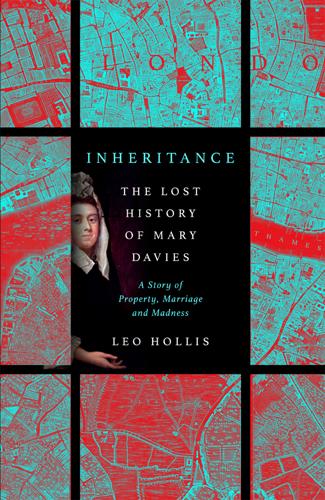
Inheritance
by
Leo Hollis
There were plays and more practical tomes on Free Trade, or the Meanes to Make Trade Flourish, the Art of Gardening, a 1636 argument against the use of coaches, as well as military and mathematical treatises. His notebook also contains the accounts for ‘Nicholas Mercator … Begun with me the 15th of Febu att £1.10 0 for the month’.40 This high price was suitable remuneration for time spent with the famous German mathematician, who was already a fellow of the Royal Society, had built maritime chronometers for Charles II and would go on to push the boundaries of early work on logarithms. Five years later, Mercator was invited to Paris to work on the design of the palace fountains at Versailles. Whatever Sir Thomas learned in these tutorials, it was clear that he was determined to be a young man in the front rank of learning and taste: he was to be a modern man.
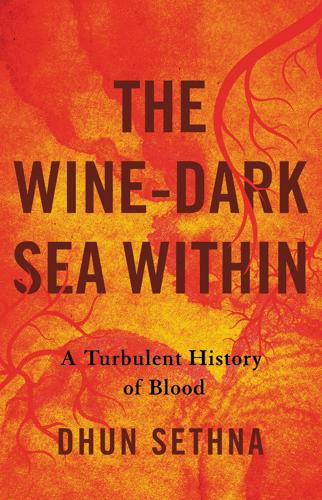
The Wine-Dark Sea Within: A Turbulent History of Blood
by
Dhun Sethna
Published 6 Jun 2022
He saw how respiration, heat, the circulation, and the heart’s muscular motion could be yoked into a general framework of respiration and combustion. Devoted as he was to science, he took a degree in law and became noted for his legal practice, especially in the “summertime at Bath.” He eventually migrated to London and, in 1678, was admitted a fellow of the Royal Society. The following year Mayow was found dead at Covent Garden at the all-too-early age of thirty-seven, having married just a little earlier though not altogether to his satisfaction. In 1670, Boyle had found no reduction of air during respiration. In 1673, Hooke had reported to the Royal Society that, after multiple failures, he had found that the volume of air was indeed diminished by one-twentieth during combustion.
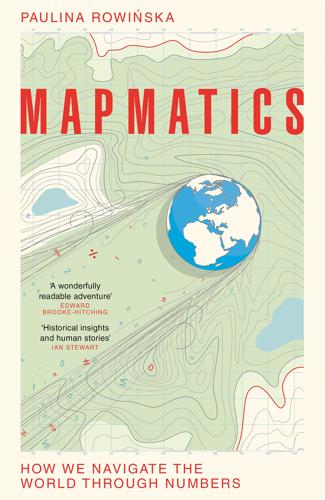
Mapmatics: How We Navigate the World Through Numbers
by
Paulina Rowinska
Published 5 Jun 2024
adamant about treating girls and boys equally: ‘Hanna Adler, Margrethe Bohr, Hans Bohr, Ernest Bohr, Aage Bohr, Rigmor Adler and Erik Bohr’, photograph, 1932, Billeder (Photograph) B935, Niels Bohr Archive, ArkivDK, accessed 2 June 2023, https://arkiv.dk/vis/6013480. this was not the popular opinion: Eriksen, ‘Inge Lehmann and the Interior of the Earth’. amongst boys and young men at home: Bruce A. Bolt, ‘Inge Lehmann’, Biographical Memoirs of Fellows of the Royal Society 43 (1997): 287–301, https://doi.org/10.1098/rsbm.1997.0016. posed a major challenge: Marie D. Eriksen, ‘Inge Lehmann, part 2: Geodetic Institute’, Great Danish Researchers, Niels Bohr Institute, University of Copenhagen, 1 October 2014, https://nbi.ku.dk/english/www/inge/lehmann/andet-kap/.

This Is for Everyone: The Captivating Memoir From the Inventor of the World Wide Web
by
Tim Berners-Lee
Published 8 Sep 2025
Turning on a news stream, we watched in horror as the towers went down. Jean-François was standing beside me. He looked at me and said, ‘You know what? I take it back – about civilization being locked in.’ • The continuity of civilization had been on my mind a fair amount that year. In 2001, I was elected a fellow of the Royal Society. It was a very great honour for me – many of my scientific heroes were Society fellows as well, including Alan Turing. I was presented to the Society at an induction ceremony, then brought into the office to sign the registry. At the top of this 350-year-old leather book I saw the signature of King Charles II, followed by the signature of Isaac Newton.
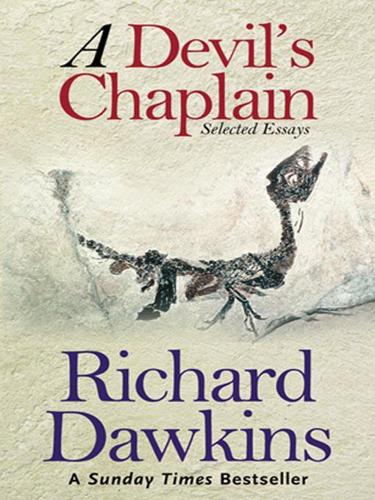
A Devil's Chaplain: Selected Writings
by
Richard Dawkins
Published 1 Jan 2004
Eliot, who wrote that humankind cannot bear too much reality, Dawkins wants us to get real about the universe in which brief lives are set, because reality is liberating … This is the best book of sermons I have read for years. So please go on preaching to us, Reverend Dawkins, and don’t mind the things they throw at you. After all, prophets always get stoned’ Richard Holloway, Bishop of Edinburgh Professor Richard Dawkins is a world-renowned evolutionary biologist and author. He is a Fellow of the Royal Society and holds the Charles Simonyi Chair of Public Understanding of Science at Oxford University. His first book, The Selfish Gene (1976), was an instant international bestseller, and has become an established classic work of modern evolutionary biology. The Blind Watchmaker (1986), too, has become world-famous.
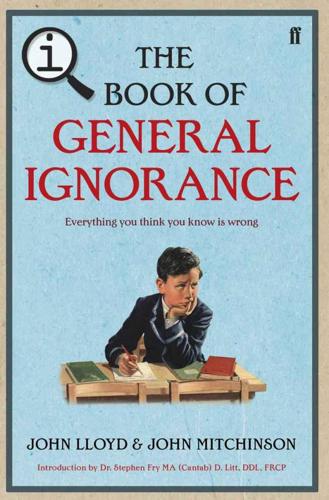
QI: The Book of General Ignorance - The Noticeably Stouter Edition
by
Lloyd, John
and
Mitchinson, John
Published 7 Oct 2010
Manson went one better. To show that the theory worked for humans, he infected his own son – using mosquitoes carried in the diplomatic bag from Rome. (Fortunately, after an immediate dose of quinine, the boy recovered.) Ross won the Nobel Prize for Medicine in 1902. Manson was elected a Fellow of the Royal Society, knighted and founded the London School of Tropical Medicine. There are 2,500 known species of mosquito, 400 of them are members of the Anopheles family, and, of these, 40 species are able to transmit malaria. The females use the blood they suck to mature their eggs, which are laid on water.
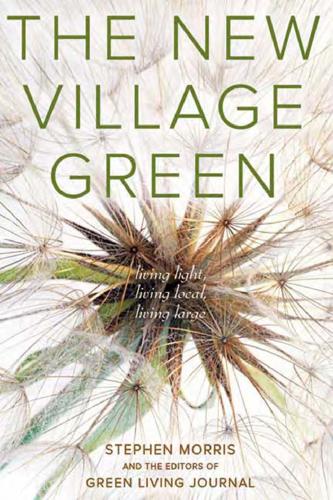
The new village green: living light, living local, living large
by
Stephen Morris
Published 1 Sep 2007
However, when they were finally launched to Mars, the Viking probes still searched for life there. Lovelock invented the Electron Capture Detector, which ultimately assisted in discoveries about the persistence of CFCs and their role in stratospheric ozone depletion. He is also credited with invention of the microwave oven. Lovelock was elected a Fellow of the Royal Society in 1974, and in 1990 was awarded the first Dr A.H. Heineken Prize for the Environment by the Royal Netherlands Academy of Arts and Sciences. An independent scientist, inventor, and author, Lovelock works out of a barn-turned-laboratory in Cornwall. In 2003 he was appointed a Companion of Honour (CH) by Queen Elizabeth II. 2 chapter 1 : The Gaia Hypothesis Zoe Weil is the author of The Power and Promise of Humane Education and Above All, Be Kind: Raising a Humane Child in Challenging Times.
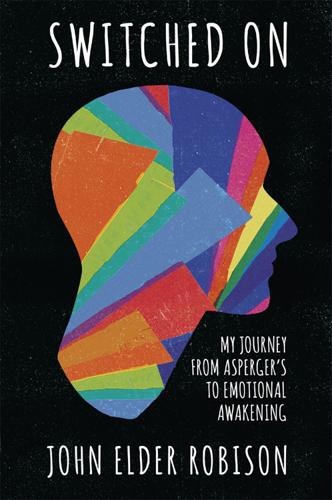
Switched On: My Journey From Asperger's to Emotional Awakening
by
John Elder Robison
Published 6 Apr 2016
However, that wasn’t enough to diffuse the public’s horror and outrage when word leaked out about his research. There was a tremendous outcry by antivivisectionists, but the importance of his work ultimately proved to be his defence. His 1874 paper and the work that followed established Ferrier as one of the great experimental neurologists, and he was elected a Fellow of the Royal Society three years later. Once that paper came out, it took less than two years for someone to try systematic electrical stimulation on a living human brain. Roberts Bartholow* was a well-respected physician at Cincinnati’s Medical College of Ohio. He believed first-person experimentation was the best way to advance knowledge of the brain.
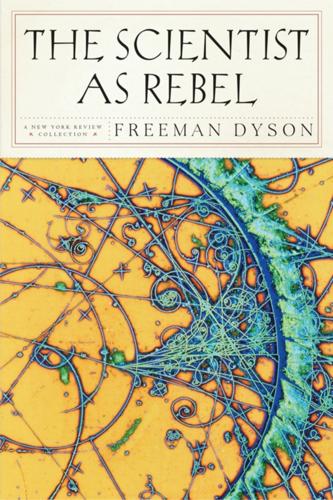
The Scientist as Rebel
by
Freeman Dyson
Published 1 Jan 2006
Dyson’s books include Disturbing the Universe (1979), Weapons and Hope (1984), Infinite in All Directions (1988), Origins of Life (1986, second edition 1999), The Sun, the Genome and the Internet (1999), and A Many Colored Glass: Reflections on the Place of Life in the Universe (2007). He is a fellow of the American Physical Society, a member of the National Academy of Sciences, and a fellow of the Royal Society of London. In 2000 he was awarded the Templeton Prize for Progress in Religion.

Augmented: Life in the Smart Lane
by
Brett King
Published 5 May 2016
Now 58, Rangaswami works as chief data officer at a major financial institution, having previously been chief scientist and chief information officer at a number of global institutions. He is Adjunct Professor at the School of Electronics and Computer Science at the University of Southampton. In addition, he is a Fellow of the British Computer Society, a Fellow of the Royal Society of the Arts and Venture Partner at Anthemis. Rangaswami is a popular keynote speaker, having given a popular TED Talk—Information Is Food, and can be found blogging at ConfusedofCalcutta.com.
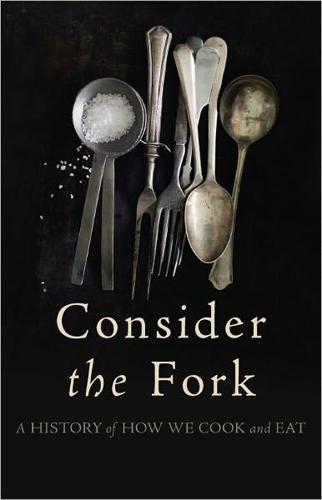
Consider the Fork: A History of How We Cook and Eat
by
Bee Wilson
Published 14 Sep 2012
“Nixon and Khrushchev Argue in Public as U.S. Exhibit Opens.” NewYork Times, July 25. Samuel, Delwen (1999). “Bread Making and Social Interactions at the Amarna Workmen’s Village, Egypt.” World Archaeology, vol. 31, no. 1, pp. 121–144. Sanders, J. H. (2000). “Nicholas Kurti C.B.E.” Biographical Memoirs of Fellows of the Royal Society, vol. 46, pp. 300–315. Scappi, Bartolomeo (2008). The Opera of Bartolomeo Scappi (1570), translated with commentary by Terence Scully. Toronto, University of Toronto Press. Scully, Terence (1995). The Art of Cookery in the Late Middle Ages. Woodbridge, Boydell. Segre, Gino (2002). Einsten’s Refrigerator: Tales of the Hot and Cold.
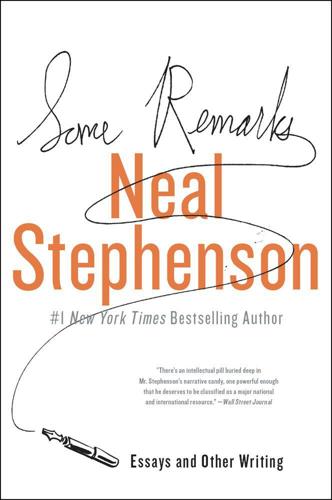
Some Remarks
by
Neal Stephenson
Published 6 Aug 2012
His unquestioned status as the greatest mind of his generation, combined with his political connections as Master of the Mint and his ruthlessness toward those he perceived as rivals, had given him an unusual degree of power. This he brought to bear against the only living person who could even hope to challenge his intellectual supremacy: Gottfried Wilhelm Leibniz, who despite being a foreigner (he was Hanoverian) had been made a Fellow of the Royal Society in 1673, largely in recognition for his invention of the Stepped Reckoner, a mechanical computer. The contrasts between Newton and Leibniz were lavish. Newton seems to have had an entirely accurate sense of just how he compared to his contemporaries, and acted accordingly without concern for dusty precedents or the personal feelings of those who clung to them.

Operation Chastise: The RAF's Most Brilliant Attack of World War II
by
Max Hastings
Published 18 Feb 2020
Going to the Wars Editor HISTORY Bomber Command The Battle of Britain (with Len Deighton) Das Reich Overlord: D-Day and the Battle for Normandy Victory in Europe The Korean War Warriors: Extraordinary Tales from the Battlefield Armageddon: The Battle for Germany 1944–45 Nemesis: The Battle for Japan 1944–45 Finest Years: Churchill as Warlord 1940–45 All Hell Let Loose: The World at War 1939–45 Catastrophe: Europe Goes to War 1914 The Secret War: Spies, Codes and Guerrillas 1939–1945 Vietnam: An Epic Tragedy 1945–1975 COUNTRYSIDE WRITING Outside Days Scattered Shots Country Fair ANTHOLOGY (EDITED) The Oxford Book of Military Anecdotes About the Author MAX HASTINGS is the author of twenty-seven books, most about conflict, and between 1986 and 2002 served as editor in chief of the Daily Telegraph, then as editor of the Evening Standard. He has won many prizes both for journalism and his books, the most recent of which are the bestsellers Vietnam, The Secret War, Catastrophe, and All Hell Let Loose. He is a Fellow of the Royal Society of Literature; an Honorary Fellow of King’s College, London; and was knighted in 2002. He has two grown children, Charlotte and Harry, and lives with his wife, Penny, in West Berkshire, where they garden enthusiastically. Discover great authors, exclusive offers, and more at hc.com. Copyright OPERATION CHASTISE.
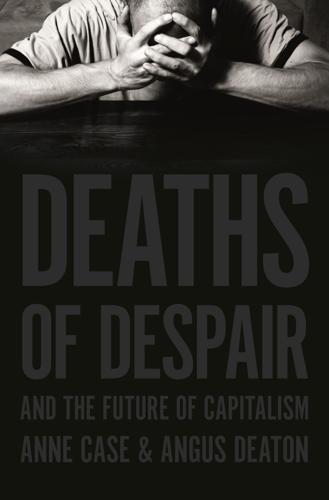
Deaths of Despair and the Future of Capitalism
by
Anne Case
and
Angus Deaton
Published 17 Mar 2020
He was knighted by the Queen of England for his philanthropy, the first Indian ever to be so honored. In 1858, he was elevated to become a lord, becoming Baronet Jejeebhoy of Bombay. The title was a hereditary one and was inherited by his son. What of Jardine and Matheson? Jardine became a member of Parliament and was succeeded by Matheson on his death in 1843. Matheson became a fellow of the Royal Society and governor of the Bank of England, and he was one of the richest men and largest landholders in Britain. He purchased the Isle of Lewis in the Outer Hebrides in 1844, and in 1851 he became Sir James Matheson, first Baronet of Lewis. The Highland potato famine reached Lewis not long after his purchase, and he was a generous landowner, who spent large sums on relief and on improvements; he also financed the (more or less voluntary) emigration of 2,337 islanders, about 13 percent of the population, to Quebec and Ontario, and paid for their clergymen to travel with them.
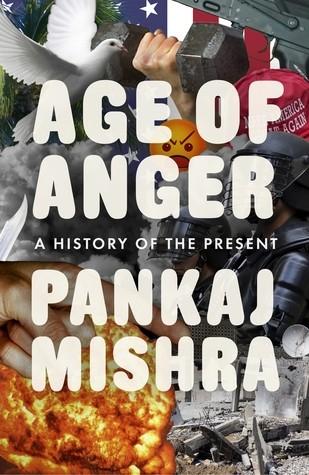
Age of Anger: A History of the Present
by
Pankaj Mishra
Published 26 Jan 2017
Petersburg ‘catch-up’ with Atlantic West Christianity in collapse of Soviet Communism ‘Decembrists’ rising (1825) and industrial revolution literature see also Dostoyevsky, Fyodor muzhik (peasant) nineteenth-century revolutionaries peasant commune in People’s Will movement Peter the Great’s Westernization and the philosophes Putin regime serfdom in the ‘superfluous’ man in Tsargrad TV channel Russo-Japanese war Rwanda Sainte-Beuve, Charles Augustin Saint-Just, Louis Antoine Léon de Saint-Simon, Claude Henri de Rouvroy, Comte de Salvemini, Gaetano San Bernardino, California Sand, George Santayana, George Sanua, James Sarkozy, Nicolas Saudi Arabia Savarkar, Vinayak Damodar Scheler, Max Schelling, Friedrich Wilhelm Joseph Schiller, Friedrich Schleiermacher, Friedrich Schmitt, Carl Schönerer, Georg von Schopenhauer, Arthur Schorske, Carl, Fin-de-Siecle Vienna: Politics and Culture (1980) science Scotland Scott, Walter secessionism Second World War sexuality female Shanghai Shariati, Ali Shaw, George Bernard Shelley, Percy Bysshe Shestov, Lev Shinawatra, Thaksin Sikh militants slavery and serfdom Smith, Adam Snowden, Edward Social Darwinism social mobility socialism Soedjatmoko Solzhenitsyn, Alexander Sorel, Georges Soseki, Natsume South America anarchists in Buenos Aires impact of Western materialism Soviet Union Spain Sparta Spencer, Herbert Sri Lanka St Petersburg de Staël, Madame Stalin, Joseph Stalinism Stendhal Stephens, Henry Stifter, Adalbert, Indian Summer (1857) Stirner, Max The Ego and its Own (1844) Sturm und Drang Sudan, Mahdist revolt (1880s) Suharto suicide and depression rates suicide bombers al-Suri, Abu Musab Sweden Symbolist poetry Syria Tacitus, Germania Tagore, Rabindranath al-Tahtawi, Rifa’a Rafi’, The Extraction of Gold, or an Overview of Paris (1834) Tamil militancy Tanizaki, Junichiro Tata, Ratan Taylorism terrorism 9/11 attacks al-Suri’s jihad strategy anarchist (from 1870s) Brussels attack (March 2016) Charlie Hebdo attack ‘experts’ on fin de siècle crackdowns ‘global war on terror’ Hindu supremacist (1909) Islam-centric accounts of in late nineteenth-century France by nationalist groups in recent past Paris massacres (November 2015) ‘police actions’ policy in West present-day ‘propaganda by the deed’ Tamil pioneering of suicide attacks Theodore Roosevelt’s crusade against white perpetrators Tetsuro, Watsuji Thailand Thatcher, Margaret Theosophy Thiel, Peter Thoreau, Henry David, Walden (1854) Tibet Tocqueville, Alexis de on commercial society and democracy on despotic government and equality on Frederick of Prussia on French Revolution on George Sand on globalization and imperialism and individual freedom on philosophes and USA Tolstoy, Leo Hadji Murat (1902) War and Peace totalitarian politics Towianski, Andrzej trade and commerce rapid growth in eighteenth century Smith’s ‘hidden hand’ Voltaire’s praise of see also capitalism; commercial society transport and communications Treitschke, Heinrich von Triple Alliance (1882) Troeltsch, Ernst Trump, Donald Tunisia Turgenev, Ivan Fathers and Sons (1862) Rudin Turgot, Anne Robert Jacques Turkey 1915 genocide Erdogan regime revival of Ottomanism Young Turkey see also Atatürk, Mustafa Kemal; Ottoman Empire Tyutchev, Fyodor Ivanovich Umberto I, King of Italy unemployment United Nations United States of America (USA) anti-government sentiment in assassination of President McKinley (1901) Californian Chinese Exclusion Act (1882) contempt for elites in easy availability of weapons in economic decline since 1970s Fort Hood killings (2009) Haymarket affair in Chicago (1886) immigrant anarchists in imperialism individualistic culture National Rifle Association (NRA) New Deal new ‘Western Model’ (post-1945) Pearl Harbor attack (1941) post-WW2 hegemony radical left organizations Republican presidential primaries (2016) right-wing extremism San Bernardino shootings (2016) segregationist policies threats to Mexicans and Muslims Tocqueville on Treitschke on triumphalist history in white nationalists/supremacists in white perpetrators of mass violence see also African-Americans urban development urbanization utilitarian ethic Vidal, Gore Vienna, Congress of (1815) violence and Christian theology destruction as a creative passion as end in itself fin de siècle celebration of and Futurism glorified in post-unification Italy and Hindu nationalism imperialist justifications for Liang’s ‘destructionism’ mimetic nature of and modernity podvig in Russian literature post-9/11 intensity in USA present-day privatization and socialization of see also terrorism Vivekananda, Swami Voegelin, Eric Voilquin, Suzanne Voltaire and amour propre anti-Semitism of and Catherine of Russia and the Church in England and enlightened despots hatred of the masses Herder on praise of consumerism and trade and Rousseau and Russia wealth of Essay on the Manners and Spirit of Nations (1756) ‘Le Mondain’ (1736) Philosophical Letters (1773) Wagner, Richard the Weathermen Weber, Max Weil, Simone welfare systems, state Western society (the West) advent of commercial-industrial civilization assumed convergence on ‘Western Model’ as civilization of a minority clash of civilizations thesis conceptual and intellectual architecture of failure of post-9/11 policies Foucault on global impact of materialism military overreactions new ‘Western Model’ (post-1945) nineteenth-century dominance of rapid growth from eighteenth century sanitized histories of shift eastwards of economic power ‘superior values’ rhetoric transcendence of geographic boundaries triumphalism at end of Cold War twenty-first-century decline West-versus-the-Rest thinking see also individual, liberal universalist ideal of; modernity; progress, Enlightenment/modern notions of Wilde, Oscar will, individual and Dostoyevsky and Napoleon Nietzsche’s will to power concept and present-day violence and Schopenhauer Williams, Serena Winckelmann, Johann Joachim Wolf, Martin Wollstonecraft, Mary Wooldridge, Adrian World Trade Centre attack (1993) Wyndham Lewis, Percy Xi Jinping Yazdi, Ebrahim Young Bosnia Yousef, Ramzi Ahmed Zakaria, Fareed, The Post-American World Zapata, Emiliano al-Zarqawi, Abu Musab Zionism Betar (youth group) Zola, Émile ALSO BY PANKAJ MISHRA Nonfiction From the Ruins of Empire: The Intellectuals Who Remade Asia Temptations of the West: How to Be Modern in India, Pakistan, Tibet, and Beyond An End to Suffering: The Buddha in the World Butter Chicken in Ludhiana: Travels in Small Town India Fiction The Romantics A Note About the Author Pankaj Mishra is the author of From the Ruins of Empire and several other books. He is a columnist at Bloomberg View and The New York Times Book Review, and writes regularly for The Guardian, the London Review of Books, and The New Yorker. A fellow of the Royal Society of Literature, he lives in London. You can sign up for email updates here. Thank you for buying this Farrar, Straus and Giroux ebook. To receive special offers, bonus content, and info on new releases and other great reads, sign up for our newsletters. Or visit us online at us.macmillan.com/newslettersignup For email updates on the author, click here.

Rage Inside the Machine: The Prejudice of Algorithms, and How to Stop the Internet Making Bigots of Us All
by
Robert Elliott Smith
Published 26 Jun 2019
In each case, reasoning from big data statistics (about your online profile, and those of many other people) are determining probabilities that are used to derive a desirable outcome. But most of these algorithms also involve an additional probability rule, which was furnished in 1761 by London Presbyterian minister Thomas Bayes. Little is known about Thomas Bayes other than he was a Fellow of the Royal Society and he wrote two papers on mathematics, one of which, Essay Towards Solving a Problem in the Doctrine of Chances (published after his death in 1761), laid out the final foundational rule of modern probability theory. Bayes’ rule follows trivially from the event-size-and-zoom-based arguments presented below, as shown in Figure 3.3.
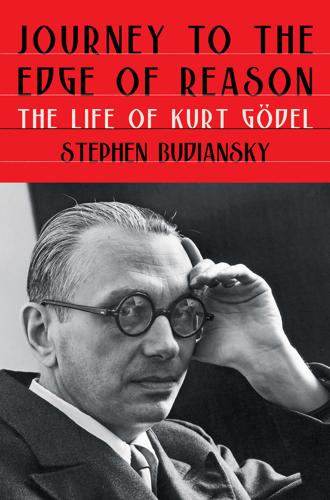
Journey to the Edge of Reason: The Life of Kurt Gödel
by
Stephen Budiansky
Published 10 May 2021
Translated by Patrick Healy. Amsterdam: November Editions, 2016. Kreisel, Georg. “Gödel’s Excursions into Intuitionist Logic.” In Gödel Remembered: Salzburg, 10–12 July 1983, edited by Paul Weingartner and Leopold Schmetterer. Naples: Bibliopolis, 1987. —. “Kurt Gödel.” Biographical Memoirs of Fellows of the Royal Society 26 (1980): 158–224. Kuh, Anton. “‘Central’ und ‘Herrenhof’.” In Der unsterbliche Österreicher. Munich: Knorr & Hirth, 1931. List, Rudolf. Brünn, ein deutsches Bollwerk. St. Pölten, Austria: St. Pöltner Zeitungs-Verlags, 1942. Mancosu, Paolo. “Between Vienna and Berlin: The Immediate Reception of Gödel’s Incompleteness Theorems.”
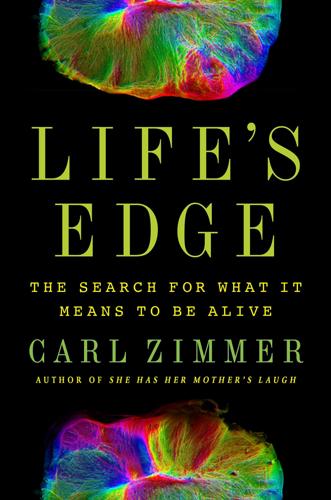
Life's Edge: The Search for What It Means to Be Alive
by
Carl Zimmer
Published 9 Mar 2021
“Spermatogenesis, Sperm Storage and Reproductive Timing in Bats.” Journal of Zoology 289:77–85. Phillips, R. 2020. “Schrodinger’s ‘What is Life?’ at 75: Back to the Future.” Manuscript. Pierpont, W. S. 1999. “Norman Wingate Pirie: 1 July 1907–29 March 1997.” Biographical Memoirs of Fellows of the Royal Society 45:399–415. Pirie, Norman W. 1937. “The Meaninglessness of the Terms Life and Living.” In Perspectives in Biochemistry: Thirty-One Essays Presented to Sir Frederick Gowland Hopkins by Past and Present Members of His Laboratory. Edited by Joseph Needham and David E. Green. Cambridge: Cambridge University Press.

The Dictionary People: The Unsung Heroes Who Created the Oxford English Dictionary
by
Sarah Ogilvie
Published 17 Oct 2023
After Yale, Hunt moved on to a stellar career with the Geological Survey of Canada and Laval and McGill universities in Canada, ultimately becoming Professor of Geology at the Massachusetts Institute of Technology. But he was an irascible and cantankerous fellow, who fell out with colleagues, and he did not last long at MIT. Hunt wrote a lot, was enormously industrious, and was showered with academic accolades (he received the Légion d’Honneur in 1855, was made a Fellow of the Royal Society of London in 1859 and of the National Academy of Sciences in 1873), so he was an obvious choice as a Specialist for the Dictionary. He is quoted in the OED over thirty times for geological and chemical terms. The OED records him as the first person to have used the words metasomatism, change in the chemical composition of a mineral or rock; biophysiology, the scientific study of functions found exclusively in living organisms; crenitic, relating to rising mineral matter from subterranean sources through the action of water springs; and several rocks and minerals including algerite, animikie, anorthosite, leucophanite, and loganite.

Empire of the Sum: The Rise and Reign of the Pocket Calculator
by
Keith Houston
Published 22 Aug 2023
Ceruzzi, “When Computers Were Human,” IEEE Annals of the History of Computing 13, no. 3 (July 1991): 243, https://doi.org/10.1109/MAHC.1991.10025. 42 Charles Frank, “Powell, Cecil Frank (1903–1969), Physicist,” Oxford Dictionary of National Biography, 2004, https://doi.org/10.1093/ref:odnb/35588; Frederick Charles Frank and Donald Hill Perkins, “Cecil Frank Powell, 1903–1969,” Biographical Memoirs of Fellows of the Royal Society 17 (November 30, 1971): 546, https://doi.org/10.1098/rsbm.1971.0021. 43 Grier, When Computers Were Human, 276. 44 Ceruzzi, “When Computers Were Human,” 242–243. 45 Ted H. Skopinski and Katherine G. Johnson, Determination of Azimuth Angle at Burnout for Placing a Satellite over a Selected Earth Position, vol. 233 (National Aeronautics and Space Administration, 1960); Margot Lee Shetterly, Hidden Figures: The Untold Story of the African American Women Who Helped Win the Space Race (London: William Collins, 2017), 120, 219–220. 46 Shetterly, Hidden Figures, 215–217; Stephen J.
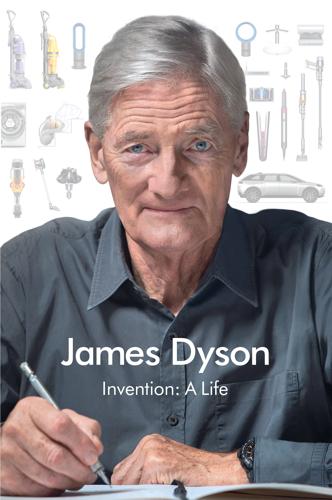
Invention: A Life
by
James Dyson
Published 6 Sep 2021
Alec’s view that “market research is bunk” and that one should “never copy the opposition” was hardly likely to appeal to his new boss, the hard-nosed truck salesman Donald Stokes, who replaced the much-loved Morris Minor with the hapless, market-researched Morris Marina and smothered the roofs of lithe Jaguars in vinyl. The bestselling British car of all time is the Mini—if market research had ruled Issigonis’s roost at BMC, it would never have existed. Inevitably, Alec Issigonis was sidelined. A thorn in British Leyland’s tough hide, he was, however, feted by fellow engineers, being made a Fellow of the Royal Society in 1967. An everyday reminder of how ingenious engineering design can be, an original Morris Mini Minor is on display at the Dyson campus in Malmesbury. Dyson engineers gave me it for my sixtieth birthday, and it’s sectioned lengthways, so its interior and workings, from the transverse engine, rubber suspension, weight-saving sliding windows, to those big door bins, are on display.
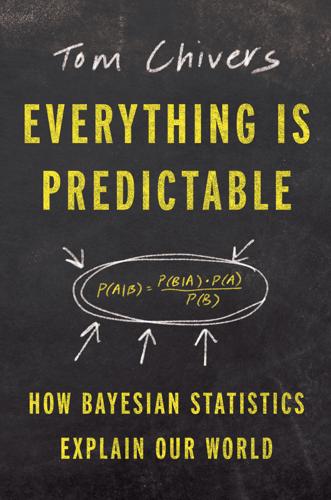
Everything Is Predictable: How Bayesian Statistics Explain Our World
by
Tom Chivers
Published 6 May 2024
Mary never married; Anne and Rebecca married well-to-do men of their social station, a textile dealer and an attorney, respectively. And Thomas, of course, followed his father into Nonconformist ministry. As a boy, Thomas was probably educated by a friend of the family, John Ward, later a professor of rhetoric at Gresham College, Cambridge, and a fellow of the Royal Society. Thomas’s father helped pay for the printing of Ward’s no doubt fascinating book The Lives of the Professors of Gresham College, and Ward’s biographer says that he was “induced to undertake the education of a certain number of the children of his friends” and opened a school in Moorfields.6 There is also a suggestion that he was educated as a boy by Abraham de Moivre, one of the great pioneers of probability theory, who had been forced to flee France for London and earn a living there as a tutor, although that appears to just be speculation.7 Thomas was a clever young man: a letter from Ward written in 1720, when Thomas would have been eighteen or nineteen, makes clear that Bayes could read Greek and Latin fluently—the letter is, after all, in Latin—although Ward had advice for how he could improve his Latin composition.
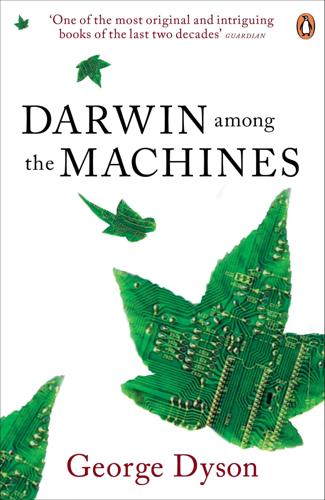
Darwin Among the Machines
by
George Dyson
Published 28 Mar 2012
Miles, eds., The Friends’ Ambulance Unit 1914–1919: A Record (London: Swarthmore Press, 1920), 212. 7.Stapledon, “Experiences,” 362. 8.Olaf Stapledon to Agnes Miller, 22 October 1918, in Crossley, Talking Across the World, 332. 9.Stapledon, “Experiences,” 372. 10.Olaf Stapledon to Agnes Miller, 26 December 1917, in Crossley, Talking Across the World, 264–265. 11.Lewis Richardson, as quoted by Ernest Gold, “Lewis Fry Richardson, 1881–1953,” Obituary Notices of Fellows of the Royal Society 9 (November 1954): 230. 12.Olaf Stapledon to Agnes Miller, 12 January 1918, in Crossley, Talking Across the World, 270. 13.Lewis Fry Richardson, Weather Prediction by Numerical Process (Cambridge: Cambridge University Press, 1922; facsimile reprint, New York: Dover Publications, 1965), 219. 14.Olaf Stapledon to Agnes Miller, 8 December 1916, in Crossley, Talking Across the World, 192–193. 15.Olaf Stapledon, Death into Life (London: Methuen, 1946); reprinted in Olaf Stapledon, Worlds of Wonder: Three Tales of Fantasy (Los Angeles: Fantasy Publishing Co., 1949), 130 (page citation is to the reprint edition). 16.Olaf Stapledon, The Star Maker (London: Methuen, 1937); reprinted in Last and First Men & Star Maker (New York: Dover Publications, 1968), 263–264. 17.Stapledon, Last and First Men, 119. 18.Ibid., 117–118. 19.Ibid., 118. 20.Ibid., 129. 21.Ibid., 142. 22.Frederic W.
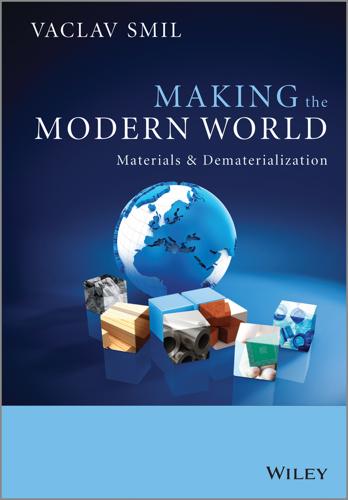
Making the Modern World: Materials and Dematerialization
by
Vaclav Smil
Published 16 Dec 2013
ISBN: 9781119942535 About the Author Vaclav Smil conducts interdisciplinary research in the fields of energy, environmental and population change, food production and nutrition, technical innovation, risk assessment and public policy. He has published more than 30 books and close to 500 papers on these topics. He is a Distinguished Professor Emeritus at the University of Manitoba, a Fellow of the Royal Society of Canada (Science Academy), the first non-American to receive the American Association for the Advancement of Science Award for Public Understanding of Science and Technology, and in 2010 he was listed by Foreign Policy among the top 50 global thinkers. Previous works by author China's Energy Energy in the Developing World (edited with W.
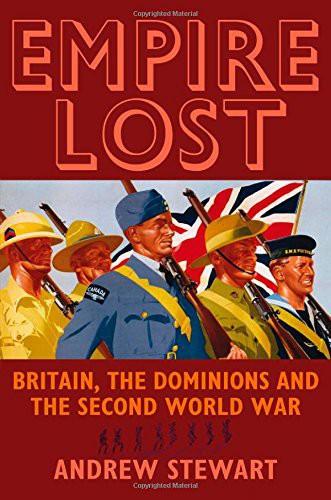
Empire Lost: Britain, the Dominions and the Second World War
by
Andrew Stewart
Published 1 Nov 2008
Eden to Churchill, 20 September 1940. 61 Gilbert, Finest Hour, pp. 747-52, 787-90, 804-10; Irving, Churchill's War, pp. 385-6, 420-4; Churchill, Finest Hour, pp. 390-4, 569-72; HCWM, 24 September 1940, DO121/9; WCM(40)259, 26 September 1940, CAB65/16. 62 Churchill, Finest Hour, pp. 389-90; minute by Holmes, 1 October 1940, DO35/1003/11/1/74. 63 Bruce to Menzies, 26 September 1940, DAFP III; ibid., Menzies to Churchill, 29 September 1940; 'Minute', September 1940, Lord Bruce's War Files, AA1969/275/1; HCWM, 26 September 1940, DO121/9; Churchill to Menzies, 2 October 1940, DO35/1003/11/1/74; ibid., 'Note by Bruce of talk with Churchill', 2 October 1940; ibid., Bruce to Menzies, 2 October 1940; ibid., minute by Holmes, 1 October 1940; Diary, 3 October 1940, Waterson Papers. 64 Ibid., Diary, 25 September 1940. 65 HCWM, 1 October 1940, DO121/9; Menzies to Churchill, 4 October 1940, DAFP III; Whiskard to DO, 1 October 1940, DO35/1003/11/1/74. 66 Churchill to Menzies, 6 October 1940, PREM3/63/13. 67 Garner, The Commonwealth Office, p. 199; Machtig to Batterbee, 28 August 1940, DO35/1000/1/24; ibid., Liesching to Batterbee, 3 September 1940; Machtig to Batterbee, 28 August 1940; Diary, 2 September 1940, Avon Papers; Machtig to Batterbee, 28 August 1940, Batterbee Papers, Box 7/2. 68 Caldecote to Batterbee, 26 July 1940, Batterbee Papers, Box 6/1; Churchill to Caldecote, 15 August 1940, Chartwell Papers, CHAR20/13/8. 69 Ibid., Churchill to Caldecote, 2 October 1940; he would now be the Lord Chancellor's effective deputy, serving as the second most senior judge in the country after Lord Simon. 70 Diary, 31 October 1940, Lord Woolton Papers (Bodleian Library, Oxford), M. S. Woolton. 71 Duncan to Lady Selbourne, 8 October 1940, Duncan Papers. 72 A. R. Peters, Anthony Eden at the Foreign Office, 1931-1938 (New York, 1986), pp. 258-60; Lord Todd, 'Robert Arthur James Gascoyne Cecil, Fifth Marquess of Salisbury, 1893-1972', Biographical Memoirs of Fellows of the Royal Society (Vol. 19; Dec. 1973), pp. 621-7. 73 Amery to Smuts, 16 October 1940, cited in Jean Van der Poel (ed.), Smuts Papers, Vol. 6 (Cambridge, 1973), p. 256; Pimlott, Diary of Hugh Dalton, p. 53; 'Neville [Chamberlain] was in a rage yesterday and in the morning whilst he was going over questions he delivered himself of an angry tirade against the "Glamour Boys".
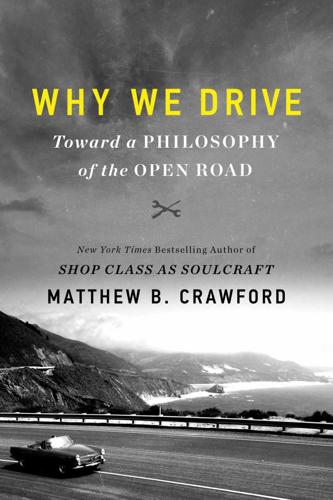
Why We Drive: Toward a Philosophy of the Open Road
by
Matthew B. Crawford
Published 8 Jun 2020
His first attempt, a six-cylinder engine, solved the smoke problem. He also increased power output from 105 horsepower to 150, climbing to 260 HP in later iterations over the course of the war. During the Second World War he turned to aircraft engines, with similarly spectacular results. Elected a Fellow of the Royal Society for his wartime accomplishments, he would enter the peerage as Knight Commander of the Most Excellent Order of the British Empire. I wonder if Sir Harry still smelled of carb cleaner as he kneeled before the queen, to be touched upon the shoulders with the ancient sword. Ricardo’s magisterial work, The High-Speed Internal-Combustion Engine, was first published in 1923 and rewritten in 1953.

Human Frontiers: The Future of Big Ideas in an Age of Small Thinking
by
Michael Bhaskar
Published 2 Nov 2021
While at the Edinburgh Academy, aged just fourteen, he produced his first paper, on the mathematics of curves. Stints at the University of Edinburgh and Trinity College, Cambridge put him at the heart of Britain's changing scientific world. Before long he had posts as a professor of Natural Philosophy in Aberdeen and London. Aged just thirty he was elected a Fellow of the Royal Society. Maxwell's career came at a turning point for science. Using radically imaginative models, Maxwell teased open the nature of electromagnetism, realising that light was part of the same puzzle. Previously obscure connections came together in a series of beautiful equations uniting the three extraordinary properties: ‘one of the greatest scientific discoveries of all time’.2 In time his work on electromagnetic waves led to innovations like radio, television and radar; it has been described as the second great unification of physics after Newton.
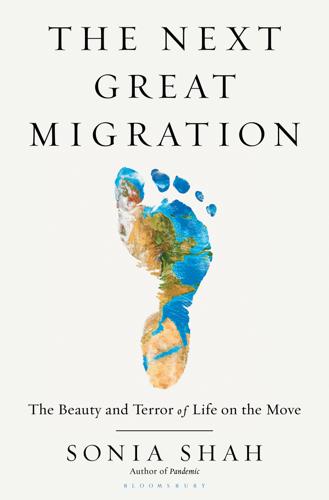
The Next Great Migration: The Beauty and Terror of Life on the Move
by
Sonia Shah
Produced by Walt Disney studios Jack Jungmeyer, “Filming a ‘Wilderness,’ ” New York Times, August 3, 1958; Cruel Camera: Animals in Movies, documentary film, Fifth Estate program, CBC Television, May 5, 1982. Elton is remembered today as the “founding father” Richard Southwood and J. R. Clarke, “Charles Sutherland Elton: 29 March 1900–1 May,” Biographical Memoirs of Fellow of the Royal Society, November 1, 1999; Chitty, Do Lemmings Commit Suicide? The truth about lemmings emerged Tim Coulson and Aurelio Malo, “Case of the Absent Lemmings,” Nature, November 2008; Chitty, Do Lemmings Commit Suicide?; Nils Christian Stenseth, interview by author, February 9, 2018. During snowy years, unknown to anyone Nicholls, “Truth About Norwegian Lemmings.
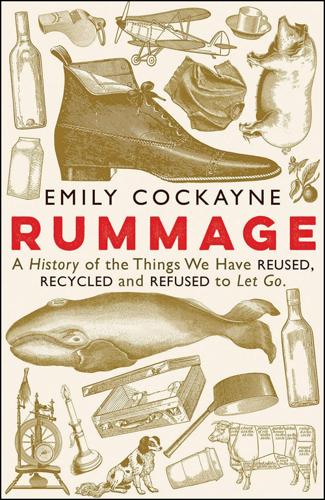
Rummage: A History of the Things We Have Reused, Recycled and Refused To Let Go
by
Emily Cockayne
Published 15 Aug 2020
Amid the gathered throng were three men: Henry Constantine Jennings and Joseph Hume (who had requested the ship be set on fire in the first place); they were joined by a Mr Good, probably a shipbuilder, described as a ‘dry-rot doctor’. The son of a shipmaster, Hume had trained as a doctor. When he became a Fellow of the Royal Society in 1818, he was described as being an expert in chemistry.35 Senior to his friend Jennings by about a decade, Hume was the radical MP for Aberdeen Burghs. Jennings was an ‘energetic merchant’ and ‘practical chemist’. Nine years previously Jennings had designed a lifeboat made from calico stuffed with waste ‘cork-shaving, cutting, or old cork’, milled into pieces that were bigger than sawdust but smaller than peas.36 Internal Admiralty correspondence refers to him as ‘that impudent fellow Jennings’.37 Jennings’s current obsession was the use of coal tar by the navy.
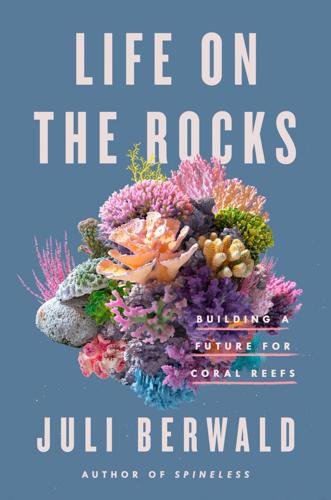
Life on the Rocks: Building a Future for Coral Reefs
by
Juli Berwald
Published 4 Apr 2022
Vaughan, “Reef Corals of the Bahamas and of Southern Florida,” Carnegie Institution of Washington Year Book No. 13 (Washington, DC: Gibson Brothers, 1914), 222–26, https://archive.org/details/yearbookcarnegie13carn/page/222/mode/2up. GO TO NOTE REFERENCE IN TEXT In a picture: B. Morton, “Charles Maurice Yonge: 9 December 1899–17 March 1986,” Biographical Memoirs of Fellows of the Royal Society 38 (1992): 377–412, https://royalsocietypublishing.org/doi/10.1098/rsbm.1992.0020. GO TO NOTE REFERENCE IN TEXT one of those low tides: C. M. Yonge and A. G. Nichols, “Studies on the Physiology of Corals: IV. The Structure, Distribution and Physiology of the Zooxanthellae,” Great Barrier Reef Expedition 1928–1929, Scientific Reports, vol. 1 (London: British Museum of Natural History, 1931), 154–55, 166, https://www.biodiversitylibrary.org/page/42820138#page/225/mode/1up.
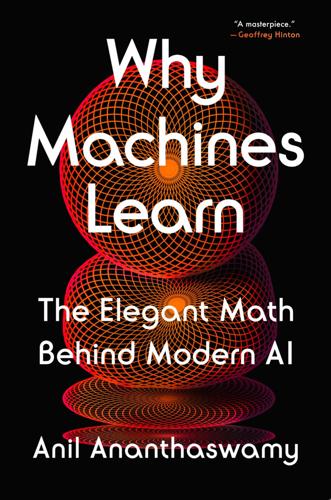
Why Machines Learn: The Elegant Math Behind Modern AI
by
Anil Ananthaswamy
Published 15 Jul 2024
GO TO NOTE REFERENCE IN TEXT For his doctoral thesis: S. G. Brush, “History of the Lenz-Ising Model,” Reviews of Modern Physics 39, No. 4 (1967): 883–93. GO TO NOTE REFERENCE IN TEXT Rudolf Ernst Peierls, a German physicist: Lee Sabine, “Rudolf Ernst Peierls, 5 June 1907–19 September 1995,” Biographical Memoirs of Fellows of the Royal Society, December 1, 2007, pp. 53265–84. GO TO NOTE REFERENCE IN TEXT “For sufficiently low temperatures”: R. H. Dalitz and Sir Rudolf Peierls, eds., Selected Scientific Papers of Sir Rudolf Peierls (Singapore: World Scientific Publishing, 1997), p. 229. GO TO NOTE REFERENCE IN TEXT the Hamiltonian of a system: Giorgio Parisi, “Spin Glasses and Fragile Glasses: Statics, Dynamics, and Complexity,” Proceedings of the National Academy of Sciences 103, No. 21 (May 23, 2006): 7948–55.
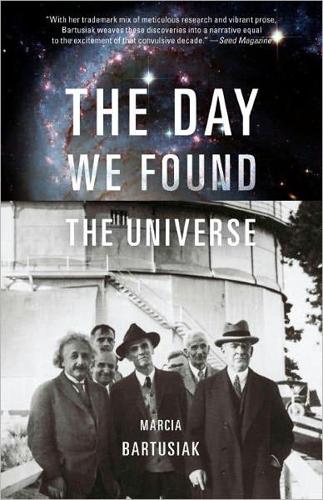
Day We Found the Universe
by
Marcia Bartusiak
Published 6 Apr 2009
So passionate was his commitment to astronomy that his younger sister, Caroline, who had earlier joined him in England, fed him morsels of food by hand, so that he would not have to pause while grinding and polishing. Pointing his home-built instruments toward the sky, he came to memorize the heavens and in 1781 climactically spotted Uranus, the first planet discovered since the dawn of history. He was promptly elected a fellow of the Royal Society and procured an annual stipend from England's King George III, a pension that at last allowed Herschel to devote himself to his astronomical interests, especially building ever-larger telescopes (the largest he ever constructed was forty feet long). Herschel was far ahead of his time, as he used his telescope to examine the universe much the way an astronomer would today.
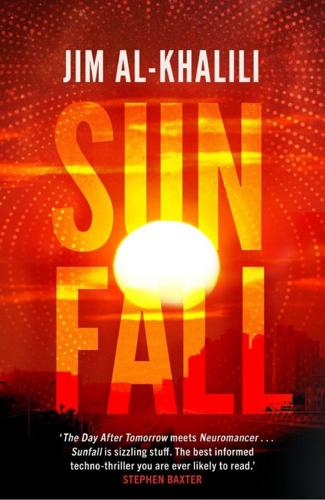
Sunfall
by
Jim Al-Khalili
Published 17 Apr 2019
A recipient of the Royal Society Michael Faraday Medal, the Institute of Physics Kelvin Medal and the inaugural Stephen Hawking Medal for Science Communication, he is also the current president of the British Science Association. He was appointed OBE in 2007 for services to science and was elected a fellow of the Royal Society in 2018. Sunfall is his first novel. Also by Jim Al-Khalili BLACK HOLES, WORMHOLES AND TIME MACHINES QUANTUM: A GUIDE FOR THE PERPLEXED PATHFINDERS: THE GOLDEN AGE OF ARABIC SCIENCE PARADOX: THE NINE GREATEST ENIGMAS IN SCIENCE QUANTUM MECHANICS: A LADYBIRD EXPERT BOOK GRAVITY: A LADYBIRD EXPERT BOOK With Johnjoe McFadden LIFE ON THE EDGE: THE COMING OF AGE OF QUANTUM BIOLOGY With Ray Mackintosh, Björn Jonson and Teresa Peña NUCLEUS: A TRIP INTO THE HEART OF MATTER As editor ALIENS: SCIENCE ASKS: IS ANYONE OUT THERE?
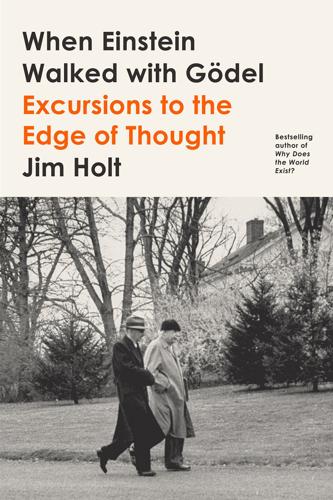
When Einstein Walked With Gödel: Excursions to the Edge of Thought
by
Jim Holt
Published 14 May 2018
* * * It was by precisely such logic that Alfred Bray Kempe, a London barrister and amateur mathematician, claimed in 1879 to have proved the four-color conjecture. Kempe’s reasoning was replete with mathematical convolutions, but it appeared persuasive, and not just to C. S. Peirce. Leading mathematicians in Britain, on the Continent, and in the United States agreed that it was the long-sought solution to the map problem. Kempe was made a fellow of the Royal Society and eventually knighted. His “proof” stood for a decade, until a subtle but fatal flaw was found. The man who detected this flaw was a classicist and mathematician called Percy Heawood—or “Pussy” Heawood by his friends, owing to his catlike whiskers. Heawood, who was almost apologetic about overturning the result, had personal oddities that make him stand out even in this eccentric-filled saga.
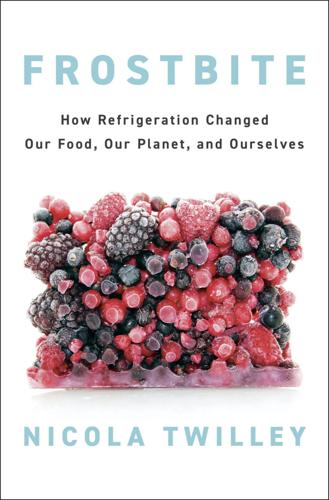
Frostbite: How Refrigeration Changed Our Food, Our Planet, and Ourselves
by
Nicola Twilley
Published 24 Jun 2024
On supplying cities with fruit and vegetables, I consulted Eunice Fuller Barnard, “In Food, Also, a New Fashion Is Here,” New York Times Magazine, May 4, 1930, and “Britain on the Brink of Starvation: Unrestricted Submarine Warfare,” Historic England, February 1, 2017. To tell the story of Kidd and West’s work at the LTRS, I referenced the following: H. B. S. Montgomery and A. F. Posnette, “Franklin Kidd, 12 October 1890–7 May 1974,” Biographical Memoirs of Fellows of the Royal Society 21 (November 1975): 406–30; P. D. Sell, “Cyril West, 1887–1986,” Watsonia 16 (1987): 361–63; F. Kidd, “Food Research under the Department of Scientific and Industrial Research,” Proceedings of the Royal Society of London. Series A, Mathematical and Physical Sciences 205, no. 1083 (March 7, 1951): 467–83; Franklin Kidd, Cyril West, and M.
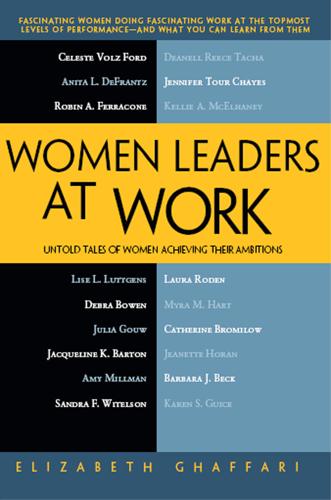
Women Leaders at Work: Untold Tales of Women Achieving Their Ambitions
by
Elizabeth Ghaffari
Published 5 Dec 2011
The next thing I knew, I had to pick this package up at the US-Canadian border. They sent me a beautiful, black-lacquered captain's chair with an inlaid medal with my name and the award inserted in the back of the chair. That was very exciting. Everyone likes to be patted on the back. I still have the chair in my living room. Then again, to be named a fellow of the Royal Society is the highest honor that a Canadian scientist or scholar can have bestowed on them. So, obviously, that is very, very important to me. Finally, the other recognition was being invited to be a member of the Dana Alliance for Brain Initiatives in New York because there are only around two hundred and fifty neuroscientists who are members from around the world.
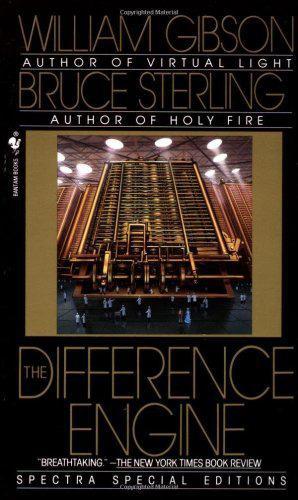
The Difference Engine
by
William Gibson
and
Bruce Sterling
Published 31 Aug 1990
As they walked, she seemed to recover herself somewhat. Her gloved hand rested on his forearm as lightly as a cobweb. Mallory waited for a break in the hubbub. He found one at last beneath the whiled pillars of the stands. "May I introduce myself, ma'am? My name is Edward Mallory. I am a Fellow of the Royal Society; a paleontologist." "The Royal Society," the woman muttered absently, her veiled head nodding like a flower on a stalk. She seemed to murmur something further. "I beg your pardon?" "The Royal Society! We have sucked the life-blood from the mysteries of the universe . . . " Mallory stared.
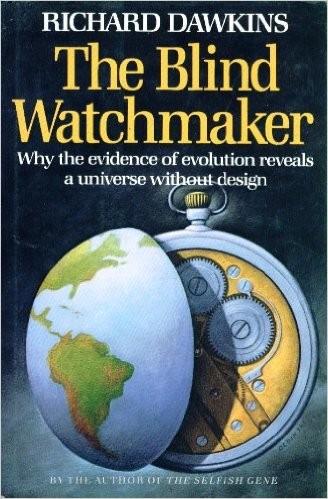
The Blind Watchmaker; Why the Evidence of Evolution Reveals a Universe Without Design
by
Richard Dawkins
Published 1 Jan 1986
He has also won the 1989 Silver Medal of the Zoological Society of London and the 1990 Royal Society Michael Faraday Award for the furtherance of the public understanding of science. In 1994 he won the Nakayama Prize for Human Science and in 1995 was awarded an Honorary D.Litt. by the University of St Andrews and by the National University, Canberra. In 1997 he was elected a Fellow of the Royal Society of Literature and won the Cosmos International Prize. To my parents PENGUIN BOOKS THE BLIND WATCHMAKER ‘The most brilliant contemporary preacher of Charles Darwin’s theory of evolution … Dawkins has done it again and defended modern Darwinist orthodoxy with wit and passion’ Daily Telegraph ‘A lovely book, original and lively, it expounds the ins and outs of evolution with enthusiastic clarity, answering, at every point, the cavemen of creationism’ Isaac Asimov ‘It succeeds quite brilliantly.
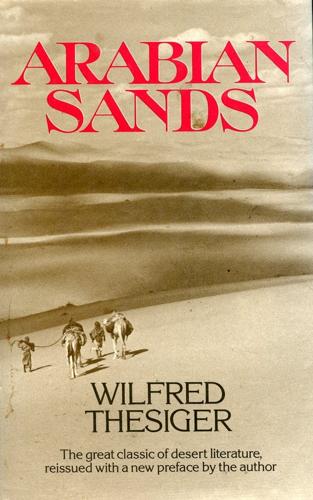
Arabian Sands
by
Wilfred Thesiger
Published 15 Sep 1959
In recognition of his journeys he received the Founder’s Gold Medal from the Royal Geographical Society, the Lawrence of Arabia Medal from the Royal Central Asian Society, the Livingstone Gold Medal from the Royal Scottish Geographical Society and the Burton Memorial Medal from the Royal Asiatic Society. He was a Fellow of the Royal Society of Literature and an Honorary Fellow of the British Academy. In 1968 he received the CBE, and a knighthood in 1995. In his two greatest books, Arabian Sands and The Marsh Arabs, he gives a vivid account of a way of life which, until recently, had continued for thousands of years. The Marsh Arabs, which won the 1964 W.
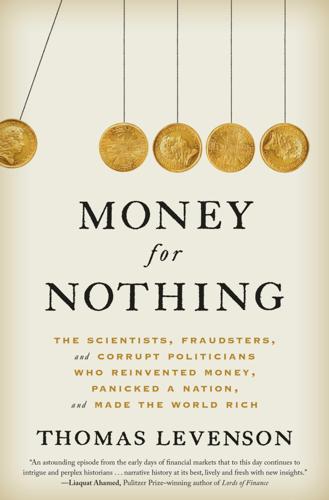
Money for Nothing
by
Thomas Levenson
Published 18 Aug 2020
Several expedients had been tried over the preceding few years. Finally, in September 1695, the Treasury sought outside help to deal with one aspect of the crisis: the disappearance of England’s hard currency due to its stock of silver coin flowing across the Channel to Paris and Amsterdam. Among those consulted were four fellows of the Royal Society: Davenant, Sir Christopher Wren, the philosopher John Locke—and Isaac Newton. Here the scientific revolution, in the persons of some of its greatest minds, collided directly with a financial transformation, at a moment when the fate of a nation hung in the balance. *1 These early companies faced more problems than the quantitative one of figuring out what to charge for protection.
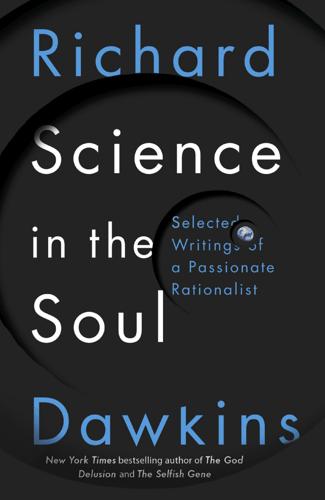
Science in the Soul: Selected Writings of a Passionate Rationalist
by
Richard Dawkins
Published 15 Mar 2017
The same applies to almost everyone I meet outside the university: shopkeepers, waiters, taxi drivers, bartenders, random people I stop in the street to ask the way. Can you imagine a visitor to England addressing a London cabbie in French or German? And you’d have little more luck with a Fellow of the Royal Society. The conventional explanation goes like this, and there’s probably something in it. Precisely because English is so widely spoken, we don’t need to learn any other language. Biologists like me tend to be suspicious of ‘need’ as an explanation for anything. A long-discredited alternative to Darwinism, Lamarckism, invoked ‘need’ as the driver of evolution: ancestral giraffes needed to reach high foliage and their energetic striving to do so somehow called longer necks into existence.
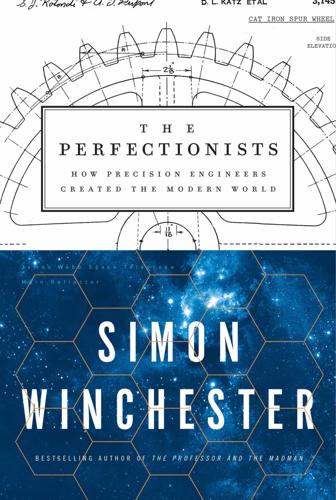
The Perfectionists: How Precision Engineers Created the Modern World
by
Simon Winchester
Published 7 May 2018
William’s son, John Herschel, was to become so revered a scientist—polymathic but supreme in sky-searching—that he was buried in Westminster Abbey beside Sir Isaac Newton (the common man may bless him for his interest in cameras, and his invention of the terms positive, negative, snap-shot, and photographer). He was also happily fertile: his fifth child (of twelve) and second son, Alexander, was himself no mean astronomer, and would become a professor, a Fellow of the Royal Society, and a leading authority on meteorites. * NASA has now all but completed a vastly more powerful (and at eight billion dollars, much costlier) device, the James Webb Space Telescope, which is due to be launched from the European spaceport in French Guiana, in April 2019. The telescope will float almost a million miles from Earth, well beyond the reach of any shuttle-hoisted repair teams; consequently, its manufacture, and the planning of the deep-space maneuvers that have to be successfully accomplished before it can make a single observation, are being rehearsed over and over, to ensure that everything works down to the finest detail
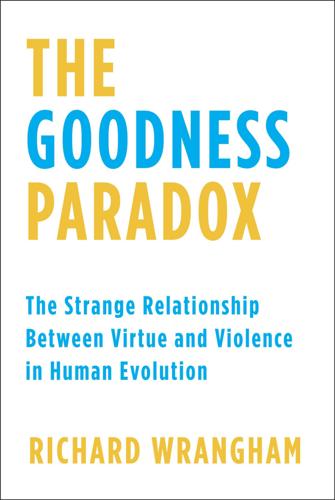
The Goodness Paradox: The Strange Relationship Between Virtue and Violence in Human Evolution
by
Richard Wrangham
Published 29 Jan 2019
The story suggested that our tendencies to behave well come from our being human, whereas our tendencies to behave badly come from our inner ape. A critical feature was missing, however. The aggression that was so prominent in Hyde, and suppressed in Jekyll, was almost all reactive. Proactive aggression was hardly to be seen. The fictional Jekyll was a London doctor with everything going for him—a wealthy Fellow of the Royal Society, good-looking, hardworking, ambitious, respectful, and a morally guided thinker. He was the “very pink of the proprieties.”1 His alter ego, Mr. Hyde, was “pale and dwarfish,…with a sort of murderous mixture of timidity and boldness.” Hyde lost his temper easily. He hit children at will, and in a fit of rage he killed an old man.
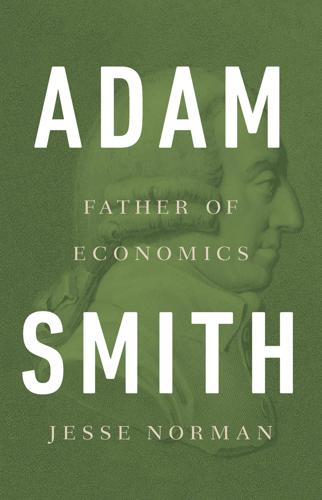
Adam Smith: Father of Economics
by
Jesse Norman
Published 30 Jun 2018
In the event, however, he was persuaded by Buccleuch to reject the offer in the expectation of something better after the new book was completed, and in due course Buccleuch did indeed procure for him the post of Commissioner of Customs in Edinburgh. But all this lay in the future. For the present, London offered much to entertain him, and Smith was quickly admitted as a Fellow of the Royal Society. Founded in 1660 at the instigation of Sir Christopher Wren to promulgate the ‘new science’, the Society had experienced something of a decline since the days of Newton, Hooke and Herschel, but it remained highly prestigious even so. Smith periodically attended lectures at the Society’s premises off Fleet Street, and carefully collected copies of its Transactions.

The Lonely Century: How Isolation Imperils Our Future
by
Noreena Hertz
Published 13 May 2020
An evangelical at heart, he initially pursued a career in the Church of Scotland but found public speaking too stressful; he once fainted at a dinner party when invited to say grace.1 Instead, he turned to a different kind of evangelism: evangelism for science. In 1817, Brewster – by now a fellow of the Royal Society and winner of its prestigious Copley Medal for his contribution to the field of optics – patented a ‘philosophical toy’ that used angled mirrors and small pieces of coloured glass to create beautiful symmetrical forms. This device, he hoped, would allow people to amuse themselves while simultaneously observing the wonders of science.
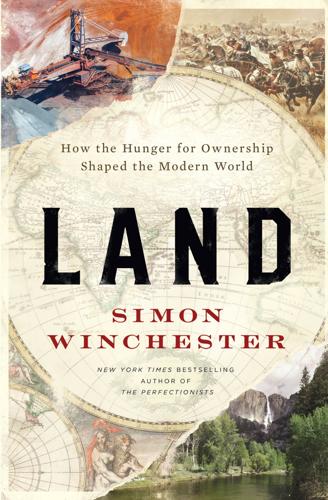
Land: How the Hunger for Ownership Shaped the Modern World
by
Simon Winchester
Published 19 Jan 2021
*In the mid-eighteenth century the German-born but London-based astronomer William Herschel and his sister Caroline between them discovered a score of comets, twenty-five hundred nebulae, and, most notably, the planet Uranus. William’s son John became in turn so accomplished in the field that he was buried in Westminster Abbey beside Sir Isaac Newton. And Alexander Herschel, John’s second son, was elected a Fellow of the Royal Society and was the world’s leading nineteenth century expert on meteorites. *He fathered eighteen children by his two wives. *The fact that a secretive revolutionary organization tried to topple him from the throne as soon as he assumed office in December 1925—the group thereafter being known as the Decembrists—left him understandably nervous during the first years of his reign.
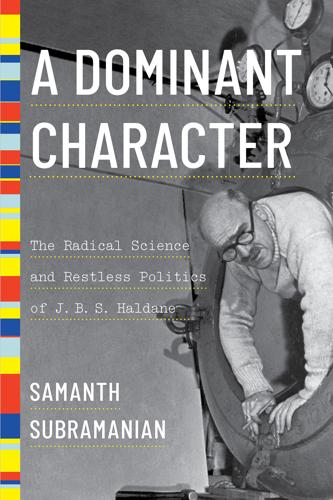
A Dominant Character
by
Samanth Subramanian
Published 27 Apr 2020
Charlotte’s displeasure with Cambridge was compounded now by her wish that Ronnie, nearly 14, enroll in a London school. Haldane could quit Cambridge at any time to teach somewhere else, she thought. So he resigned in 1932, in the middle of a year of furious productivity: two books, more than a dozen scientific papers, and a confirmation as a fellow of the Royal Society, the last a salve for the snub by Cambridge. In August, he went to America to lecture at Columbia and Cal Tech and to attend the Sixth International Congress of Genetics. He was feted everywhere. At a dinner in his honor, he was introduced to the 250 guests present as the man “to whom our country owes more than to any other foreign scientist for his work in the popularization of science.”
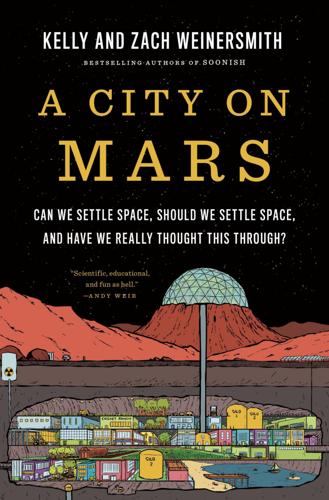
A City on Mars: Can We Settle Space, Should We Settle Space, and Have We Really Thought This Through?
by
Kelly Weinersmith
and
Zach Weinersmith
Published 6 Nov 2023
But Vasyutin didn’t cope and because of all of this I was once again grounded.” That is, lying to medical staff is fine. What’s forbidden is to stop lying. Bart Hendrickx, “Illness in Orbit,” Spaceflight 53 (2011): 108. OceanofPDF.com *Our best guess here is that this means “Doctor of Laws, Fellow of the Royal Society, etc.” OceanofPDF.com *Those poo bags are of historical value and scientific interest. Under current space law, that poo is US government property and is protected by NASA’s 2011 “Recommendations to Space-Faring Entities: How to Protect and Preserve the Historical and Scientific Value of U.S.

Computer: A History of the Information Machine
by
Martin Campbell-Kelly
and
Nathan Ensmenger
Published 29 Jul 2013
Babbage never built a full-scale Difference Engine because in 1833 he abandoned it for a new invention, the Analytical Engine, the chief work on which his fame in the history of computing rests. He was at that time at the very height of his powers: Lucasian Professor of Mathematics at Cambridge University, Fellow of the Royal Society, one of the leading lights in scientific London, and author of the most influential economics book of the 1830s, the Economy of Manufactures. As important as the Difference Engine had been, it was fundamentally a limited conception in that all it could do was produce mathematical tables.

The Woman Who Smashed Codes: A True Story of Love, Spies, and the Unlikely Heroine Who Outwitted America's Enemies
by
Jason Fagone
Published 25 Sep 2017
Troy, “Donovan’s Original Marching Orders,” Studies in Intelligence 17, no. 2 (1973): 39–67, https://www.cia.gov/library/center-for-the-study-of-intelligence/kent-csi/vol17no2/html/v17i2a05p_0001.htm. 216 “incomparably better” British Security Coordination, The Secret History, 471–72. “The whole system” Ibid. a husky, apple-cheeked colonel James Chadwick, “Frederick John Marrian Stratton, 1881–1960,” Biographical Memoirs of Fellows of the Royal Society 7 (November 1961): 280–93. 217 looked like Santa Claus ESF interview with Benson. The British operated Bob King, “The RSS from 1939 to 1946,” November 22, 1944. He wanted assistance “History of USCG Unit #387,” Foreword. others relied on “turning grilles” Ibid., 68–84. made special devices and tools Jones, “History of OP-20-GU.” 218 “Fireside Chat” radio speech Franklin Delano Roosevelt, “Fireside Chat 16: On the Arsenal of Democracy,” December 29, 1940, University of Virginia Miller Center, https://millercenter.org/the-presidency/presidential-speeches/december-29-1940-fireside-chat-16-arsenal-democracy. 36 minutes and 56 seconds Ibid.
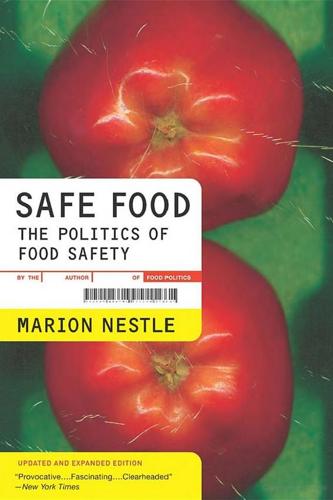
Safe Food: The Politics of Food Safety
by
Marion Nestle
Published 1 Jan 2010
In this situation, the genetic engineering of a single nutrient or two into a food, while attractive in theory, raises many questions about its benefits in practice. In 2001, I sent a brief letter outlining these nutritional points to the Journal of the American Dietetic Association.31 An electronic copy appeared on the Internet and drew responses from colleagues around the world. A British scientist (who identified himself as a Fellow of the Royal Society) wrote, “It would seem to me that the simplest way to find out if vitamin A rice [sic] works as a vitamin supplement is to try it out. If it doesn’t then what has been lost except a lot of hot air and propaganda; on the other hand if it does work and your letter has delayed its introduction, could you face the children who remain blind for life as a consequence?”
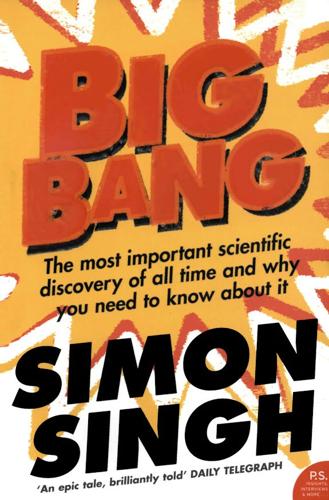
Big Bang
by
Simon Singh
Published 1 Jan 2004
Crucially, the contraction phase compresses the outer layer of the star, which causes it to become more opaque, resulting in the dimming phase of the Cepheid. Although Goodricke was unaware of the explanation behind the variability of Cepheids, the discovery of this new type of star was in itself a great achievement. At the age of just twenty-one, a new honour was bestowed on him: he was made a Fellow of the Royal Society. Then, just fourteen days later, the life of this brilliant young astronomer was cut short. Goodricke died of pneumonia, contracted during long freezing nights spent staring at the stars. His friend and collaborator Pigott lamented: ‘This worthy young man exists no more; he is not only regretted to many friends, but will prove a loss to astronomy, as the discoveries he so rapidly made evince.’

Algorithms to Live By: The Computer Science of Human Decisions
by
Brian Christian
and
Tom Griffiths
Published 4 Apr 2016
The son of a minister, Bayes went to the University of Edinburgh to study theology, and was ordained like his father. He had mathematical as well as theological interests, and in 1736 he wrote an impassioned defense of Newton’s newfangled “calculus” in response to an attack by Bishop George Berkeley. This work resulted in his election in 1742 as a Fellow of the Royal Society, to whom he was recommended as “a Gentleman … well skilled in Geometry and all parts of Mathematical and Philosophical Learning.” After Bayes died in 1761, his friend Richard Price was asked to review his mathematical papers to see if they contained any publishable material. Price came upon one essay in particular that excited him—one he said “has great merit, and deserves to be preserved.”
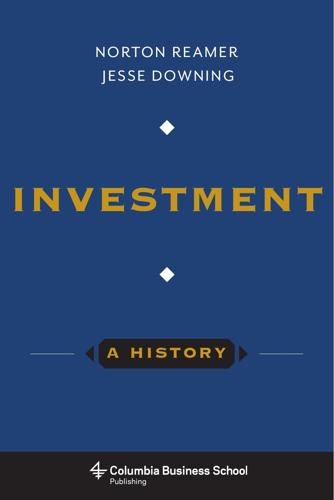
Investment: A History
by
Norton Reamer
and
Jesse Downing
Published 19 Feb 2016
In the end, the court recognized the absurdity of this defense and the insurers were held liable, but the episode speaks to how nascent and often ill defined financial responsibilities in the insurance industry were at the time.34 While simple term life insurance had existed for some time, in 1756 the English mathematician and Fellow of the Royal Society James Dodson devised the level premium plan that allowed policyholders to pay a flat premium, and, in turn, they would receive coverage for their entire lives. With this idea, James Dodson became the father of whole life insurance. He created this system after he himself had applied for life insurance coverage from the Amicable Society, a group offering insurance chartered by Queen Anne in 1706, but was denied for being too old.
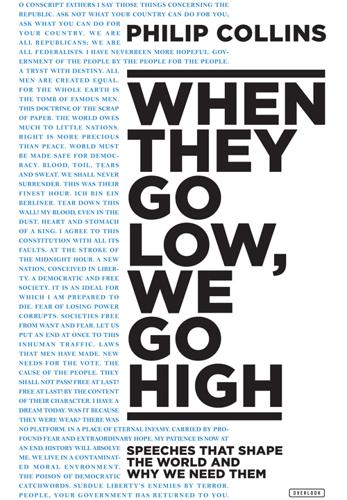
When They Go Low, We Go High: Speeches That Shape the World – and Why We Need Them
by
Philip Collins
Published 4 Oct 2017
At the age of forty-two Franklin retired to devote himself to the pursuit of civil life, science and literature, in all three of which endeavours he was accomplished to an almost incredible standard. Franklin was the first American to become internationally famous. He became renowned as the greatest scientist of the mid-eighteenth century. He was a fellow of the Royal Society in London and a foreign member of the French Royal Academy of Science. Franklin’s proof that lightning was electrical opened a new frontier of knowledge. For his studies in electricity he won the 1753 Copley Medal of the Royal Society of London, the nearest contemporary equivalent of which would be the Nobel Prize for Physics.
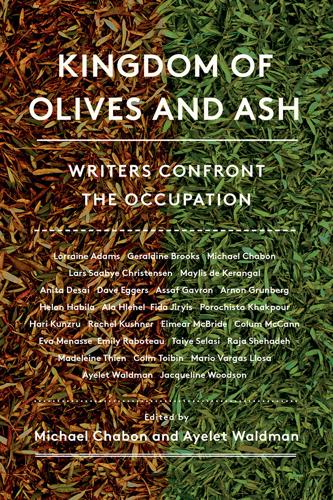
Kingdom of Olives and Ash: Writers Confront the Occupation
by
Michael Chabon
Published 29 May 2017
ANITA DESAI was born and raised in India. She is the author of several novels of which three—Clear Light of Day, In Custody, and Fasting, Feasting—were short-listed for the Booker Prize. She is also the author of two collections of short stories, Games at Twilight and Diamond Dust. She is a Fellow of the Royal Society of Literature in London and the American Academy of Arts and Letters, and a professor emeritus of the Massachusetts Institute of Technology. DAVE EGGERS is the author of ten books, among them Heroes of the Frontier, The Circle, and A Hologram for the King, which was a finalist for the 2012 National Book Award.
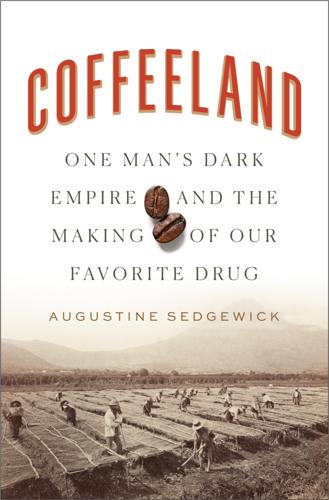
Coffeeland: One Man's Dark Empire and the Making of Our Favorite Drug
by
Augustine Sedgewick
Published 6 Apr 2020
Lorraine Boissoneault, “How Coffee, Chocolate and Tea Overturned a 1,500-Year-Old Medical Mindset,” Smithsonian.com, May 17, 2017, https://www.smithsonianmag.com/history/how-coffee-chocolate-and-tea-overturned-1500-year-old-medical-mindset-180963339/. 11. Brian Cowan, The Social Life of Coffee: The Emergence of the British Coffeehouse (New Haven: Yale University Press, 2005), 47–53. 12. Cowan, 31. 13. As reported by John Houghton, a Fellow of the Royal Society, in his “Discourse of Coffee,” Philosophical Transactions of the Royal Society 21, no. 256 (September 1699): 311–17; recounted in Ellis, The Coffee-House, 26–41. 14. Cowan, Social Life, 49; Ellis, The Coffee-House, 34–36. 15. For a searchable version, see The Diary of Samuel Pepys, www.pepysdiary.com. 16.
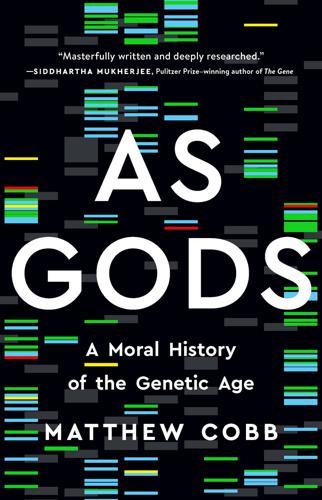
As Gods: A Moral History of the Genetic Age
by
Matthew Cobb
Published 15 Nov 2022
Above all there was a mismatch between the views of the older generation, as represented by Jacques Monod’s defence of science’s quest for objective knowledge, and those of younger speakers, such as Young and Rose, who emphasised not only that ‘all facts are theory-laden’ but that, even more provocatively, in Young’s words, no biological fact ‘is immune from the ideologising influences of its social content’.34 The old guard were firm believers in science as a neutral, objective force; the young radicals understood that science takes place in a social context and has political implications, in particular when it is applied. The contrast between these views was particularly stark in the final two talks, from Beckwith and Bronowski. Beckwith called for scientists to ‘build the ties with the rest of the people’ in order to ‘bring science to the people’. He denounced the structure of the meeting, with its Fellows of the Royal Society (FRSs) and Nobel Prize winners – even his own presence, he explained, was simply a consequence of the press-sponsored notoriety he had acquired. In contrast, Bronowski focused on the need to make science independent from the influence of the military and the state by creating an international umbrella organisation to oversee funding.
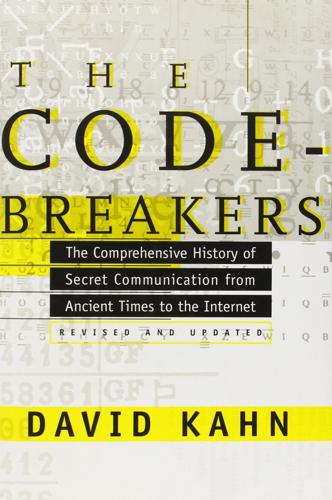
The Codebreakers: The Comprehensive History of Secret Communication From Ancient Times to the Internet
by
David Kahn
Published 1 Feb 1963
Blencowe did so well that six years later this salary was doubled, and he stood high in the royal favor: Queen Anne intervened in his behalf during a dispute with All Souls College at Oxford, where he was a fellow. But he shot himself in a fit of temporary insanity during his recovery from a violent fever in 1712. He was succeeded by Dr. John Keill, 50-year-old professor of astronomy at Oxford, who, though a fellow of the Royal Society, proved totally incompetent. On May 14, 1716, Keill was replaced by Edward Willes, a 22-year-old minister at Oriel College, Oxford. Willes embarked at once upon a career unique in the annals of cryptology and the church. He not only managed to reconcile his religious calling with an activity once condemned by churchly authorities, but also went on to become the only man in history to use cryptanalytic talents to procure ecclesiastical rewards.
…
He constructed an electric telegraph before Morse did, invented the concertina, improved the dynamo, studied underwater telegraphy, produced some of the first stereoscopic drawings, published half a dozen papers on acoustics, discussed phonetics and hypothetical speaking machines in print, conducted numerous electrical experiments, and popularized a method for the extremely accurate measurement of electrical resistance now in frequent use and called the “Wheatstone bridge.” His work was highly enough regarded for him to be elected a fellow of the Royal Society and to be knighted. He was nominally professor of experimental philosophy at King’s College, London, but was so excessively shy that he hardly ever actually lectured. Around 1860, in his late fifties, he solved a long cipher letter of Charles I. It consisted of seven folio pages filled with numerals, each page signed at the top by the king; it proved to be instructions in French for the Sieur de Goffe, enciphered in a small one-part nomenclator (a = 12, 13, 14, 15, 16, 17; b = 18, 19; France = 478).
…
As for the variations, “The words ‘plus’ and ‘equal’ are so different from the regularly fluctuating signals that you cannot be mistaken. I am absolutely sure that any Chinese peasant who has never understood the English words ‘plus’ and ‘equal’ will understand what you have said.” Lancelot Hogben, a Fellow of the Royal Society, editor of the best-selling The Loom of Language, and himself inventor of an interstellar language, agreed with Freudenthal up to the establishment of temporal signals. But he thought—and, many believe, rightly—that the step after that would be to set up a common factual framework based on mutual experience, which would have to be celestial phenomena.

Red Plenty
by
Francis Spufford
Published 1 Jan 2007
His second, The Child That Books Built, gave Neil Gaiman ’the peculiar feeling that there was now a book I didn’t need to write’. His third, Backroom Boys, was called ’as nearly perfect as makes no difference’ by the Daily Telegraph and was shortlisted for the Aventis Prize. In 2007 he was elected a Fellow of the Royal Society of Literature. He teaches writing at Goldsmiths College and lives near Cambridge. By the Same Author THE CHATTO BOOK OF CABBAGES AND KINGS: Lists in Literature THE CHATTO BOOK OF THE DEVIL CULTURAL BABBAGE: Technology, Time and Invention (with Jenny Uglow) I MAY BE SOME TIME: Ice and the English Imagination THE CHILD THAT BOOKS BUILT BACKROOM BOYS: The Secret Return of the British Boffin Copyright First published in 2010 by Faber and Faber Ltd Bloomsbury House 74–77 Great Russell Street London WC1B 3DA This ebook edition first published in 2010 All rights reserved © Francis Spufford, 2010 The right of Francis Spufford to be identified as author of this work has been asserted in accordance with Section 77 of the Copyright, Designs and Patents Act 1988 This ebook is copyright material and must not be copied, reproduced, transferred, distributed, leased, licensed or publicly performed or used in any way except as specifically permitted in writing by the publishers, as allowed under the terms and conditions under which it was purchased or as strictly permitted by applicable copyright law.

Troublemakers: Silicon Valley's Coming of Age
by
Leslie Berlin
Published 7 Nov 2017
By the end of 1984, former PARC employees at Digital’s Systems Research Center (DEC SRC) included Andrew Birrell, Marc Brown, Leo Guibas, Jim Horning, Steve Jeske, Butler Lampson, Roy Levin, Carol Peters, Phil Petit, Lyle Ramshaw, Paul Rovner, Mike Schroeder, Larry Stewart, Chuck Thacker, Mary-Claire van Leunen, and John Wick. 35. Citation as Fellow of the Royal Society; Crystal Lu, “The Genius: Mike Burrows’ Self-Effacing Journey Through Silicon Valley” at http://web.archive.org/web/20080217003150/http://www.stanford.edu/group/gpj/cgi-bin/drupal/?q=node/60. Video Nation — Al Alcorn 1. Charles P. Alexander, “Video Games Go Crunch!,” Time, Oct. 17, 1983. 2.

Berlin: Life and Death in the City at the Center of the World
by
Sinclair McKay
Published 22 Aug 2022
There was a rather moving monograph published not long after the war entitled ‘Max Planck and Adolf Hitler’ by James C. O’Flaherty, American Association of University Professors Bulletin, vol. 42, no. 3, Autumn 1956. 10. ‘Lise Meitner: 1878–1968’ by O. R. Frisch, Biographical Memoirs of Fellows of the Royal Society, vol. 16, November 1970. 11. From Heisenberg’s War: The Secret History of the German Bomb by Thomas Powers (Cape, 1993). 12. Ibid. 13. Ibid. 14. Ibid. 15. Speer, Inside the Third Reich. 16. Ibid. 17. From Von Braun: Dreamer of Space, Engineer of War by Michael J. Neufeld (Knopf, 2007). 18.
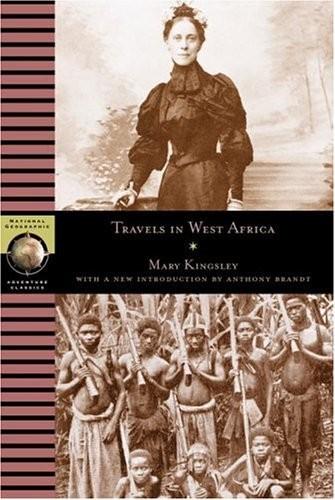
Travels in West Africa
by
Mary Henrietta Kingsley
Published 1 Jan 1897
There can be little doubt that the very earliest human beings found, as their descendants still find, their plans frustrated, let them plan ever so wisely and carefully; they must have seen their companions overtaken by death and disaster, arising both from things they could see and from things they could not see. The distinction between these two classes of phenomena is not so definitely recognised by savages or animals as it is by the more cultured races of humanity. I doubt whether a savage depends on his five senses alone to teach him what the world is made of, any more than a Fellow of the Royal Society does. From this method of viewing nature I feel sure that the general idea arose — which you find in all early cultures — that death was always the consequence of the action of some malignant spirit, and that there is no accidental or natural death, as we call it; and death is, after all, the most impressive attribute of life.
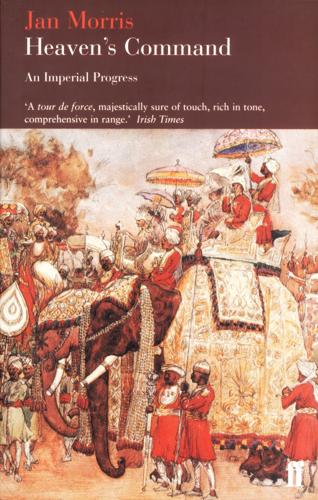
Heaven's Command (Pax Britannica)
by
Jan Morris
Published 22 Dec 2010
Not only was it the Corcyra of the ancients, but it was also the place where Lord Guilford himself, in 1791, had been received into the Greek Orthodox Church. For this civilized man, Eton and Christ Church, and a son of the Lord North who had lost the American empire, was a genuine cosmopolitan. De Quincey once called him ‘a semi-delirious Lord’, but he spoke six languages, wrote poems in classical Greek, and was a Fellow of the Royal Society. He had been the first British Governor of Ceylon, a post he found uncomfortably beyond even his varied capacities, and ever since the British acquisition of the Ionians he had devoted his energies to the idea of the university. It was founded in 1824, with Guilford as its President. He lavished upon it books, scientific equipment, manuscripts and works of art, and for a time it really was the prime centre of higher learning in the Greek-speaking world.
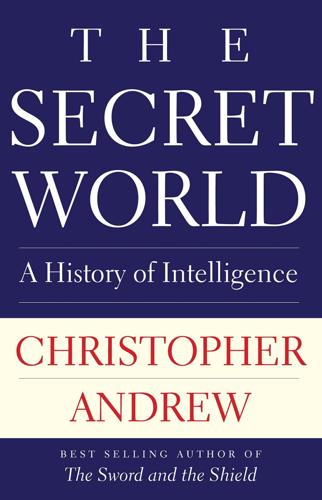
The Secret World: A History of Intelligence
by
Christopher Andrew
Published 27 Jun 2018
The King himself was personally responsible for establishing a secret alliance between his Hanoverian codebreakers at Nienburg and those in Britain, who exchanged both intelligence and personal visits. Decrypts from Nienburg were forwarded by the Hanoverian minister in London to the King and distributed to leading ministers.5 After the suicide of Queen Anne’s royal decipherer, William Blencowe, in 1712,6 he had been succeeded by a 39-year-old Fellow of the Royal Society, John Keill, who, like Blencowe, was an Oxford don. Keill had been about to accept a post as mathematician in the Venetian Republic when Robert Harley offered him the post of decipherer. The fact that the offer came directly from Queen Anne’s Chief Minister (not yet called ‘Prime Minister’) is evidence of the importance of the post, though Keill was paid only £100 a year – half the salary of Blencowe.
…
His chief assistant at Passy, near Paris, where he established the American mission, was his protégé, Edward Bancroft. Born in Massachusetts, Bancroft had moved to London in 1767, studied at St Bartholomew’s Hospital and begun a successful career as scientist and writer. With Franklin’s backing, he was elected Fellow of the Royal Society (FRS) in 1773 at the age of only twenty-nine. Bancroft was the first FRS to become a major spy. Franklin instructed Silas Deane, who arrived in Paris five months before him as the first American commissioner in July 1776, to make secret contact with Bancroft, whom Deane had once taught at school: ‘Procure a meeting with Mr.
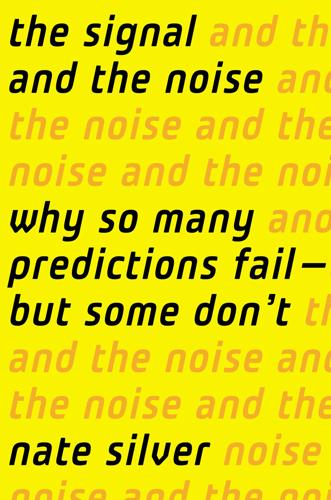
The Signal and the Noise: Why So Many Predictions Fail-But Some Don't
by
Nate Silver
Published 31 Aug 2012
It is not even clear that anybody knows what Bayes looked like; the portrait of him that is commonly used in encyclopedia articles may have been misattributed.19 What is in relatively little dispute is that Bayes was born into a wealthy family, possibly in the southeastern English county of Hertfordshire. He traveled far away to the University of Edinburgh to go to school, because Bayes was a member of a Nonconformist church rather than the Church of England, and was banned from institutions like Oxford and Cambridge.20 Bayes was nevertheless elected as a Fellow of the Royal Society despite a relatively paltry record of publication, where he may have served as a sort of in-house critic or mediator of intellectual debates. One work that most scholars attribute to Bayes—although it was published under the pseudonym John Noon21—is a tract entitled “Divine Benevolence.”22 In the essay, Bayes considered the age-old theological question of how there could be suffering and evil in the world if God was truly benevolent.
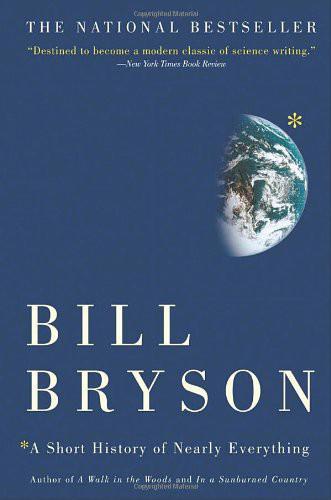
A Short History of Nearly Everything
by
Bill Bryson
Published 5 May 2003
Thanks almost entirely to Croll's persuasive theory, people in Britain began to become more responsive to the notion that at some former time parts of the Earth had been in the grip of ice. When his ingenuity and aptitude were recognized, Croll was given a job at the Geological Survey of Scotland and widely honored: he was made a fellow of the Royal Society in London and of the New York Academy of Science and given an honorary degree from the University of St. Andrews, among much else. Unfortunately, just as Agassiz's theory was at last beginning to find converts in Europe, he was busy taking it into ever more exotic territory in America.
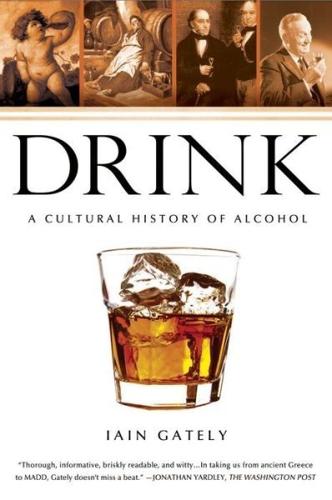
Drink: A Cultural History of Alcohol
by
Iain Gately
Published 30 Jun 2008
In contrast to his first visit, when he had worked as a jobbing printer and had been teased for being a water-drinking American, this time he had traveled as the official representative of the Pennsylvania Assembly to petition the king on its behalf. He was, moreover, a celebrated Enlightenment figure, an Honorary Fellow of the Royal Society, whose experiments with electricity had won him fame throughout Europe. The petition he had been appointed to present related to taxes imposed on Pennsylvania to support the cost of the Seven Years’ War, which were considered by the Pennsylvania Assembly to be inequitable. This was not the only point of difference between Britain and its American settlements to have emerged during the French and Indian War, as it was known in the colonies, whose prosecution had also aggravated preexisting disagreements.
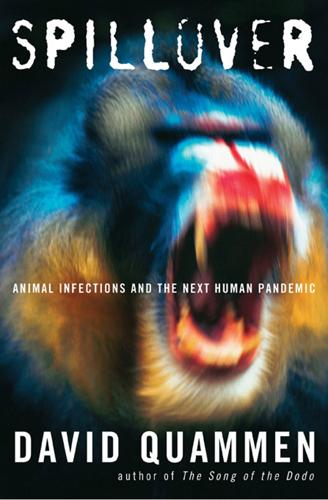
Spillover: Animal Infections and the Next Human Pandemic
by
David Quammen
Published 30 Sep 2012
“Influenza: An Emerging Disease.” Emerging Infectious Diseases, 4 (3). ———. 2004. “Wet Markets—a Continuing Source of Severe Acute Respiratory Syndrome and Influenza?” The Lancet, 363 (9404). ———. 2010. “William Graeme Laver, 3 June 1929–26 September 2008.” Biographical Memoirs of the Fellows of the Royal Society, 56. Weeks, Benjamin S., and I. Edward Alcamo. 2006. AIDS: The Biological Basis. Sudbury, MA: Jones and Bartlett. Weigler, Benjamin J. 1992. “Biology of B Virus in Macaque and Human Hosts: A Review.” Clinical Infectious Diseases, 14. Weiss, Robin A. 1988. “A Virus in Search of a Disease.”
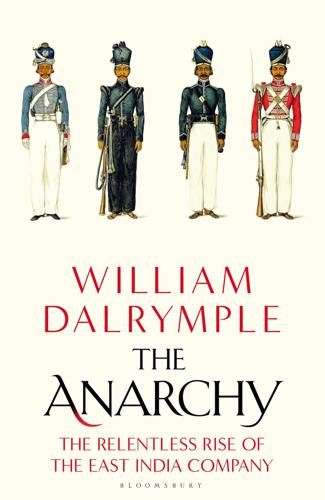
The Anarchy: The Relentless Rise of the East India Company
by
William Dalrymple
Published 9 Sep 2019
A frequent broadcaster, he has written and presented three television series, one of which won the Grierson Award for Best Documentary Series at BAFTA in 2002. He has also won the Thomas Cook Travel Book Award, the Sunday Times Young British Writer of the Year Award, the Foreign Correspondent of the Year at the FPA Media Awards, and has been awarded five honorary doctorates. He is a fellow of the Royal Society of Literature, the Royal Asiatic Society and the Royal Society of Edinburgh, and has held visiting fellowships at Princeton and Brown. He writes regularly for the New York Review of Books, the New Yorker and the Guardian. In 2018, he was presented with the prestigious President’s Medal by the British Academy for his outstanding literary achievement and for co-founding the Jaipur Literature Festival.

Accessory to War: The Unspoken Alliance Between Astrophysics and the Military
by
Neil Degrasse Tyson
and
Avis Lang
Published 10 Sep 2018
That roundness produces a (then mysterious) convergence of meridians as you approach the Poles, which means that heading sixty leagues east along the equator will take you to a different meridian than if you headed sixty leagues east along the Tropic of Cancer. Yet as late as the late seventeenth century, a navigator could rely on a plane chart, lose his ship, and nonetheless become a Fellow of the Royal Society.43 As for matters of hunger and health, a well-stocked expedition might carry enough pickled pork, salt fish, ship’s biscuit, cheese, onions, and dried beans to fill the seamen’s stomachs, and enough wine to give each man a liter and a half a day, but the casks of water soon turned foul, and scurvy took a heavy toll.44 Despite all the handicaps, with every voyage Portugal’s mariners and travelers added to empirical knowledge of what lay where in the western and eastern oceans, and what was seen when in the sky both above and below the equator.
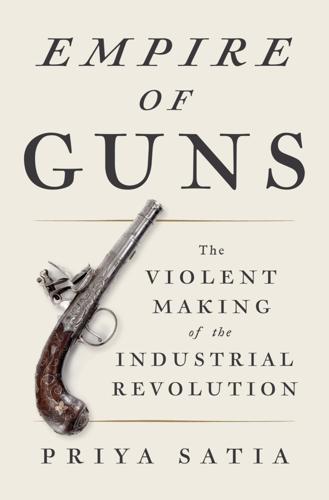
Empire of Guns
by
Priya Satia
Published 10 Apr 2018
His father’s action smacks of expedience, perhaps expected from this eternal worrier, who must have borne the Society’s admonitions with a great deal of anxiety. His son was made of stiffer stuff and determined to engage in an analytical contest with his judges. Some of his self-assertion, bordering on arrogance, stemmed from his consciousness of his cultural stature as a scientist and fellow of the Royal Society—as a practitioner of Enlightenment civility. His pose in engaging with the Society’s complaints was self-consciously analytical and modern. The distinction was temperamental, too. Galton Jr. had long experience in defending himself and his principles in public squabbles since his youthful clash with Thomas Hadley.
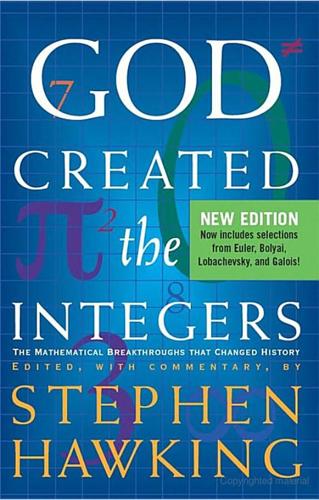
God Created the Integers: The Mathematical Breakthroughs That Changed History
by
Stephen Hawking
Published 28 Mar 2007
John Boole was its first curator and he made sure that the library was well stocked with Royal Society publications and great English and continental works such as Newton’s Principia, Laplace’s Mécanique céleste, and Lagrange’s Mécanique analytique. George Boole devoured this material reading it not once, but again and again, if necessary, in order to master it. Boole also benefited greatly from his acquaintance with one of the patrons of the Mechanics Institution, Sir Edward Bromhead, a Fellow of the Royal Society. Bromhead was a Cambridge graduate and a talented amateur mathematician who had an eye for mathematical genius. (He had recently been a sponsor of the Nottingham mathematician George Green.) Boole must have spent many hours visiting Bromhead at his family manor, Thurlby Hall, just outside Lincoln, and borrowing volumes from Bromhead’s library.
…
Mary Boole finally agreed to call a medical doctor on December 5. But it was already too late. By then Boole was in a deep feverish coma. Three days later he died. Boole achieved many honors in his life. Trinity College Dublin and Oxford Universities awarded him honorary doctorates. In 1857 he was made a Fellow of the Royal Society. But perhaps posterity has bestowed the greatest honor on Boole. Many computer languages have objects that take the values TRUE or FALSE. They are called “Booleans”! AN INVESTIGATION OF THE LAWS OF THOUGHT CHAPTER I NATURE AND DESIGN OF THIS WORK 1. The design of the following treatise is to investigate the fundamental laws of those operations of the mind by which reasoning is performed; to give expression to them in the symbolical language of a Calculus, and upon this foundation to establish the science of Logic and construct its method; to make that method itself the basis of a general method for the application of the mathematical doctrine of Probabilities; and, finally, to collect from the various elements of truth brought to view in the course of these inquiries some probable intimations concerning the nature and constitution of the human mind. 2.
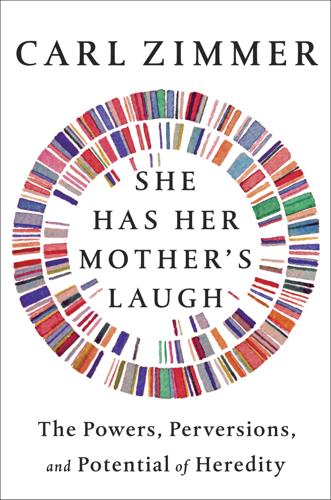
She Has Her Mother's Laugh
by
Carl Zimmer
Published 29 May 2018
Neuropathology Suggests a Disorder of Cellular Lineage.” Journal of Child Neurology 18:776–85. Flynn, James Robert. 2009. What Is Intelligence?: Beyond the Flynn Effect. Cambridge: Cambridge University Press. Ford, Edmund Brisco. 1977. “Theodosius Grigorievich Dobzhansky, 25 January 1900–18 December 1975.” Biographical Memoirs of Fellows of the Royal Society 23:59–89. Fordham, Alfred J. 1967. “Dwarf Conifers from Witches’-Brooms.” Arnoldia 27:29–50. Forsberg, Lars A., David Gisselsson, and Jan P. Dumanski. 2016. “Mosaicism in Health and Disease—Clones Picking Up Speed.” Nature Reviews Genetics 18:128–42. Fosse, Roar, Jay Joseph, and Ken Richardson. 2015.
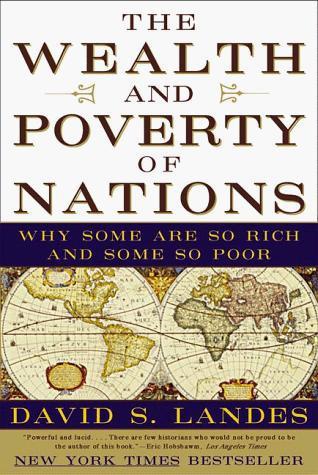
The Wealth and Poverty of Nations: Why Some Are So Rich and Some So Poor
by
David S. Landes
Published 14 Sep 1999
In the nineteenth century Alphonse de Candolle, from a Huguenot family of Geneva, counted that of ninety-two foreign members elected to the French Académie des Sciences in the period 1666-1866, some seventy-one were Protestant, sixteen Catholic, and the remaining five Jewish or of indeterminate religious affiliation—this from a population pool outside of France of 107 million Catholics, 68 million Protestants. A similar count of foreign fellows of the Royal Society in London in 1829 and 1869 showed equal numbers of Catholics and Protestants out of a pool in which Catholics outnumbered Protestants by more than three to one.16 Much of this no doubt reflected the greater access of Catholics in Catholic countries to the older liberal professions and the governing bureaucracy, and hence their preference for a different kind of schooling.
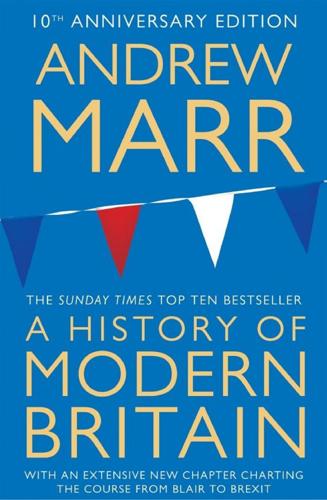
A History of Modern Britain
by
Andrew Marr
Published 2 Jul 2009
When Hitler came to power in 1933 it was agreed at cabinet level to try ‘to secure for this country prominent Jews who were being expelled from Germany and who had achieved distinction’ in science, medicine, music and art. Beveridge himself helped set up an organization to help Jewish refugees, the Academic Assistance Council, which, using public donations, helped 2,600 intellectuals escape. No fewer than twenty of them later won Nobel prizes, fifty-four were elected Fellows of the Royal Society, and ten were knighted for their academic brilliance.31 In their invasion plans for 1940, the German SS reckoned the Jewish population of Britain to be above 300,000, and hugely influential. Then there were the Irish, a big group in British life after a century of steady immigration, the vast majority of it from the south.
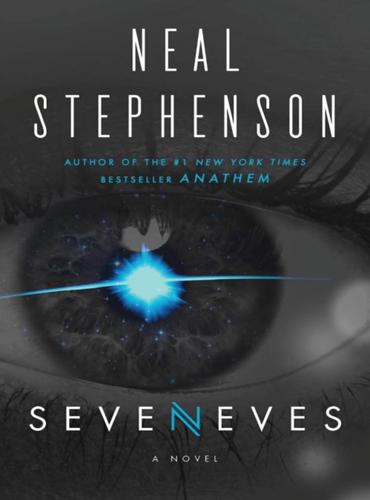
Seveneves
by
Neal Stephenson
Published 19 May 2015
Unfortunately for him, he had to do it in his drawing room in Falkirk, where there is, I’m sorry to say, gravity. He had to approximate this sort of thing”—Rhys nodded at the whirring loop of chain—“by building exceedingly clever machines.” “Then he must have been a clever man indeed.” “Fellow of the Royal Society and friend of Lord Kelvin, since you mentioned it. Do you see where I’m going?” “Well, a minute ago you gave me a fat clue by suggesting that I turn off all of the motors in the Siwi train. Were I to do that, it would go completely limp and become, for all practical purposes, a length of chain.”
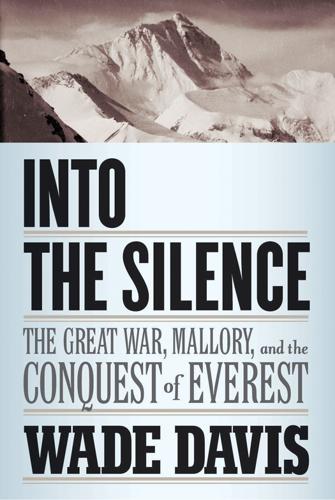
Into the Silence: The Great War, Mallory, and the Conquest of Everest
by
Wade Davis
Published 27 Sep 2011
In short order Hinks, with Younghusband’s tacit approval, would usurp virtually all administrative authority, reducing Eaton to irrelevance and eclipsing even Farrar, himself a dogmatic and formidable adversary; after numerous battles with Hinks, Farrar would ultimately resign from the committee in 1922. Arthur Hinks was a complex and difficult man. A fellow of the Royal Society, he was a brilliant mathematician and academic cartographer, a world authority on map projections who, ironically, had little interest in exploration and no experience whatsoever of life on an expedition. Before coming to the Royal Geographical Society in 1913, he had spent much of his career sequestered at Cambridge on the staff of the University Observatory, calculating the mass of the Moon.
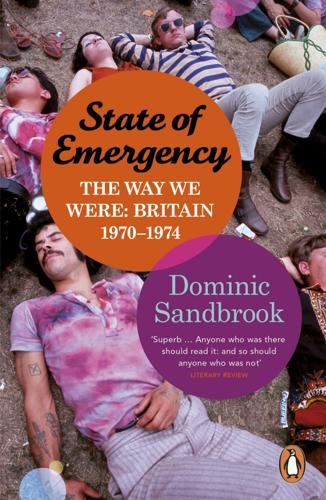
State of Emergency: The Way We Were
by
Dominic Sandbrook
Published 29 Sep 2010
In the Guardian, Anthony Tucker compared the Blueprint’s impact to that of the Communist Manifesto; in The Times, a long leader concluded that its thesis was ‘too plausible to be dismissed’; in the Sunday Times, Lewis Chester wrote that it was ‘nightmarishly convincing’; and even the Daily Mail thought that its ‘prophecy of a world blindly careening towards self-destruction remains profoundly disturbing’, and that ‘the prophets of doom deserve to be heard with as much respect as those who continue to worship the Gross National Product’. If that were not enough, a week or so later 187 scientists, including nine Fellows of the Royal Society and twenty university professors, signed a letter to The Times explaining that though they were unable to sign the Blueprint because of its errors of fact or emphasis, they welcomed it as a ‘major contribution to current debate’ and a reminder that only population control, conservation and recycling could save the planet.

Empire of Things: How We Became a World of Consumers, From the Fifteenth Century to the Twenty-First
by
Frank Trentmann
Published 1 Dec 2015
The microscope, optical glass and other new instruments showed that ‘we have a far greater number of different things reveal’d to us, than were contain’d in the visible Universe before.’ Trade and novelties injected constant fresh energy into Britain: the more the better.55 Novelties were also news, and the latest goods were promoted by the burgeoning market for printed news. In addition to selling tea and coffee, the apothecary John Houghton, a fellow of the Royal Society, ran a weekly, single-folio commercial newsletter between 1692 and 1703. Sold at two pence, the Collection for Improvement of Agriculture and Trade mixed information on the price of coal and company stock with adverts for chocolate and spectacles. These texts were about more than this or that novelty item.
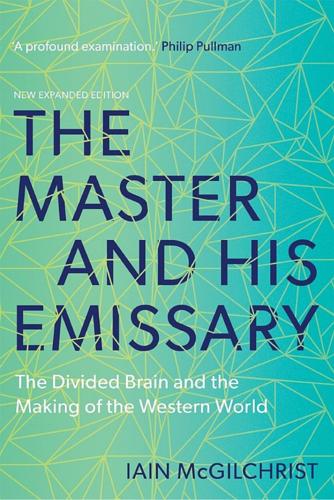
The Master and His Emissary: The Divided Brain and the Making of the Western World
by
Iain McGilchrist
Published 8 Oct 2012
THE MASTER AND HIS EMISSARY IAIN McGILCHRIST is a former Fellow of All Souls College, Oxford, where he taught literature before training in medicine. He is an Associate Fellow of Green Templeton College, Oxford, a Fellow of the Royal College of Psychiatrists, a Fellow of the Royal Society of Arts, a Consultant Emeritus of the Bethlem and Maudsley Hospital, London, and has researched in neuroimaging at Johns Hopkins University, Baltimore. He now lives on the Isle of Skye, where he continues to write, and lectures worldwide. Copyright © 2009 Iain McGilchrist Introduction to the New Expanded edition © 2018 Iain McGilchrist First published in paperback 2010 New Expanded paperback edition published 2019 Figures 1.1, 1.2, 1.3, 1.4, 2.1 and 2.2 by Advanced Illustrations Ltd M.
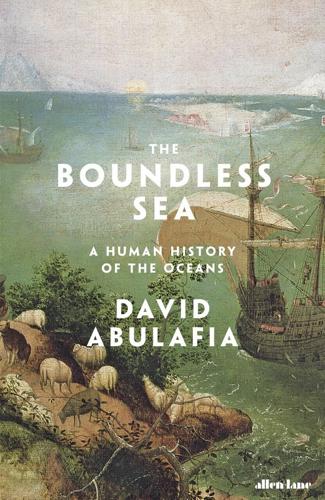
The Boundless Sea: A Human History of the Oceans
by
David Abulafia
Published 2 Oct 2019
But social reform so far away was of no interest to the EIC in London. He was summoned back to London, and was disillusioned by the return of the East Indies to the Dutch in 1816, following the fall of Napoleon. Raffles redeemed his reputation back home – his scholarly interests were acknowledged when he became a Fellow of the Royal Society and received a knighthood, thanks to the support of Queen Charlotte. He used his time after his recall to London well, writing a History of Java in two volumes, which was as much a compendium of geography, natural history, ethnography and archaeology as a somewhat higgledy-piggledy history in the traditional sense.